

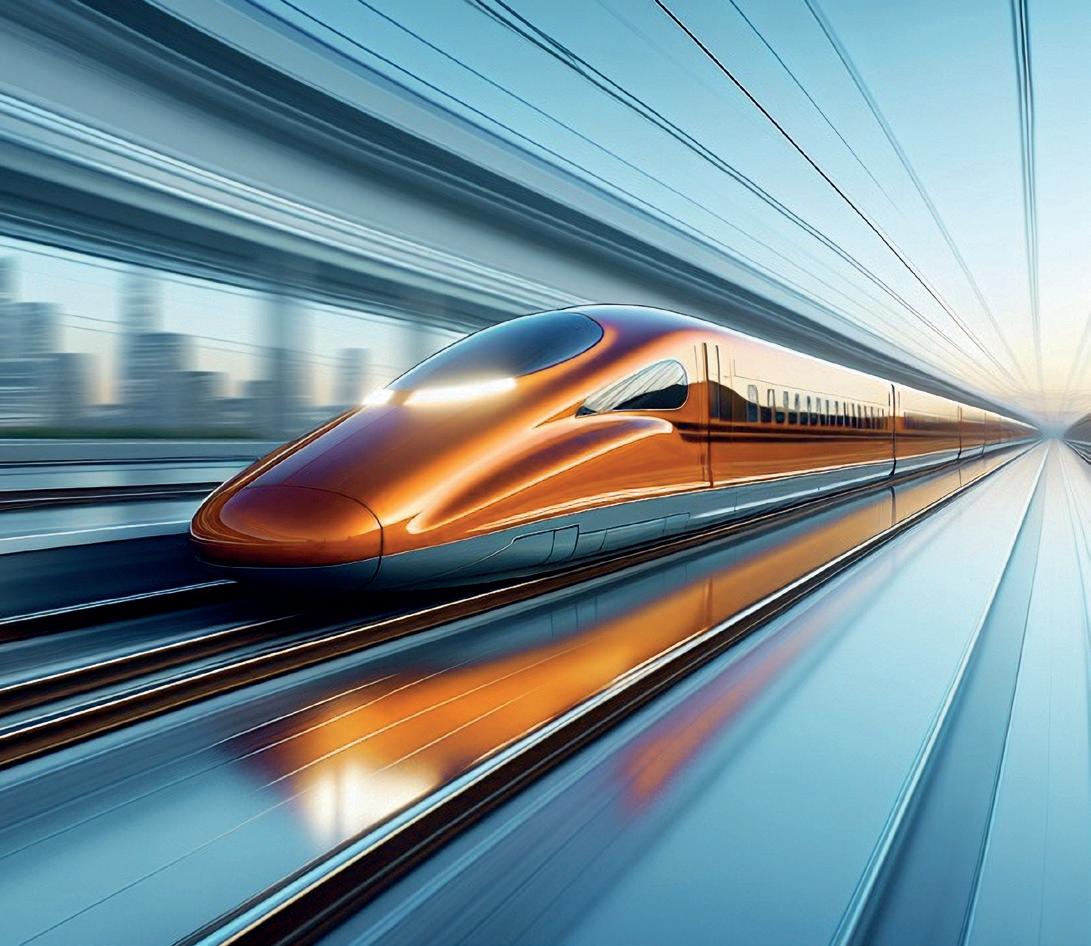
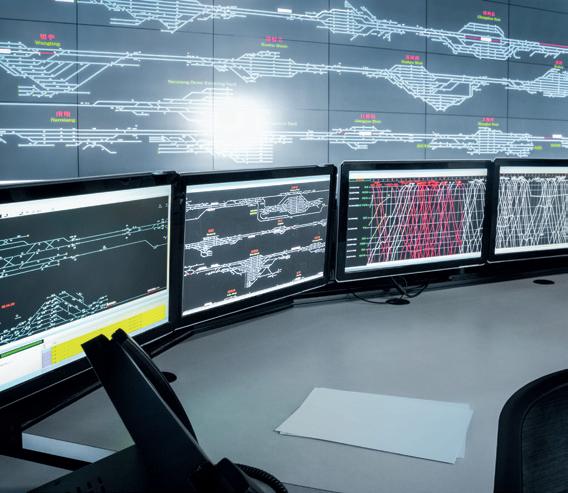






Toufic Machnouk
1 in 43 quintillion

Liam Henderson
Innovation is the new norm

Richard Carr
GBR can help or hinder innovation


Sponsored by
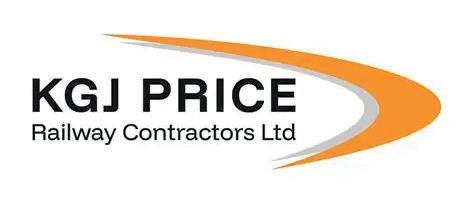

Showcasing the latest rail innovations and technical developments.
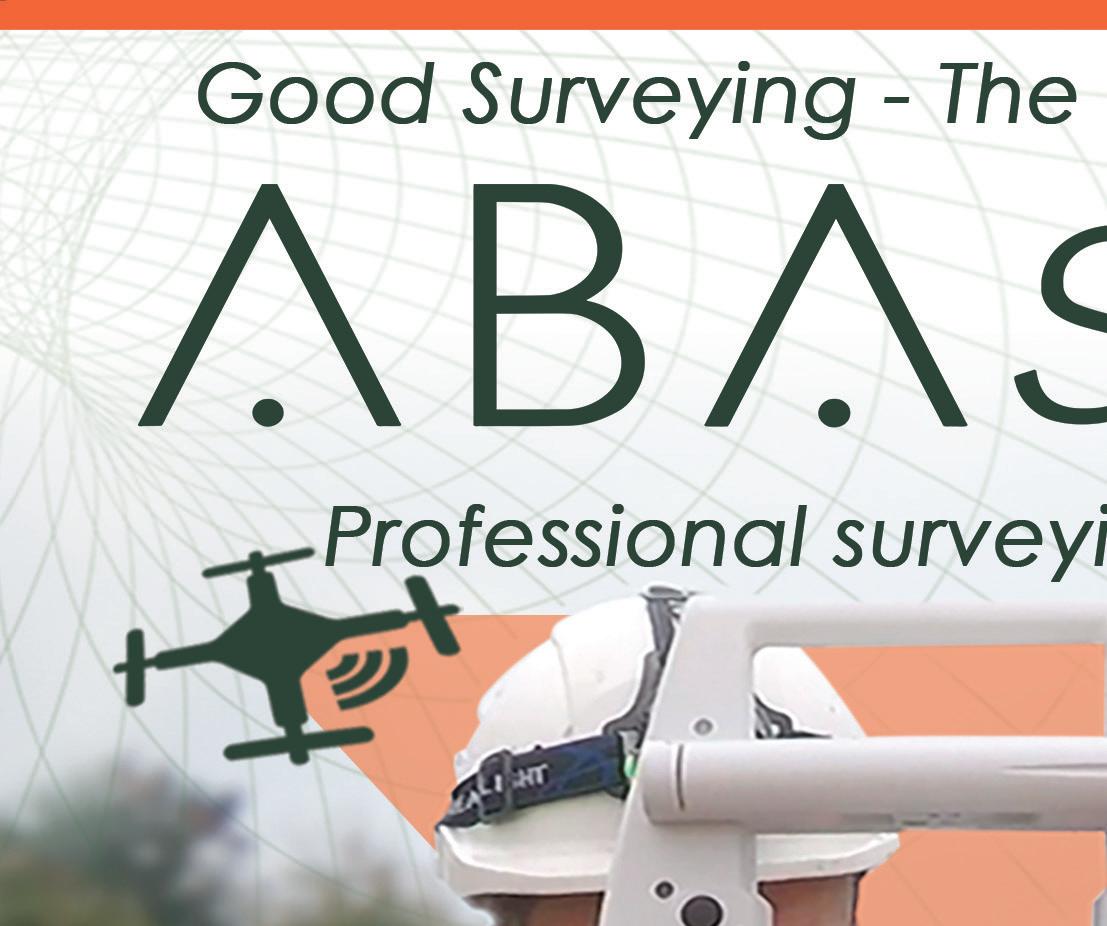
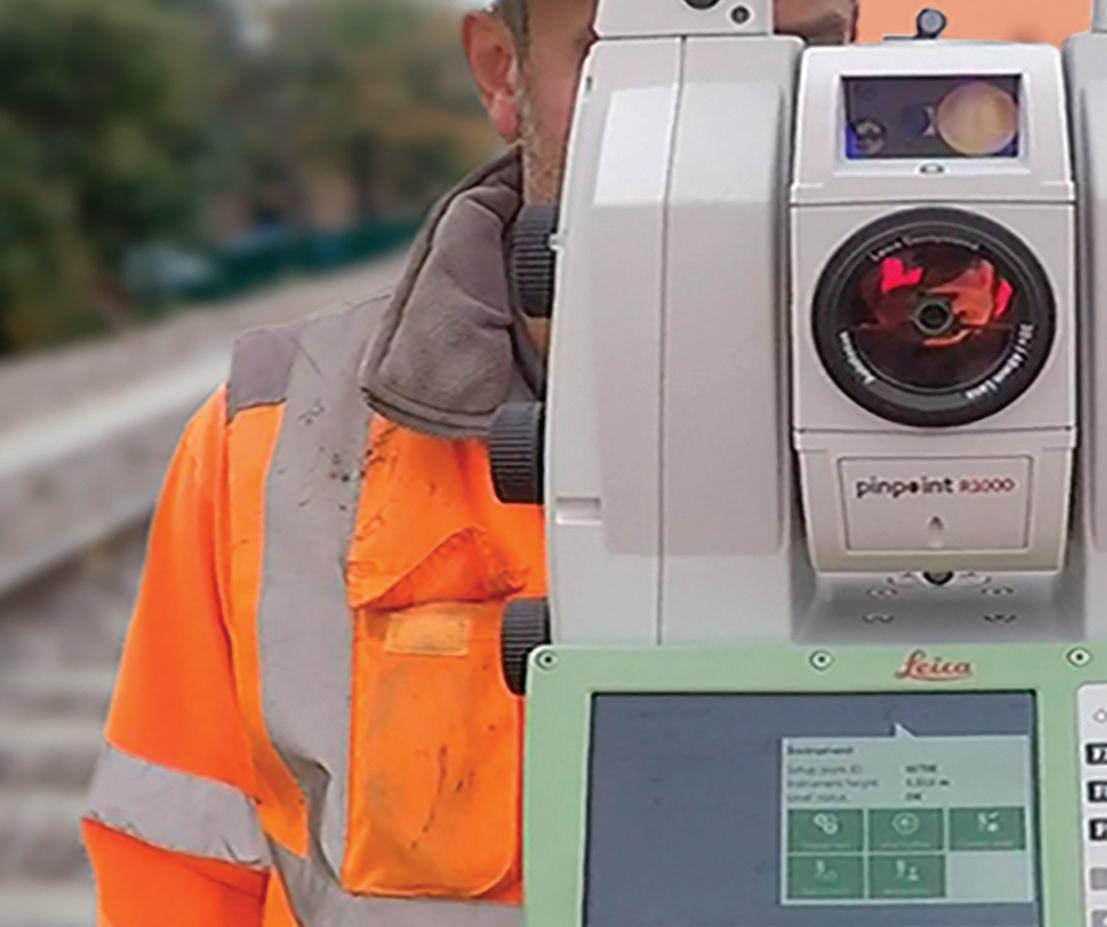
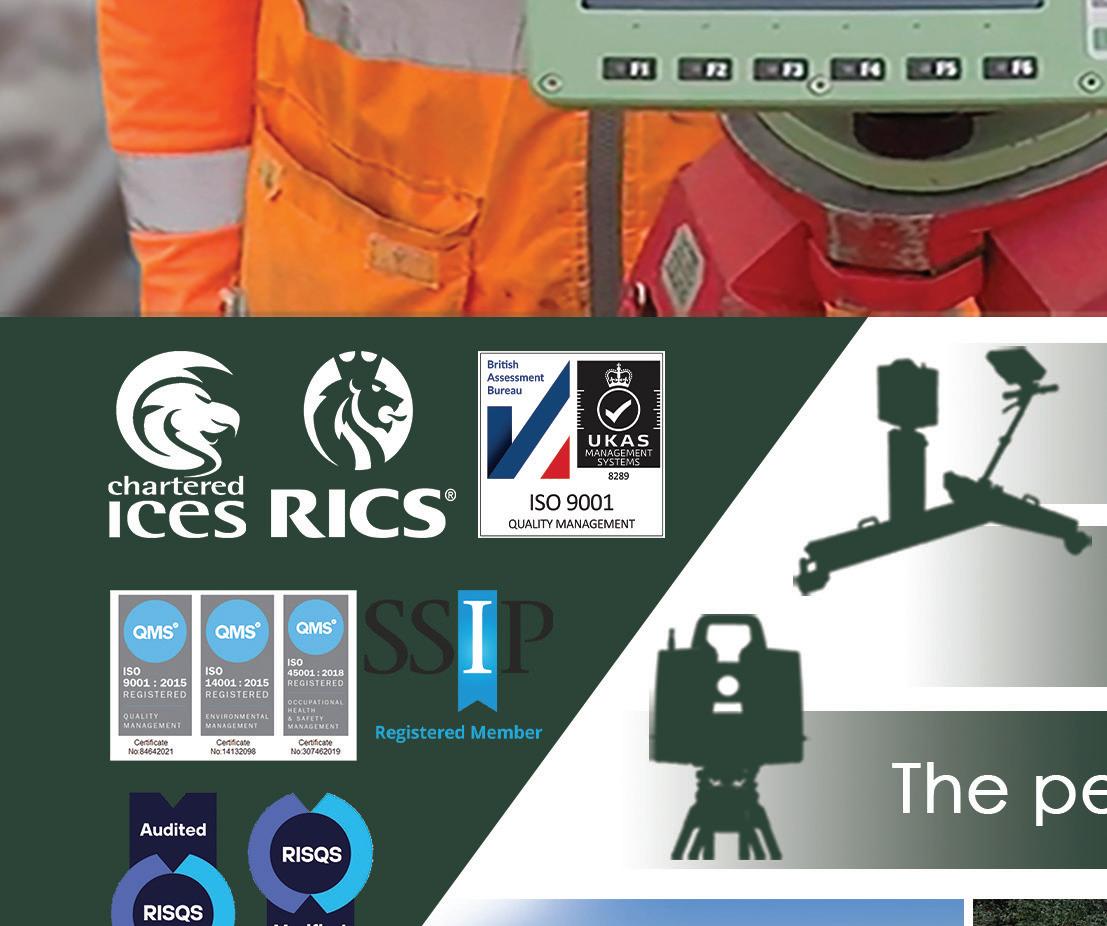


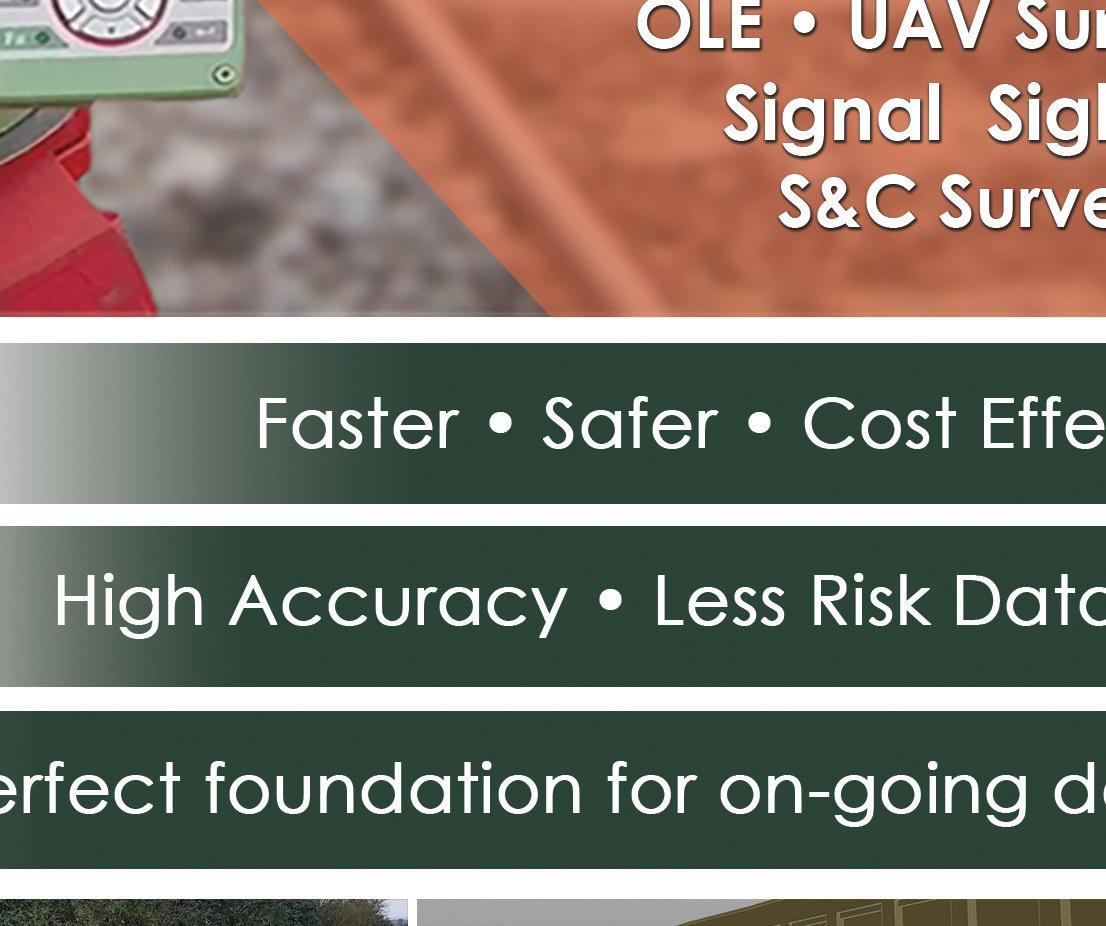
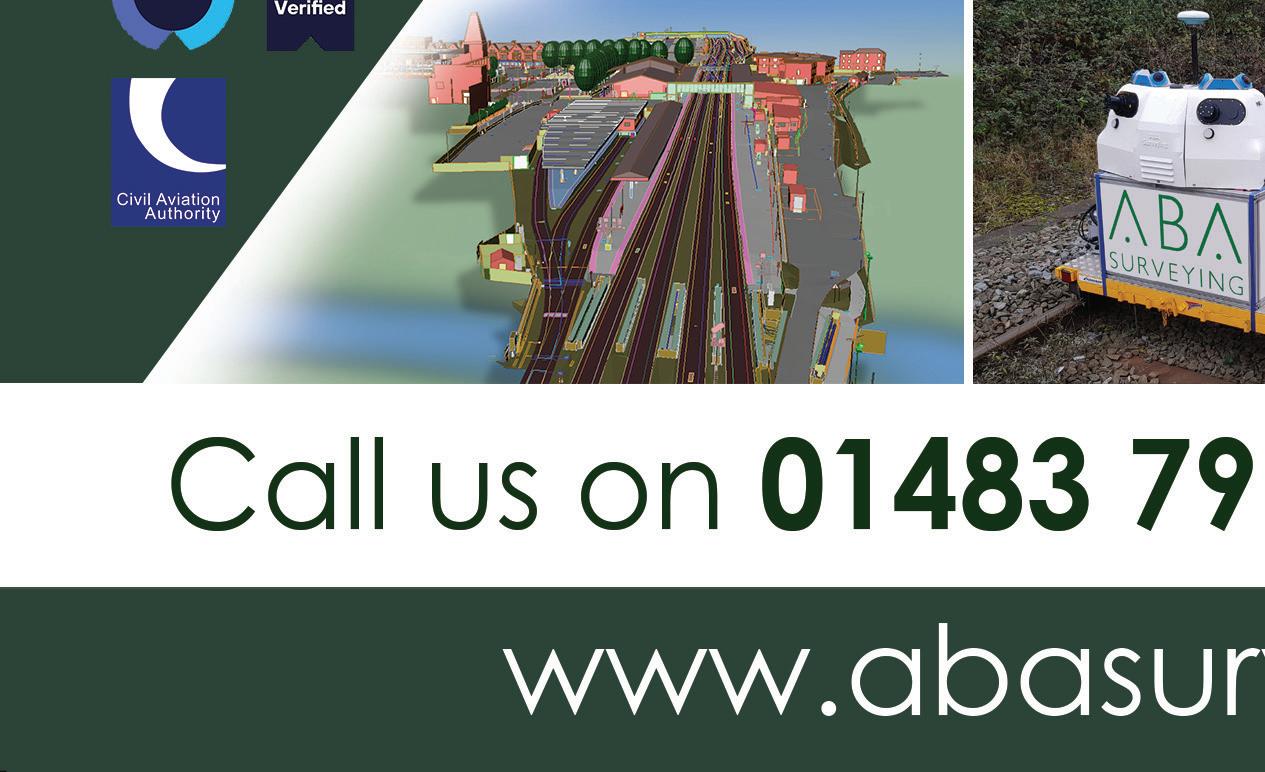
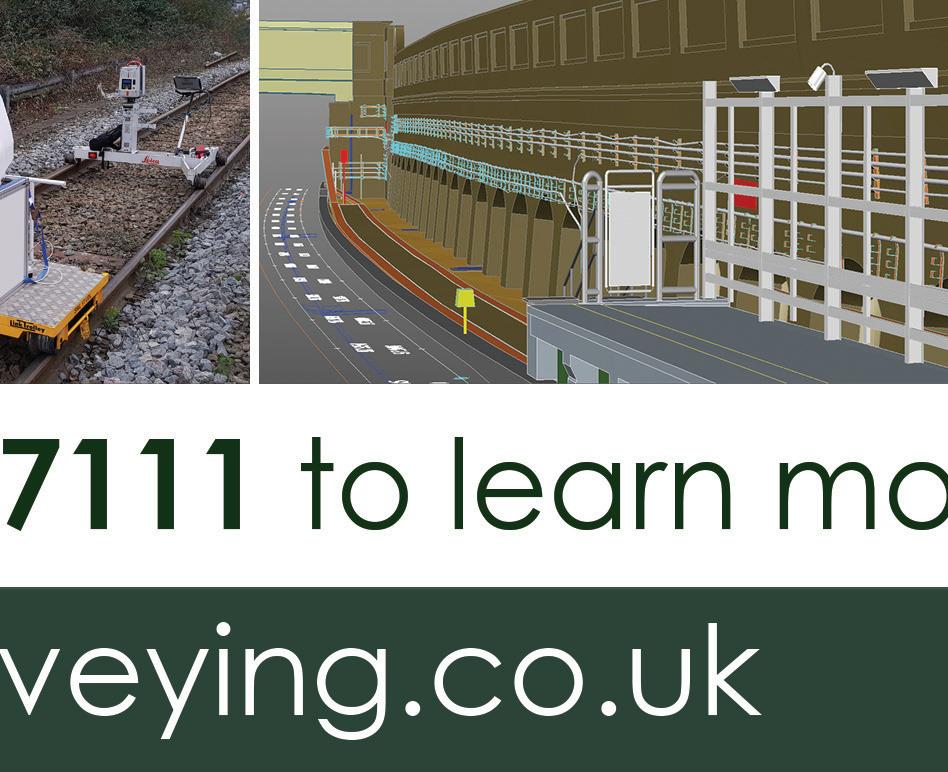



Rail Business Daily (RBD) has always had the objective of being a force for good for the rail industry – providing platforms for any businesses already working in the sector, or for those who are looking to do so, to share their good news, promote their products and services, and encourage participation in their events.
It is therefore fitting that RBD has created this special edition of the popular Rail Director magazine that is specifically designed to allow organisations to celebrate and showcase their latest innovations and technical breakthroughs.
In a world where it is vitally important to implement sustainable solutions and to achieve net-zero targets, rail has a hugely important part to play both in how we travel and how the goods that we use are transported to their destination.
This publication exemplifies the vibrancy and innovation that is taking place right now across
the sector and illustrates some of the exciting developments that lie ahead. It also demonstrates the range of technologies and organisations that are involved in innovation on our railways. From major innovations from the likes of Siemens Mobility and Hitachi Rail to more focused developments from small to medium-sized enterprises (SMEs) such as Echion Technologies’ improved XNO® battery-anode material and Klüber Lubrication’s specialised sustainable lubricants.
2025 has been an exciting time for the rail industry as it celebrates 200 years of operation, and this publication illustrates that, while the sector is celebrating its past, it is most definitely looking forward to the future.
It has been a great privilege working on this special edition magazine and I would like to thank everyone who has contributed and made it possible. No matter which part of the industry you work in, it is hoped that you will enjoy finding out more about the latest
developments and technical breakthroughs. If you would like to tell your story or promote your innovations in Rail Director magazine or in future special editions, please do not hesitate to get in touch.
This publication exemplifies the vibrancy and innovation that is taking place right now across the sector and illustrates some of the exciting developments that lie ahead
Dean Bruce, Managing Director dean@railbusinessdaily.com 07415 063 190 %

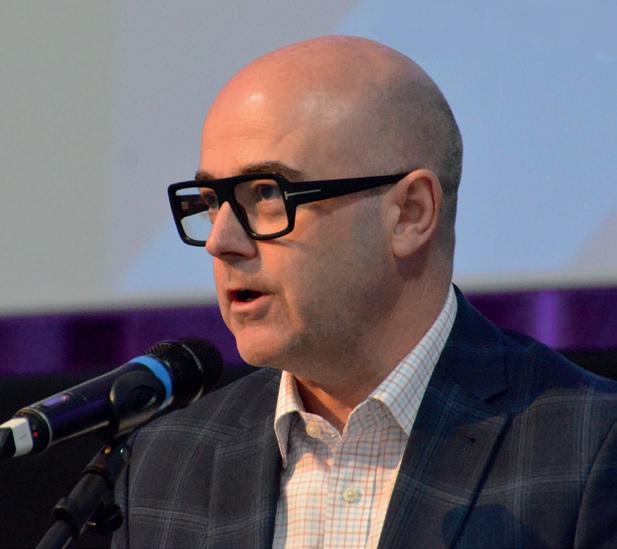
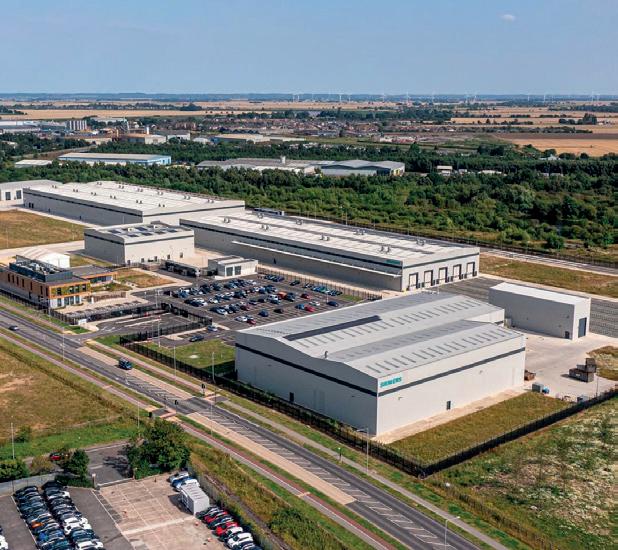

Rail Innovation 2025 is a special supplement from Tel: 0113 208 2620 Sales: 07494 529 803

Writers: Nigel Wordsworth, Rosie Crampton
Advertising Sales: Christian Wiles
chrisw@railbusinessdaily.com
Marketing Sales: Sarah Hopton sarah@railbusinessdaily.com
Production Executive: Mia Hargreaves
Design: Dean Wanbon

Published by an asset of the Railway Industry Association. Trading address: c/o 16 Smith Square, Kings Building, London, SW1 3HQ
Printed by Manson Group.
(©) 2025

All rights reserved.
Reproduction of the contents of this publication in any manner whatsoever is prohibited without prior consent from the publisher. The entries contained within the Directory are based on information provided by the respective companies and the publisher cannot be held responsible for any errors or omissions. The views expressed in the articles reflect the author’s opinions and do not necessarily reflect the views of the publisher or editor. The published material, adverts, editorials and all other content is published in good faith.
5 What does a Rubik’s cube teach us about the reality of innovation?
Toufic Machnouk outlines his four principles for successful innovation
8 Innovation that sticks-making change routine
Liam Henderson suggests that innovation should be the new norm
10 Overcoming the barriers to innovation in UK rail
Richard Carr considers the difficulties that the supply chain faces
12 Optimising project delivery at c2c
Sam Fowler and Alex Whybro outline c2c’s innovative approach to project management
14 Unblocking innovation
James Heslop explains some of the steps being taken to speed up innovation
16 UKRRIN: Brilliant minds and excellent facilities
William Powrie describes the relationship between the UK’s top universities and the rail industry
18 Collaboration and commitment: The keys to rail’s innovation
Luisa Moisio considers why rail needs innovation, and how best to deliver it
20 Doing things differently
Kevin Bonanno believes that innovation is a mindset and the sector must embrace change
22 Innovation on a global scale
Innovations from Siemens Mobility will power the trains of the future
24 True innovation brings its own rewards
Alan Barrow considers what is innovation and what isn’t
26 Guiding rail innovation across the Valleys of Death
Some innovations need specialist assistance to get them adopted onto the railway
27 RIN Events: A decade of driving rail innovation and connection
28 Opening the door to innovation
A train’s doors are often taken for granted, but innovation can bring many benefits
30 A new age of opportunity in rail innovation
32 A first for battery power
Hitachi Rail has successfully trialled hybrid battery-powered trains and won its first order
34 The Unipart innovation eco-system
How Unipart delivers innovation through collaboration and expertise
36 Structures inspections from the comfort of an office
Steve Lock reveals that 360° photogrammetry is reducing the cost of inspections
38 Fast-charging the electrification of Britain’s railways
Tyler Andrews considers how XNO® batteries can enhance GWR’s fast-charge findings
40 Ask the right questions
Andy Seccombe says that innovation is simpler once the challenge is properly understood
42 Driving a culture of constant innovation
Infrastructure consultancy Aarvee is continuously raising standards
44 How do you innovate if you are innovating every day?
When innovation is the norm, how will railway engineers go one step further?
46 Innovation spotlight
Three innovators reveal their latest advances
47 Driving smarter, safer, and more sustainable delivery
Ewan Keir looks at innovation on the permanent way
48 The innovation rail needs to protect its workforce
Simon Hochhauser writes about the importance of embracing mobile communications
50 Lighting the way in rail innovation
David Woodcock discusses how adopting new lighting technologies can bring major benefits
52 Stay ahead of autumn conditions with LaserTrain
Experience reliable, high-speed rail cleaning designed with the latest laser technology
Toufic Machnouk, Managing Director of GBRX, outlines
his four principles for successful innovation.

have always been fascinated by seemingly impossible things.
As a child, the Rubik’s cube was a hands-on example of such a thing. Like many, I spent hours trying to solve it, frustrated with its difficulty. You solve one bit and then must break it to solve another.
Determined as I am, I learnt the principles and methods and eventually, with lots of practice, I was able to see the patterns quickly enough to solve a randomly scrambled Rubik’s cube in about 30 seconds.
Recently, I realised that the cube, as an inherently complex problem, embodied the practical principles of innovation that we were creating and deploying for the sector through GBRX.
The cube is a system of similar but unique particulars, with interdependent and changing relationships, constraints and freedoms – an unimaginable number of possible permutations – and it manifests the way the world behaves through configuration changes.
So, I demonstrated four of these principles recently during my keynote speech to the Rail Forum Annual Conference while solving a cube at the same time.
I cannot explain enough just how hard it is to do that while talking. But this fun demonstration has captured imaginations and brought some difficult concepts into something we can literally all hold in our hands.
At first glance, reality can seem simple, when it is in fact immeasurably complex. Rubik’s cube only has 26 unique pieces, which doesn’t sound like many. Yet they create 43 quintillion possible combinations. That’s 43 with 18 zeros.
Humans can’t grasp large numbers. To put that in perspective, 43 quintillion is 100 times larger than every second since the beginning of time. Let that sink in for a moment. I can’t even imagine the number of seconds in one lifetime.
In fact, a random scramble has probably never been seen by any human before. So, every starting point is unique, and any system where every starting point is unique is, by definition, complex.
Innovation has principles, models and methods
Toufic Machnouk. Image: Rob Finney/RIA
What does the cube teach us about complex systems?
We know there is virtually no chance of solving it for a desired outcome randomly. This is what an organisation is effectively doing when running random innovation pilots, in the hope that something might just stick.
We know that if you hand this to someone who doesn’t understand it, their odds of solving it are basically zero. That is akin to an organisation asking someone unqualified, or demanding of its people generally, to just innovate.
We know that if you try to solve one side only, which is immeasurably easier to do – we can call this the quick win side – it will create more constraints that then make it impossible to solve the rest. We see this in organisations as an attention deficit, because resources are scarce and their attention is not on the thing that solves the problem, or when a business applies a technology without addressing the complex ecosystem it works within and then wonders why things have become harder rather than simpler.
We also know that, if you try to solve this with the wrong beliefs and methods, you just won’t solve it.

It is effectively the same as trying to do so randomly but with the illusion of a method, which may even have a name. That’s when people say, “We’ve tried innovation before, and it didn’t work.”
So how do you solve a complex problem?
One of the most remarkable innovators in the world, Google X, says this about the question: you must start by loving the problem.
Why is Google X talking about love?
Let’s think about it. When you love something, how do you see it? Is it the same as other things? When you love something, you want to understand everything about it, how it works, how it feels, what constrains it. You are compelled towards it in a different way.
To love this problem is to understand its anatomy, its combinations, and how it changes, how it feels. More important still, to love a problem is to spend time deeply immersed in the problem with insatiable curiosity, exceptional expertise, restless dialogue and time to explore its permutations and limits in different conditions.
Only then can you start to really understand something complex and see what’s actually possible.
So, the first principle is this: the only way to solve complex problems by innovating is to start by loving the problem.
Complex problems can’t be solved in one leap because they have an unimaginable number of permutations and the constraint of inertia, meaning how sticky the status quo is.
You need multiple progressive steps, each revealing new possibilities not there before, but here’s the catch, you must start by solving the hardest one first.
But why the hardest one? Shouldn’t we just bank the easy ones first to make some progress?
Let’s think about this. If you don’t address the hardest problem first, will you ever actually determine if what you are pursuing is even viable? The hardest remains unsolved, and remains very hard, and the easy stuff can just be solved anyway.
So, you pursue the quick wins, then you look back and find no new possibilities were created, but you depleted the attention of your scarce resources on easy things when the hard things need a lot of attention.
Now doing so might have some value in reality, for example in helping some stakeholders engage in change, but that’s not the same as innovation. That needs to be treated as a necessary cost in the art of enabling change.
Google X calls this tackling the monkey first. But why are they talking about monkeys?
The example they give is this: if you need to teach a monkey to read Shakespeare while standing on a stool, what would you do first?
They say, don’t start by building the stool, because that won’t determine if it’s even possible.
Figure out how you’re going to teach the monkey. Learn if anyone has tried this before. If so, what worked and what didn’t. Then start iterating purposefully to determine how you are going to do it, what it’s going to take, what possibilities it will expose,
what false positives it might create, whether you can go all the way or only part of the way, and so on. That is what’s meant by the term ‘fail fast’, which is often used incorrectly.
For the cube, without an omniscient power or a cheat app, you always start with the fixed points first. These are the biggest constraints in this system. If you don’t start with the fixed points first, you will not be able to overcome the constraints of them later down the line.
So, the second principle is this. You must have the resolve to tackle the monkey first, so that each step can determine if what you are trying to do is more or less possible.
The bottom line is this. There is no such thing as innovation without displacement.
To solve this cube, I must displace the pieces, to move and change their configuration.
Every system has a configuration, a status quo, whether you know it or not. To change that system or part of it you must displace pieces out of their current configuration.
Now when dealing with complex problems, the whole process is one of progressive displacement, and each one creates new configurations. Some show you what doesn’t work. Some show you what does. And the skill of innovation is to progressively surface what does work and to move towards it.
So, the third principle is this. You can only say you have innovated if you can say that you have displaced in the current system.
Innovation can be learnt
Innovation is often romanticised in our culture.
When we think of innovation, what might come to mind is wacky ideas, wantonness, just trying stuff, and seeing what sticks. A randomness, or a desirable chaos.
These are cocktails of partial truths. It is not these things.
We also think of great innovators who seem out of this world. Inaccessible. Complete outliers. And yes, there is an outlier nature to innovation. It is not in the average by definition.
You do need to see new possibilities in this immeasurably complex world, and, by definition, you need outlier tenacity.
What does that mean? It means to bring about displacement, you need more tenacity than a meaningful sum of the others in that system who will resist change even if only as a result of their current configuration in it. That’s as fundamental as physics itself.
But here’s the good news. With the right conditions, it is learnable. Innovation has principles, models and methods. How do you think they can be learnt?
Of course, through purposeful action and lots and lots of purposeful practice. We all did this as children naturally.
Children haven’t yet formed their mental models of the world both physically and socially, so they are not yet bound by rigid assumptions and fear of failure. We used to test our mental models of the world repeatedly to find what worked.
By definition almost all new ideas don’t work, that’s exactly the point.
We saw new possibilities, and we were willing to experiment and collaborate in the uncertainty of their viability to see what works.
That’s why, quite remarkably, five-year-olds consistently outperform business executives, business teams and MBA graduates in complex team challenges, like building the tallest possible spaghetti tower that can support the weight of a marshmallow. Take a moment to realise how remarkable that is. Teams of five-year-olds consistently outperform teams of business executives.
So, we were all inherent innovators once. But why do the five-year-olds win?
Because the whole process of becoming an adult is one of forming and solidifying mental models of the world and ourselves. Our brains are predictive machines based on these mental models. Every second of every day our brain is perceiving and predicting. You couldn’t function if you had to rediscover the world and how it behaved every day.
This rigid predictive brain craves certainty, and we harden our mental models of the world with time. Some of us more than others.
The more open you can be to the possibility that your mental model might be wrong or just incomplete, the more capable you become of enriching your perspective with that of others. We naturally all have slightly different mental models of the world, so one of the best ways to create new possibilities is by working with others. The challenge is that it takes a low ego and deep curiosity about what they see and why they see it that way. That’s what is meant by cognitive diversity.
Now, anyone who’s tried to change a stubborn habit as an adult, and to learn a difficult new habit as an adult, knows all too painfully well that it is as painful as eating glass.
So what’s it like, trying to change the habits of a whole organisation of people?
It takes sound principles, models and methods, and difficult choices, and it takes lots and lots and lots of purposeful painful disciplined practice. Just think of the depth of the mental models you are trying to change. And it still may not work as desired. It’s the same with the cube. I could explain it now in a few paragraphs, but even if you grasped it right away, you still couldn’t do it without the pain threshold to eat glass.
But with that, this seemingly impossible one in 43 quintillion problem, that no one had ever seen before, can be solved by a mere mortal like me.
So the next time you wonder why innovation feels so hard and why there isn’t more of it, just remember this. The distance between you and the solution to a seemingly impossible problem that no one’s ever seen before is the following:
• The capability to love the problem.
• The resolve to tackle the monkey first.
• The outlier tenacity to create displacement in an inherently resisting system that is much bigger than you.
• And the pain threshold to somehow enjoy relentlessly eating glass.
So, it is hard. It is exceptional by nature. But it is real. And it is learnable.
We owe our progress in the world to those who did. And we can choose to be those who do for our time.
It takes lots of purposeful, painful, disciplined practice
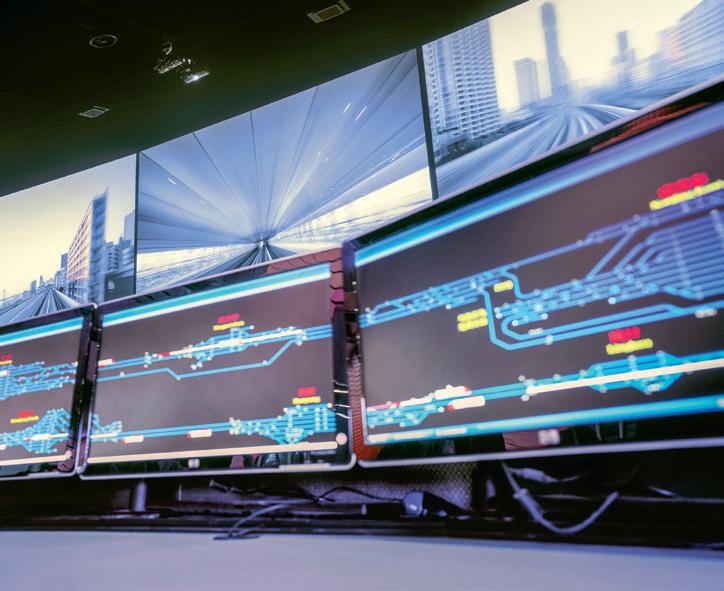




Liam Henderson, Chair of The Rail Innovation Group, suggests that innovation should be the new norm.
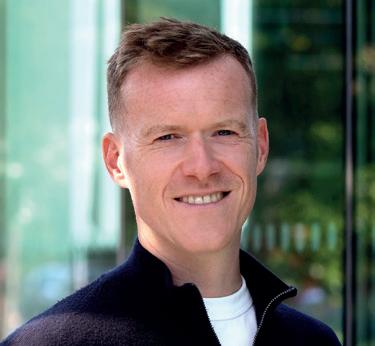

Innovation in rail is often framed as kit: new trains, faster lines, clever sensors. Useful, but only part of the picture. Equally important are the back-end enablers to innovation: governance, procurement, data and a culture where new ideas take root. Get these right and smaller suppliers can contribute at pace. Get them wrong and even good technology stalls.
I write this as someone who chairs a community of start-ups, digital SMEs (small and medium-sized enterprises) and rail professionals – all advocating for the role that small companies can play in the modernisation of rail. The successful projects I’ve seen within the community have a consistent narrative: small, well-designed steps build evidence and trust. Evidence and trust buy permission to scale.
I’m also conscious that the railway is anchored in heavy engineering, rigorous safety cases and long-life assets that understandably move on more cautious cycles. This piece focuses on the digital layers: systems, data and user-facing information. These are the areas where incremental change can show early value alongside the engineering work.
The railway faces tighter budgets, ageing assets, carbon commitments and rising customer expectations. There is no single project that will answer all of that.
Innovation helps because it allows progress in shorter cycles, measured against outcomes, with scale following evidence. It is a management discipline rather than a hunt for the next transformation.
Applied with care, it reduces risk rather than adding to it.
Innovation lives in the system conditions. Policy that learns, procurement that invites, data treated as infrastructure, and teams that are trained and trusted to improve things a little each time. Technology then has a chance to help, whether that is a better dispatch tool, cleaner accessibility data or an AI assistant that can coordinate help during disruption. The true value of small companies can be harnessed when these
organisations can see a navigable and fair path for their products and their business investment.
To mix a metaphor: if you create a legible landscape, small suppliers can see where their solutions can have most benefit.
If small suppliers help rail to innovate, how can rail enable them?
One challenge in the rail sector is that many briefs still describe the solution in detail. This risks favouring incumbents and locking in yesterday’s interfaces. A problem-first, outcome-based approach opens the door to newer suppliers without putting core operations at risk.
Solving this cycle would start by defining the operational result or user requirement, not the tool itself. Invite suppliers to propose routes to those ends.
Small companies can be specifically targeted through smaller modular lots. Break programmes into interoperable components with clean boundaries and open interfaces. Rail will always rely on large contractors for mega-project delivery, but bite-size
lots would create manageable workloads that can be offered to smaller suppliers. Eventually, the rail sector would benefit from an ecosystem of SMEs in which smaller firms can contribute specialist modules behind stable interfaces.
In a world where Silicon Valley is releasing a new AI product almost every week, the traditional four-year framework list risks locking in obsolescence. It must be possible to design compliant public procurement commissions that can adapt to ever-increasing digital capabilities.
The stakes are rising
Artificial Intelligence (AI) is moving from analysis to action. Agentic tools can plan, replan and trigger support without a person in the loop every minute. In rail, that could mean an assistant that researches, books and manages journeys around disruption, or a system that reconfigures station flows during unexpected events. It might monitor, predict and organise maintenance on a rolling cycle, including moving people and parts to site.
These systems behave well only on clean, accurate, governed data with clear rules for identity, permissions and audit. If feeds are late, the agent hesitates. If authorisation is unclear, it cannot act.
If rail gets this right, the sector will benefit early from faster passenger improvements, better resilience, lower costs and, potentially, more investment.
If contracts, data rights and interfaces remain fragmented, others will move first. Travel retailers, mapping firms and payment platforms will set the customer expectation using their own data products and business model. This will be a lost opportunity for rail.
There’s still time to shape this future: the rail sector should use its coordinating influence to set data
rules and interfaces on its own terms. Initiatives such as the Rail Data Marketplace are already helping to tease out organised datasets and encourage data-led product development by SMEs.
Smaller suppliers bring pace, sharp focus and ideas imported from other sectors. The reason is structural as much as cultural. Small cloud-native companies carry less organisational drag, so decisions travel quickly, and they tend to build on modern, cloud-based stacks making their solutions interoperable from the start.
There is also an ecosystem effect. Where data and interfaces are open, SMEs appear and start solving problems that large suppliers would not prioritise. TfL’s open data programme is the clearest transport example. Deloitte’s study found annual benefits and savings up to £130 million, supported by a developer base in the tens of thousands and hundreds of live apps. The point is not the number. It is that a permissive data platform attracted a competitive market of small builders who delivered features and user experience at a fraction of the cost of doing it in house. This represents an even bigger opportunity for the GB rail network overall. By contrast, heavy reliance on closed frameworks and large, long contracts can suppress competition and make it harder for smaller firms to join mid-stream. The National Audit Office and subsequent parliamentary scrutiny have both warned that overuse of frameworks narrows the field, pushes up bid costs and can reduce transparency. That matters in rail, where innovation often sits in a small module at the edge of a larger programme.
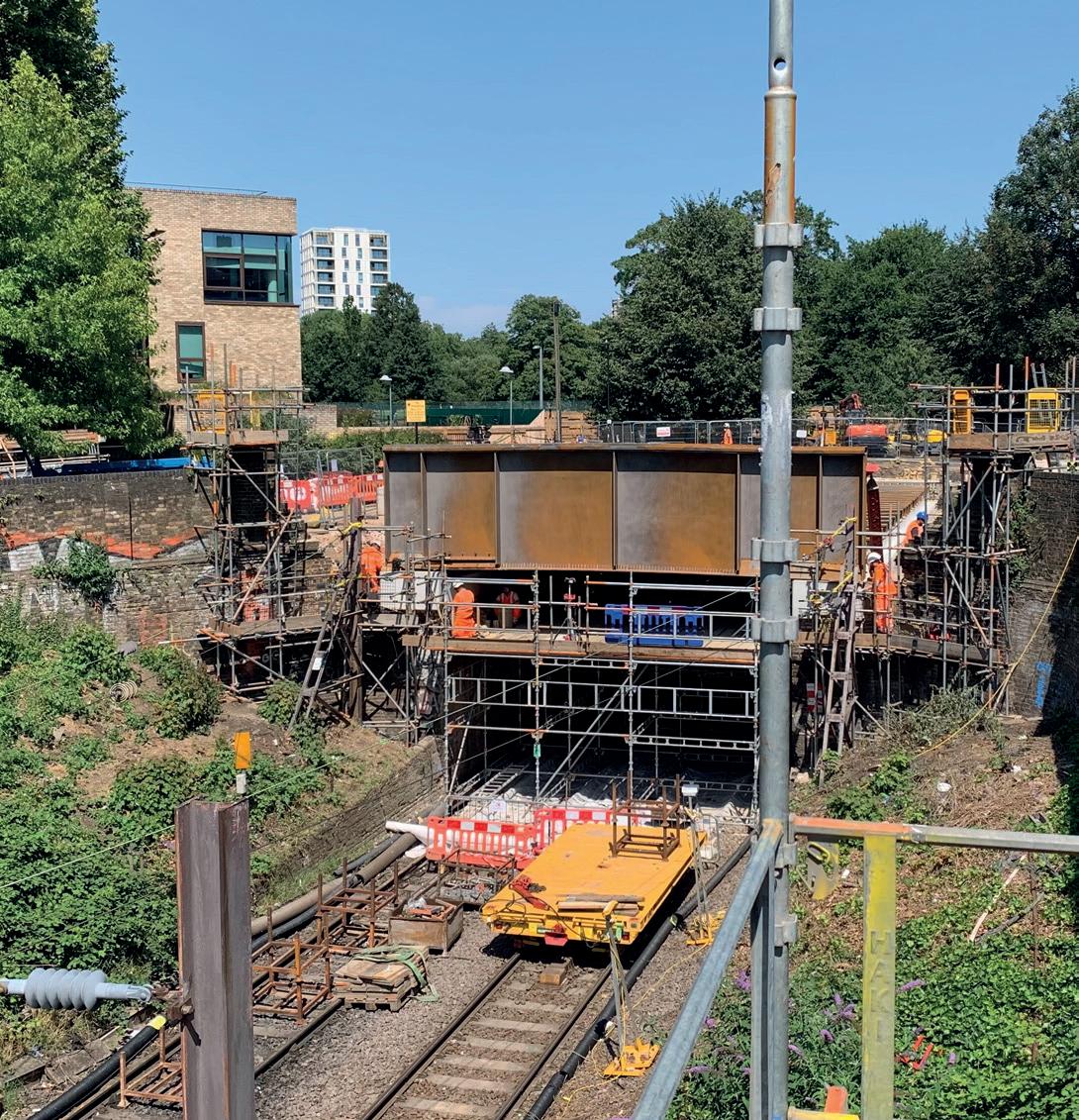
There is good evidence that targeted public programmes, which invite SMEs in early, improve outcomes. Evaluations of the Small Business Research Initiative show positive value for money for government, faster introduction of new products and higher growth for participating firms. Catapult Network studies report stronger employment and turnover growth for SMEs that engage with Catapults. In transport language, this means there is a proven route to bring specialist digital capability into regulated environments without betting the network on it.
The record is not perfect. SMEs have short runways and can be frozen out by long sales cycles, unfunded discovery and payment terms that move risk down the chain. Bid costs and confidence in evaluation can deter smaller suppliers from bidding at all. The fix is not special treatment. It is good market stewardship: clear problem statements, funded discovery, proportionate terms and fast payment on verified milestones. That keeps a broader field of suppliers engaged and raises competitive pressure on quality and price.
So, the case for SMEs is practical. They bring modern development habits that fit modern systems, they adapt quickly when rules change, and they are attracted by open interfaces and clear outcomes. You get faster learning, lower delivery risk and a healthier supplier ecosystem that makes rail more adaptable at reasonable cost.
An outcome-based approach opens the door to new suppliers
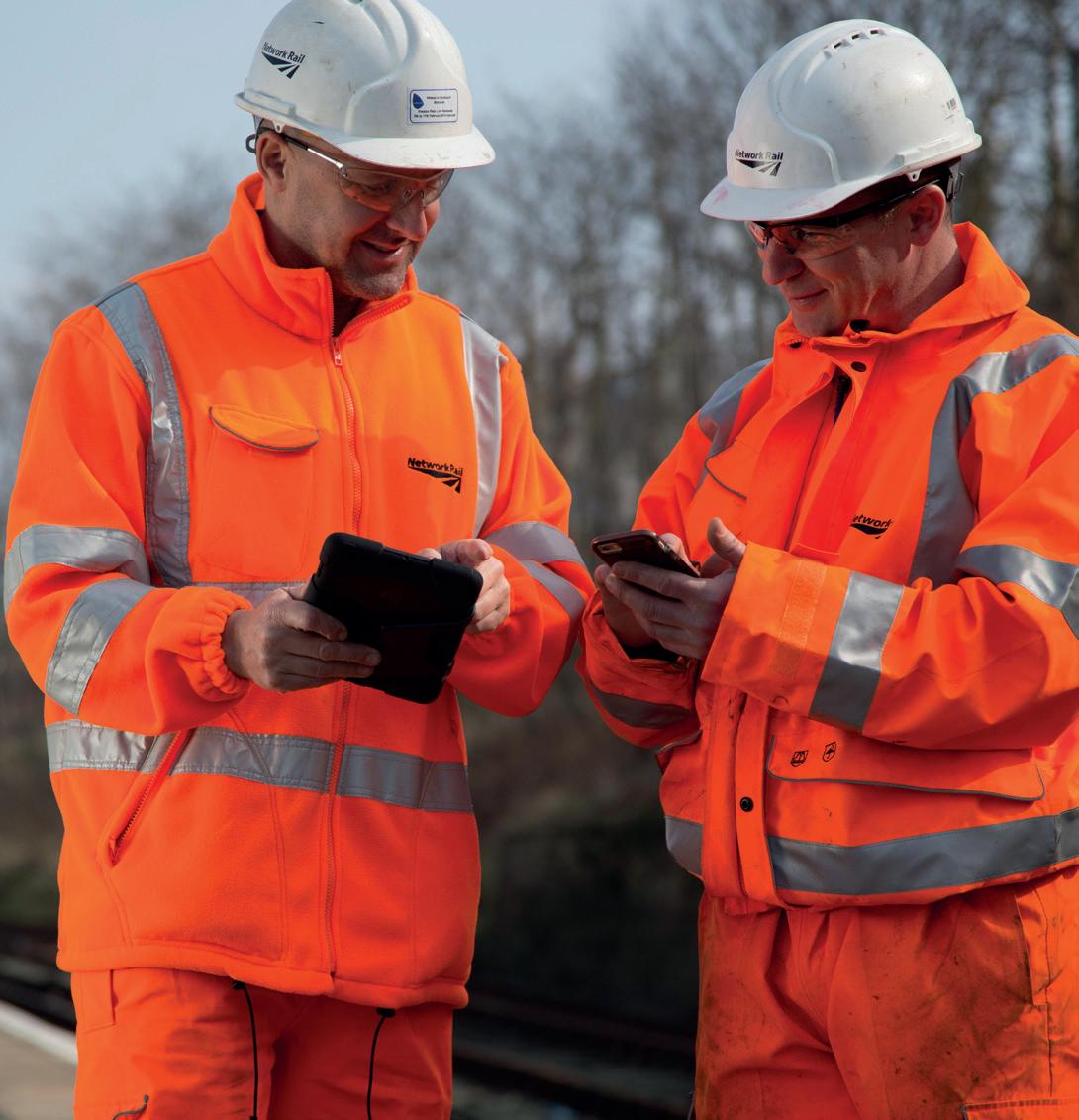
Richard Carr, Technical and Innovation Director of the Railway Industry Association (RIA), considers the difficulties that the supply chain faces and how Great British Railways, through GBRX, could help or hinder the process.
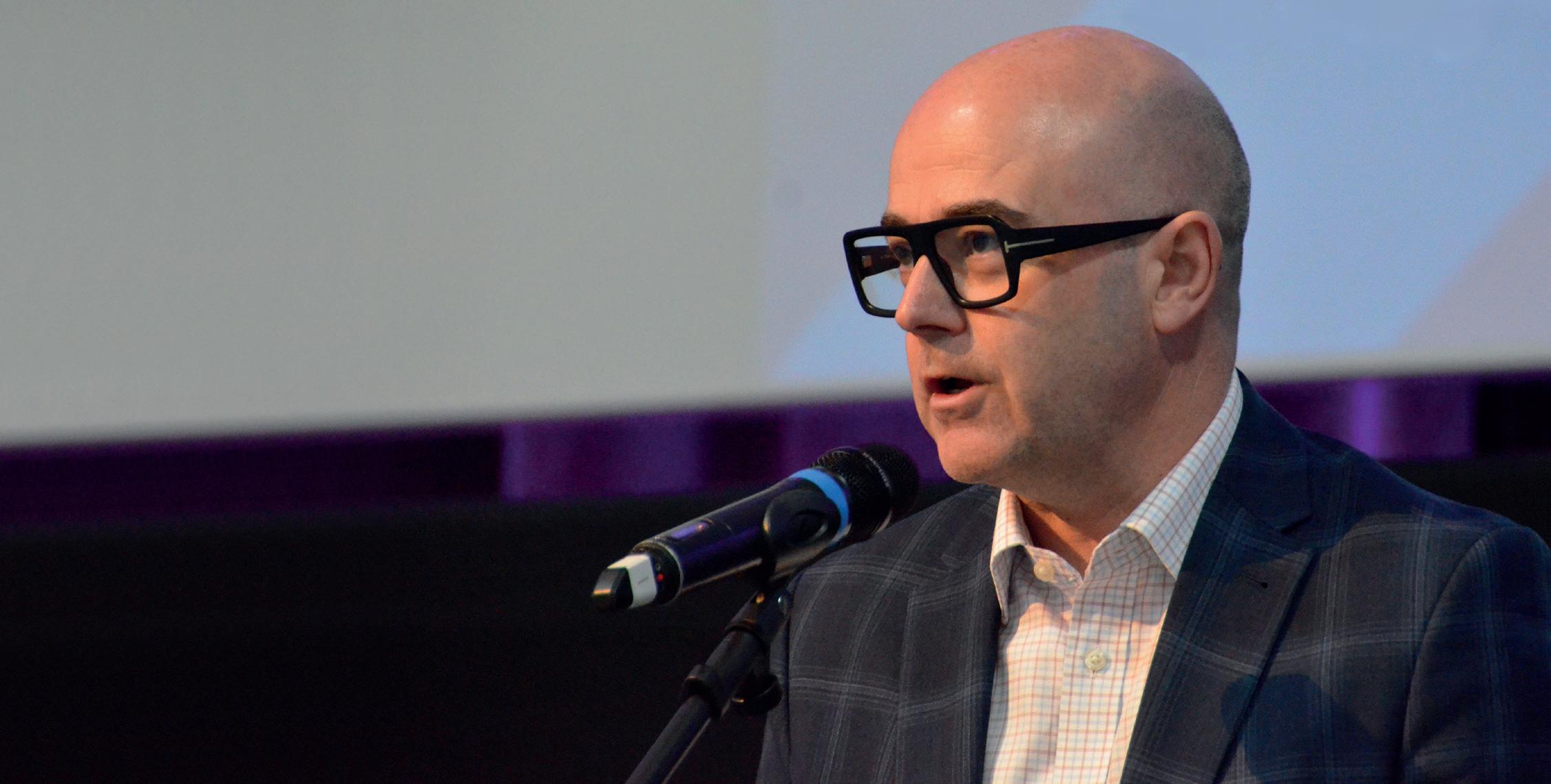
he key thing about the railway, for me, is that it is an overly conservative system that is not open to the adoption of innovation. Although examples of best practice can be found, railway innovation as a whole remains underfunded and insufficiently supported. Even modest improvements must navigate long, complex routes to adoption, while transformative, radical innovation is almost entirely shut out.
There is plenty of good practice in R&D being carried out through universities, through organisations such as UKRRIN (the UK Rail Research and Innovation Network) and via Network Rail’s Technical Authority RD&I team. It is getting that research into the system and actually used, deployed and adopted that is the challenge. And if we don’t improve that, we won’t improve the railways.
Moving an innovation from concept to everyday use requires resources, long-term commitment and buy-in from all levels of industry and government. Alongside this, a cross-industry effort is needed to remove barriers to adoption. Policy, procurement rules, cultural habits or structural issues can all block promising innovations from reaching the market. Collaboration is essential.
RIA has examined this challenge from every perspective. By surveying members, studying cross-industry case studies and analysing cultural, commercial, and regulatory barriers, it has built
a clear picture of what holds back innovationand how dismantling those barriers could accelerate decarbonisation, attract private investment, boost UK technology exports, and deliver truly transformative change.
The outlook isn’t entirely bleak. Across the industry, initiatives already demonstrate what is possible. RIA’s Unlocking Innovation programme-delivered with Network Rail, UKRRIN, Telent, and othersbrings together people with ideas and the resources, opportunities, and platforms to realise them. By fostering collaboration across the sector, it nurtures a culture where new thinking doesn’t just take root, it flourishes.
The biggest focus that we should have as an industry is around culture and behaviour
I think, to a certain extent, this attitude is endemic throughout the system, but, particularly from an infrastructure perspective, it’s lower down the hierarchy where the problem seems to lie. The Railway Industry Association’s members regularly talk about middle managers as the problem.
Senior management realise what’s needed, but, privately, they admit they are struggling to get behaviours changed.
Skills development and fostering a culture of innovation are critical. Supporting individuals with training, embedding innovation into day-to-day objectives and encouraging continuous improvement will help the railway attract and retain a highly skilled workforce ready to turn ideas into reality.
Which is why I have often said that the biggest focus that we should have as an industry, from an innovation perspective, is around culture and behaviour. It’s not around innovating in technology, because that’s already happening. It’s about changing the culture and the behaviour of the industry to allow that technology to be implemented and adopted.
Is Great British Railways the answer?
While I don’t think Network Rail’s devolution programme has made it worse, I do think that it has made it more complicated and made it more inefficient for the supply chain to engage.
When we first talked about Great British Railways, and RIA formulated its Innovation Strategy in 2022, we had six key asks:
1. Increase Government investment in rail research, development, and innovation.
2. Strengthen support during the innovation rollout phase.
3. Lead a concerted cross-industry effort to identify and overcome barriers to successful adoption.
4. Provide a pathway and funding for radical innovation.
5. The railway must adopt a whole-system and long-term view to enable the right innovation.
6. Support skills development and the creation of an innovation culture.
Great British Railways should be organised so as to be the innovation guiding mind

We also asked that Great British Railways should be organised so as to be the innovation guiding mind, supporting the whole innovation journey through to deployment and benefits realisation, and acting as an enabler to exporting opportunities. This includes adopting the principles of the Rail Technical Strategy – a cross-industry initiative setting out a vision for how technology can be used to create a better railway and giving guidance on how to prioritise existing dedicated railway research and innovation funds.
Great British Railways, through GBRX, should lead the creation of an ecosystem that nurtures innovation and supports innovators throughout the journey from concept to benefits realisation and business as usual.

TfL also states that the Miles per Technical Incident Number (MTIN), which is used to measure the mean distance in miles between service affecting faults of three or more minutes has been, in general, above the target of 10,000 miles. Customer satisfaction ahead of the 29 September meeting gave an overall score of 87.5 per cent, the highest ever score across all the modes of transport, while customer satisfaction for the east
This includes building on the solid foundations of well as backing the development of the Global Centre Network Rail’s Technical Authority RD&I work, as
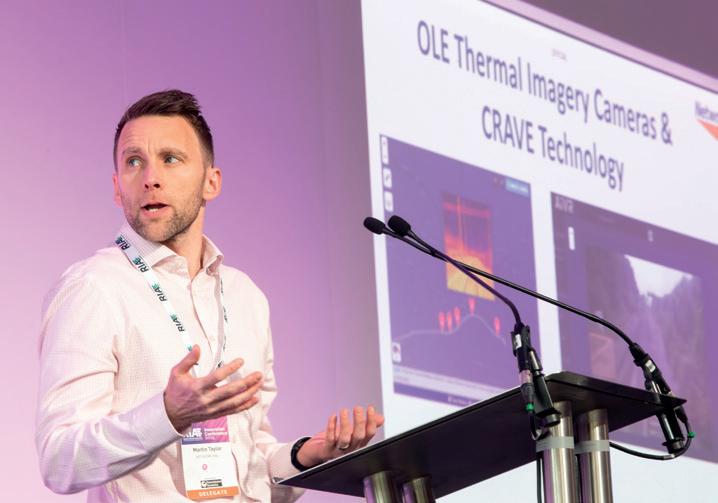
and west sections was at 77 per cent for Quarter 1.
TfL says that passenger numbers on the Elizabeth line are consistently higher than budgeted for and, excepting strike action, regularly exceed two million per week. Of the 45 million who had travelled by the end of September, some 22 million had used the new section of railway. For example, during the week ending 20 August there were 2.1 million passenger journeys for the whole line.

The TfL chosen BTU partner including the recent Northern Line Extension, Victoria Line and Jubilee Line projects.
PB Design has built its reputation over more than 40 years of designing and manufacturing AC and DC standby systems for many major projects in the UK and overseas.
We manufacture a full range of PADS approved Battery Charges, and also offer full application design facilities through to project management, manufacture, test, installation and site commissioning.
well as backing the development of the Global Centre of Rail Excellence and Network Rail Test Tracks as comprehensive test facilities with open and flexible access for the UK rail sector. GBRX, in collaboration with its regions, should act as the ‘innovation guiding mind,’ supporting the full pathway to deployment, ensuring benefits are realised, and enabling opportunities for export. In addition, they should take responsibility for coordinating the allocation of funds and dedicated teams to support the first deployment of promising innovations.
Passenger numbers across Period 4 (26 June –23 July) reached 4.5 million on the east and west, and 5.1 million passengers travelled in the central section.
In total the frequency through the central section will rise from the current 12 trains per hour (tph) to 22tph during the peak, and 16tph off-peak from 6 November. Trains will also finish running an hour later at 23.30, having already begun operating an hour earlier, from 05.30, on 5 September. The frequency then increases to 24tph from May 2023 and there is capacity for 30tph.
The rail sector stands at a pivotal moment. The drive toward net zero, shifting travel patterns, and the creation of Great British Railways all signal a system in transition and primed for reinvention. Today, rail already contributes £43 billion to the UK economy, supports more than 700,000 jobs, and delivers £2.50 in value for every £1 invested. With a stronger focus on innovation, these benefits could grow significantly.
TfL says that passenger journeys for the Elizabeth line exceeded budgeted figures by 14 million, due to the central section opening five weeks earlier than assumed plus higher than expected passenger numbers across the whole line. This meant that the income from fares was £20 million above budgeted forecasts as a result.
Government will be central to unlocking this potential-not only through funding, but also through policies, procurement practices, and leadership that reward new ideas. The supply chain is ready, ambition is strong, and the blueprint for action is clear.
However, year to date (YTD) direct operating costs were £8 million lower than budgeted and the Net Operating Deficit for the new railway was £101 million, some £28 million favourable to the budget.
If the UK is serious about leading the world in transport innovation, now is the moment to act. By investing in ideas, skills, and collaboration, we can build a railway that is both resilient and sustainable.

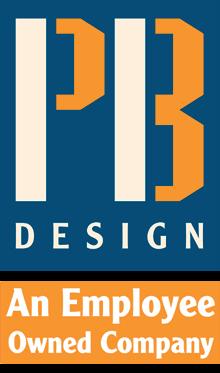
Typical applications include:
Substations
Rail Applications
Mass Transit Systems
Power Stations
Data Centres
Shopping Centres
Theatres & Cinemas
Sam Fowler and Alex Whybro oversee c2c’s newly launched project management office (PMO). In this article, they outline its innovative approach to project management – and explain how they are delivering consistency and realising new efficiencies.


Sam Fowler, PMO Lead at c2c, is on a mission to improve the way the industry delivers projects and manages risk. A seasoned rail professional with 10 years of project management experience, he’s truly committed to the task at hand – and hopes this enthusiasm is proving infectious.
“I’m really passionate about it,” said Sam, who first joined c2c as an Information Systems Analyst in 2013. “And that passion hopefully filters through the business. But it’s not about cracking the whip – it’s about working on problems together, being open and honest, and encouraging collaboration.”
Sam runs c2c’s newly launched PMO alongside colleague Alex Whybro, who is Head of Relationships and Programmes at the award-winning regional operator. His “broad” remit includes overseeing the management of the PMO, the operator’s business planning cycle, and its relationships with the Department for Transport and Network Rail. “It definitely keeps me busy!” he laughed.
Alex and Sam share a passion for good project management, and are striving to realise the PMO’s
mission statement – “optimise project delivery”.
It’s no small task – but a year and a half after the function was launched, they’re making steady progress.
“We’ve found that, at many companies around the UK, PMOs come in and out of favour, but we’re really keen to make this one stick,” added Sam.
It’s about ensuring that we do what we set out to dogetting that right and making it as efficient as possible
c2c’s innovative PMO was established in April 2024, the result of a Business Transformation Programme to identify new efficiencies.
“It was one big melting pot of ideas,” remembered Sam. “It gave rise to around 11 major outputs – one of which was the PMO. And now, the PMO itself owns a good chunk of those deliverables.
“Ultimately, the programme was about bringing in more structure and better, more efficient ways of working. The highlight of that work was the PMO.” And already, c2c’s PMO team has introduced much needed-structure and realised new efficiencies, focusing on three areas: projects, corporate risk, and meeting governance.
“Our innovative team love technology, and we also build efficiency solutions,” added Sam. “We’ve created a public relations tracker and worked with the ticket booking team to build a system that allows them to take group bookings, for example.”
Sam explained that PMOs come in all shapes and sizes - adding that at c2c, project delivery is a key focus.
“It’s about ensuring that we do what we set out to do-getting that right and making it as efficient as possible,” he said.
Beyond project delivery, the PMO manages and governs corporate risk. While Sam admits that he and his team are not “risk experts”, they have introduced governance around risk reporting.
And finally, they oversee meeting governance,
bringing structure and consistency to this important area of the business’s operations.
“Two years ago, we didn’t really have terms of reference for our formalised meetings,” Sam revealed.
“People weren’t sure what the agenda was. We set up terms of reference for each meeting, as well as action trackers and risk trackers aligned with our corporate risk.
“And for meetings with external organisations, we created a summary tracker, which meant key information could be captured and disseminated out to the relevant groups.”
Alex added that they had extended this “holistic, consistent” approach to business cases, helping colleagues understand and assess them.
While bringing the “right people” together to interrogate business cases ensures the right decision is reached, he admitted that this approach could make for a “Dragon’s Den-style” experience.
“You’ve got your Head of Engineering asking if you’ve considered accessibility,” he explained.
“And then the Head of Digital asking if they’ve consulted with Supply Chain team about procurement requirements. It’s about ensuring we make the right decisions for the business.”
We’ve found that, at many companies around the UK, PMOs come in and out of favour, but we’re really keen to make this one stick
It’s also about providing a clear view of c2c’s portfolio – something the PMO has achieved via standardised and consistent reporting.
“Previously, project managers were providing updates on Excel, PowerPoint, and even Word,” explained Sam. “It was confusing for the Exec team, so we’ve standardised the reporting process, introducing new templates. This creates one data set, and a clear view of everything from finances to projects and risk.”
This information is available on a single dashboard, which Sam and his team have optimised for ease of use.
Indeed, the duo agree that Smartsheet – an AI-powered work management tool – has played a key role in their success.
The streamlined software enables teams to record everything from risks to meeting actions. Information is stored in its back office, before being filtered and shared in reports – often with c2c’s Portfolio Board, the operator’s community of team leaders and ‘Heads,’ collaborating on core projects.
“It’s being used in a really clever way, and integrates
with our Microsoft Teams app,” Alex explained. “You can see actions and risks in one place, different meeting dashboards. It means you’re not scrambling to locate meeting notes or terms of reference.”
Sam added that integrating Smartsheet with a familiar tool, Microsoft Teams, made it more user-friendly.
“As soon as we started showing colleagues information in a location they were used to and filtering it to give them exactly what they needed, it got easier,” he said.
The PMO can even analyse data on risks or actions, identifying common themes. As Sam explained, this kind of trend analysis enables c2c to be more proactive. In the future, they hope to employ AI-powered tools like Copilot, interrogating large datasets quickly and easily.
And, when it comes to the bigger picture – project success – the PMO measures three key metrics: are projects on scope, on time, and on budget?
“Again, by having it all in one system, we’re able to effectively track it and show the trend from month-to-month,” Sam explained. “We can identify how many ‘red’ projects we have each month and establish where to focus our efforts.”
Now, c2c is sharing its learnings with industry partners and other train operating companies.
“The system’s been demonstrated to them, and the reaction is usually the same,” Sam said. “‘Oh wow, I didn’t realise it could do that!’ We’re keen to share our knowledge with the industry.”
Within c2c, their work is supporting cross-functional collaboration. Members of the PMO team attend the business’s newly formalised strategy meetings, facilitating conversations – and ensuring vital information is captured – with the right technology. They also work closely with c2c’s finance team, which oversees the annual business planning process.
“The whole business contributes to the business plan, and the tools we have available make capturing all those ideas and putting them together in a response a lot more straightforward,” Alex explained.
And, with its streamlined reporting system and new templates, the PMO is also building a library of lessons learned on major projects. Lessons and actions are captured as a project progresses rather than when it concludes, ensuring they’re not lost.
This collaborative, user-focused approach has enabled Sam and Alex to secure company-wide support for a function that could, under different circumstances, be seen as a “policing force”.
The duo was quick to address this misconception, providing training, gaining key stakeholder support, holding inclusive lunch-and-learns with colleagues, and demonstrating the value of their approach. They were keen that, rather than a bureaucratic, administrative function, the PMO be seen as a strategic project delivery partner.
A clear PMO policy, written by Sam and mandated by the executive team, outlines what is expected of project teams.
“Ultimately, it’s about giving people the tools to make optimising project delivery as straightforward as possible – and in turn, providing a holistic picture of the status of projects across our portfolio,”
Sam explained.
And what does the future hold for c2c’s innovative PMO team? Sam added that it was all about building momentum.
“We’re keen to strengthen our collaboration with the DfT, and look into benefit tracking with the right technology,” he said. “We purposefully started small, got the basics right – but now, we’re looking to build on our progress.”
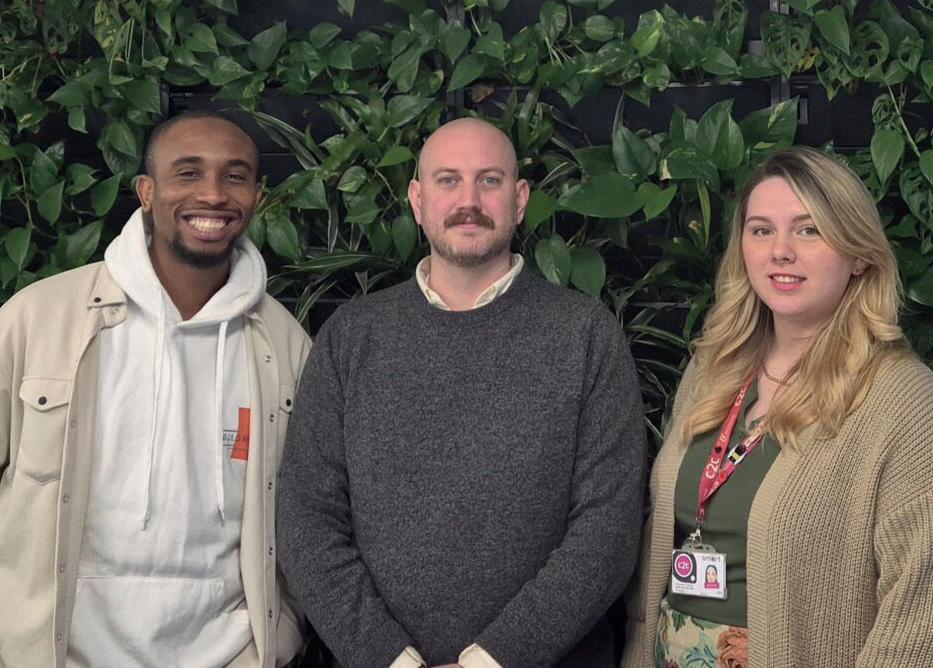
Network Rail has been accused of being slow to innovate. Head of Strategy James Heslop explains some of the steps being taken to combat this.

t the senior level, Network Rail absolutely understands that it needs to innovate. Doing things the way they have always been done will cost what it always has, so the only way to do more for less, to be more efficient, is to do things differently – and that means innovation. That belief is so strong that Network Rail recently signed memoranda of understanding covering R&D (Research & Development) with Transport for London and SNCF (French national railways), adding to those it already has in place with other international partners and opening the way to collaborate on shared issues related to asset
management, maintenance, safety and environmental sustainability. As part of those agreements, each organisation has developed plans that focus on improved solutions and innovations to change and modernise assets and services.
Speaking of the agreements, Martin Frobisher OBE, Engineering and Safety Director at Network Rail, said: “We share many of the same challenges and, by sharing knowledge and best practices, we can help each other drive innovation and efficiency in asset management, maintenance, and sustainability on our railways, strengthening safety
and performance, for the benefit of passengers.”
So, Innovation on the agenda. However, Network Rail does still have a challenge around the adoption of innovation. Many in the infrastructure supply chain complain that innovation is slowed as Network Rail doesn’t want to run the risk of innovations failing to work.
One of the ways we buy people in is by showing them that a technology works in the rail sector
James Heslop, Network Rail’s Head of Strategy, spoke with Rail Director about the culture of innovation needed to support implementation and how it should focus, throughout the organisation, to support people in developing the capability and capacity to implement fast emerging changes. “Recent studies show that people across Network Rail are keen to support innovation, but they are lacking the capacity to deliver it,” he said.
“Which is understandable but doesn’t promote innovation. Anyone involved in innovation has to be prepared for it to fail, but then has to treat that failure as a learning experience so that next time a similar innovation is introduced, it WILL work.
“Innovation has to have sponsorship throughout the organisation,” James continued. “Often we focus on our senior sponsors – on those people who make the decisions – but actually we need sponsorship throughout the organisation, from people at operator level all the way through to middle and higher management, because they are the people that deploy innovation and act as the champions for the business change.”
The rail industry has relentlessly innovated for 200 years
Network Rail is therefore implementing a three-stage strategy to do this. Firstly, each R&D project that it takes forward has to have the support of regional teams. It has to have sponsors with a clear demand for a successful solution, and it has to move forward in a way that allows that journey for innovation change management to happen.
Secondly, James and his team run Pathfinder Projects. “We are very conservative in our industry, because we have to be,” he explained. “Our job is a very serious job, and we can’t just make sudden changes.
“One of the ways we buy people in is by showing them that a technology works in the rail sector. So, I run Pathfinder Projects. One that Kerry Marchant and the Network Rail Standards Team have just run has been the testing of a large language model with IBM. This uses artificial intelligence to interrogate our railway standards to find confliction and duplication. We know they exist, but today it is a manual activity to identify them. We hope that by including AI tools in the standards digitalisation project, in a safe and secure way, we will become more efficient at updating and reviewing standards.”
The third and final stage of the strategy utilises the Railway Industry Association’s ‘Unlocking Innovation’ events to show the industry, including Network Rail staff, that the industry is indeed innovative.
“The rail industry has relentlessly innovated for 200 years, starting at my hometown in Darlington,” James concluded. “I believe that, by working together through events such as Unlocking Innovation, we can get innovative organisations closer to the parts of Network Rail that want to support innovation.”
I believe that, by working together through events such as Unlocking Innovation, we can get innovative organisations closer to the parts of Network Rail that want to support innovation


William Powrie, Professor of Geotechnical Engineering at the University of Southampton, describes the relationship between the UK’s top universities and the rail industry, which are working together to innovate and improve our railways.
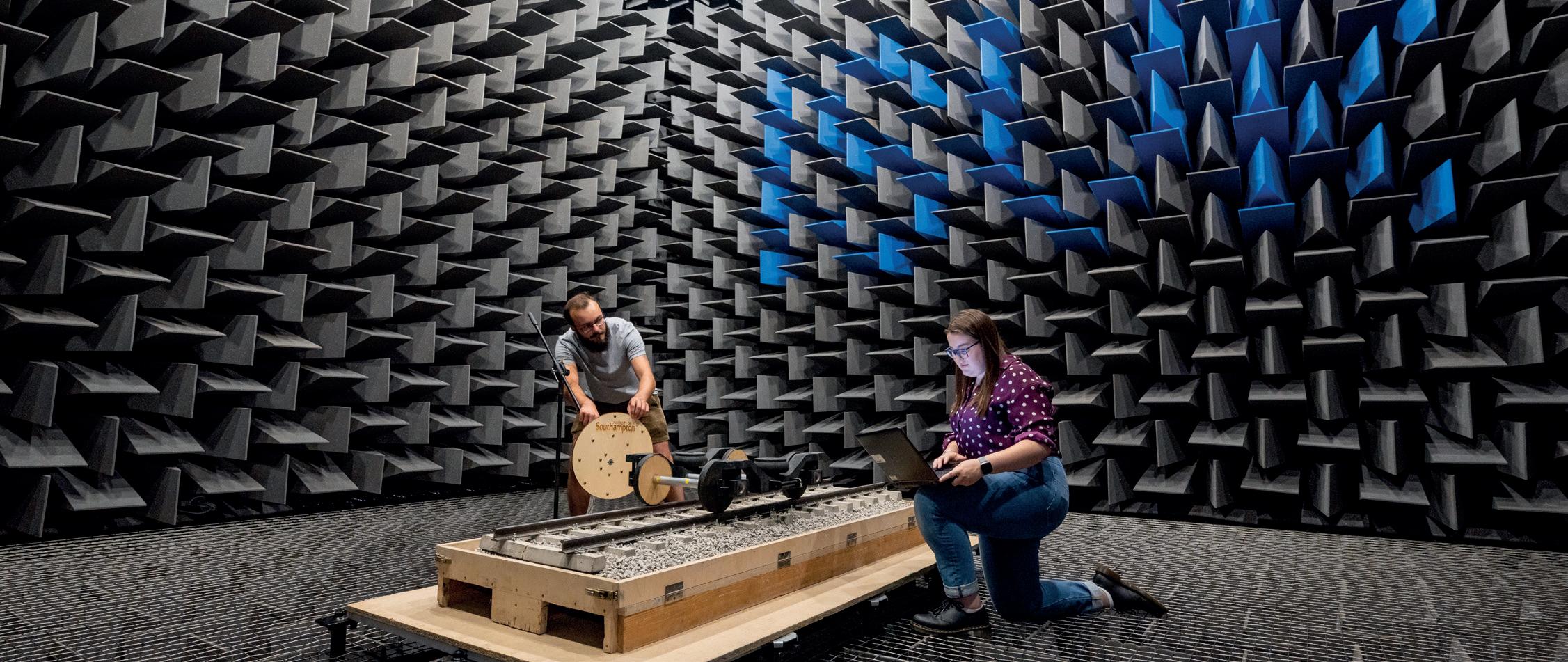
Innovators drive successful businesses, and applied research underpins innovation. Rigorous science can accelerate product development, focus effort, and speed product acceptance.
But how can businesses secure affordable, top-quality research effort when it’s needed, for as long as it’s needed? How do you complement the bright minds and test facilities you already have in your business?
As far back as 2015, the Rail Delivery Group recognised the need for a new approach. Its report ‘Fast Track for Growth’ concluded: “Existing technology is insufficient; we are moving into a technology-led decade of change and innovation. That means both faster implementation of existing technology, and a relentless drive to spur greater innovation and new technologies.”
The UK is endowed with universities stacked with world-leading researchers and facilities, and the UK Rail Research and Innovation Network (UKRRIN) has simplified access for industry. It comprises key industry players and universities with substantial, generalised and specialist rail-related research capability.
Launched in 2018 with Government support, UKRRIN gives UK industry access to truly practical, applied research, facilitating the development of new products and bringing them quickly to market. University researchers bring enthusiasm and new thinking to bear, using fully equipped laboratories, research quality field measurement techniques, high-powered computing facilities and robust scientific analysis.
And because the universities undertake research across a range of sectors and disciplines, the opportunities for cross-pollination of ideas are huge.
The UK is endowed with universities stacked with world-leading researchers and facilities
There is a symbiotic relationship between industry and academia. Some businesses partner with universities to accelerate product development, for example Sheffield-based SME Tribosonics Ltd has been working with Huddersfield on a Network Rail and Horizon Europe-funded project to develop an ultrasonic track lubrication detection system.
Others take advantage of university testing to support product acceptance, such as the precast concrete manufacturers proving new products in the National Infrastructure Laboratory at Southampton. Major programmes across multiple universities can lead to transformative savings for the whole industry. A good example is the Network Rail-led programme that seeks to reduce the cost of electrification – several industry partners are using the specialist facilities and software at universities including Birmingham, Huddersfield, Sheffield and Southampton.
Other examples include a project at Southampton with Deutsche Bahn, SNCF, Tata Steel and others to develop a cost-effective alternative to field tests for rail dampers. This reduced homologation costs by 90 per cent and the time required from six months to one week, opening the market to SMEs. Meanwhile, the universities can act as a critical friend, supporting industry in problem solving.
Inside the University of Southampton anechoic chamber with a scale track model used to study and improve understanding of noise radiation and absorption of railway rolling noise.
Image: University of Southampton
This can mean developing solutions or providing advice to the people who actually own the problem and are trying to solve it.
Another area for collaboration is in tackling big strategic issues. Climate change is one of the biggest, and Network Rail is working with UKRRIN partners on the challenges of increasing summer temperatures and changing patterns of rainfall (or the lack thereof).
UKRRIN is a partnership between academia and the rail industry. It currently comprises 20 universities, spread around the UK from Heriot-Watt in Edinburgh to Southampton, the two key infrastructure owners – Network Rail and Transport for London – and a number of partners and affiliate members from the industry.
The academic side of UKRRIN is grouped into four Centres of Excellence: Digital Systems, Economics, Policy & Operations, Infrastructure and Rolling Stock. A fifth Centre of Excellence in Testing is led by Network Rail, giving UKRRIN projects preferential access to facilities at Tuxford in Nottinghamshire and Melton Mowbray in Leicestershire.
You don’t have to be a UKRRIN industry partner to benefit from this great resource, and we are always happy to talk. More information can be found on the website www.ukrrin.org.uk/, and guidance on choosing a partner can be had from Centre of Excellence leads, or from RSSB by emailing ukrrin@rssb.co.uk.


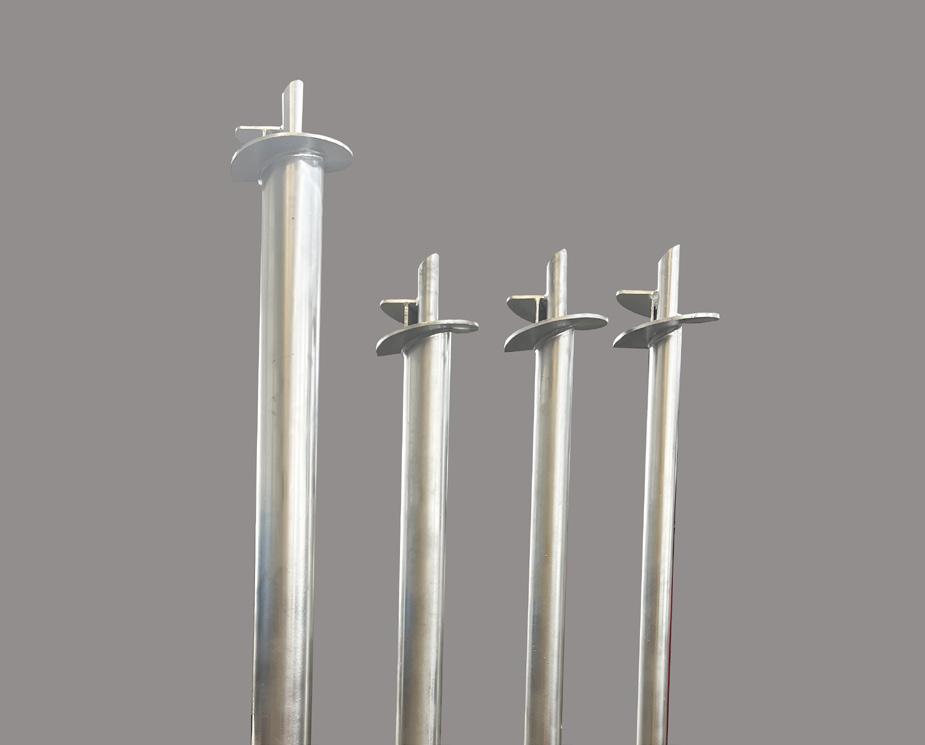
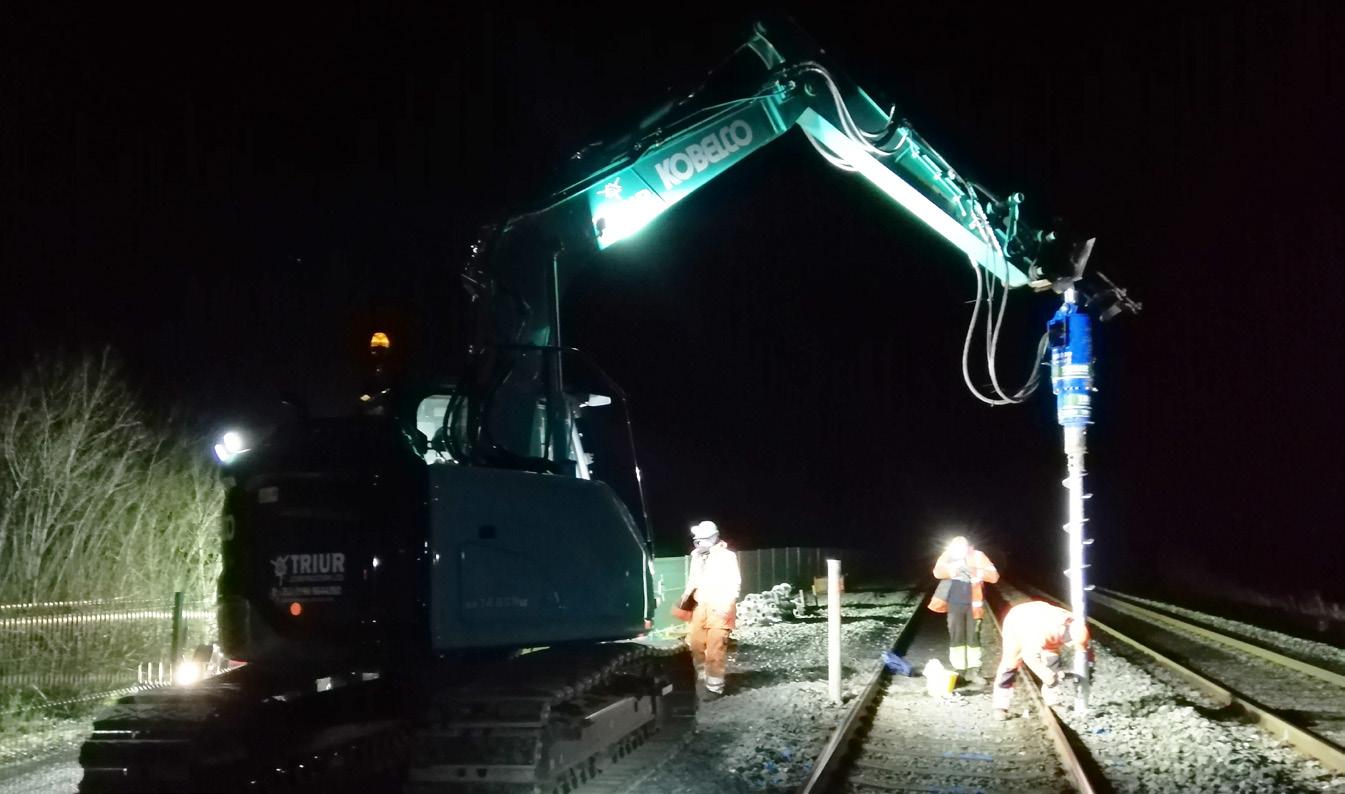
Luisa Moisio, Director of
at the Rail
and Standards Board (RSSB), considers why rail needs innovation, and how best to deliver it.

All industries need innovation to continue to improve and meet the evolving needs of their customers and society – that much is clear.
Rail currently has two top priorities: reducing costs and improving reliability. These challenges are not going to be improved easily given the volume and nature of traffic on the network, the characteristics and longevity of some of its assets, and the growing impact of extreme weather.
They need to be tackled by combining short-term, tactical interventions (for example improvement in disruption planning and skills) and longer-term incremental as well as radical developments (for example expanding the use and capabilities of connected driver-advisory systems and traffic management).
There are also opportunities for the railway to pursue, for example – building on its emissions credentials to reduce them further and make better use of existing capacity. Again, the research and innovation communities need to pursue a range of solutions across different time horizons and novelty levels to enable progress on these.
It’s hard to get research and innovation funding to make things better in 10 years from now. Hence the tendency, in some cases, to prioritise research on solutions that can deliver improvements in two or three years.
There are great technologies out there at different readiness levels
We have plenty of near-term impact projects in the RSSB research pipeline, and even more that have been completed and successfully taken up. For example, the extra paths and positive impact on reliability from our recent work on improving the accuracy of sectional running times for freight trains. But we need to be careful that such short-term solutions, aimed at making the most of today’s network, are not the only things we focus on. We need a balanced research portfolio where projects focused on the here and now go together with long-term ambitious developments. The beauty is that the latter can generate early opportunities along the way
For example, at RSSB we are looking at traction-power algorithms to manage available energy. This is because there are pinch points on some parts of the electrified network, where there isn’t enough energy in the wires, and because of the new needs and opportunities that battery-train operations could bring. The long-term vision is to have a real-time management of traction power as part of an intelligent traffic management system. While we are working in that direction, some of this thinking could be used much earlier to allow more flexibility in granting electrical paths.
Another example from RSSB research pipeline is the work on inerters. These are passive mechanical devices that produce a force proportional to the relative acceleration between its ends. RSSB’s initial technology-transfer exercise identified potential applications of this technology in rail. While the journey to have inerters for primary and secondary suspension continues, this work triggered the successful prototyping and testing of an enhanced trailing arm bush (ETAB). And we are now working with Transport for Wales for ETAB to go through the assurance process and be used in the refurbishment of the MK4 fleet planned for 2026.
Pursuing long-term research journeys doesn’t exclude the ability to have impact along the way if one looks for such opportunities, while a too short-termism focus in our research and innovation effort will inevitably restrict the funnel of future improvements.
There are great technologies out there at different readiness levels, and they are key to delivering the goals captured in the five priorities of the Rail Technical Strategy. Whether the focus is making the railway ‘easy to use’ and ‘freight friendly’ or on the challenge of working toward ‘more efficient and reliable assets’, we must consider the range of technologies both already at play and new that could bring about the vision.
Take AI. Of course, AI algorithms will be invaluable in integrating a lot more factors into asset or traffic-management-related decisions. If deployed correctly, it will allow a level of ‘intelligence’ that is miles away from what is possible today, for example enabling different priorities for traffic management at different time of the day, or improving the resilience and costs associated with energy use. Such progress needs to go hand in hand with improving our technical capabilities and understanding in many other areas. These range from the aerodynamics of faster freight trains to help with the ‘freight friendly’ priority, to new materials increasing the efficiency and reliability of assets, or wearable technologies to support the health and wellbeing of our workforce. And this is only to name a few.
Research and innovation communities should celebrate success
Innovation benefits tremendously from cross-fertilising new ideas with deep rail expertise. These new ideas can come from academia or be prompted by closer working with other relevant sectors. For example, are we talking enough with the energy sector, both at senior level and at the technical, research and innovation level?
RSSB has always found tremendous value from working with academia, from our long-standing strategic partnership with the University of Huddersfield to close involvement in the UK Rail Research and Innovation Network (UKRRIN). Indeed, UKRRIN is a great vehicle for accelerating innovation in the rail sector, bringing together universities and industrial partners, including SMEs. The inerter/ ETAB journey I mentioned before is only one of its many successes. But are we collectively (public and private funders) using UKRRIN enough? And how can we strengthen it to deliver even more value?
And let’s not forget international collaborations. Whether it’s the World Congress of Rail Research, or bilateral collaborations driven by common challenges and priorities, these can accelerate progress and make research funding go further.
My final thought is that research and innovation communities should celebrate success more robustly. Very often, there is a focus on the negative, and, of course, anyone that works in research and innovation (and not just in rail!) will face many hurdles and failures. But what about all the innovations that happen? There are plenty of new solutions that get adopted and become a new practice, making a big difference on our railway.
Since 2013, when we started to actively focus on facilitating and monitoring implementation of RSSB most successful research outputs, 25 per cent of these have been fully implemented, with an additional 42 per cent at least partially implemented. These are great results on which to build and do even better.
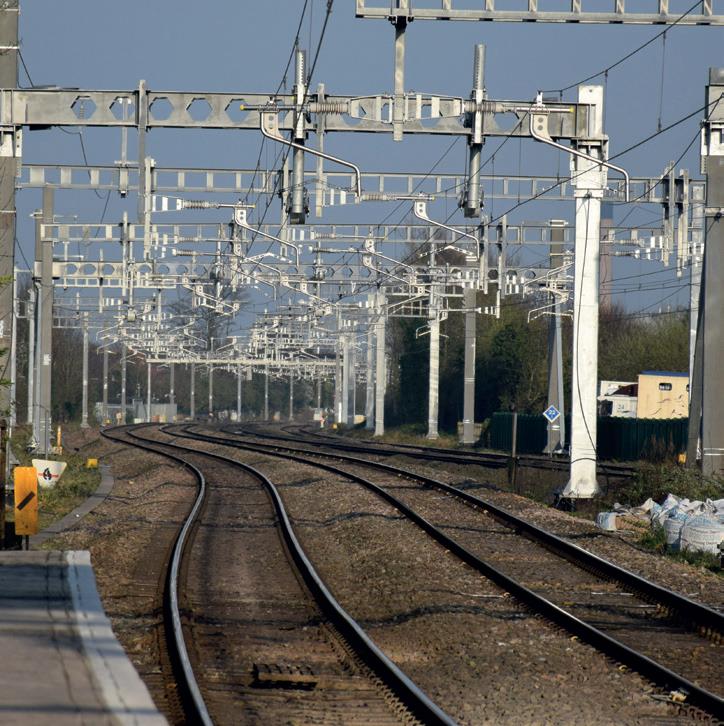
Recent successes include the revised freight gauges (W10 and W12) starting to unlock easier network access for modern freight wagons; data-driven tools informing operations and driver competency; and we are now in the second autumn with variable rate sanders in use on two fleets. All of these successes have been made possible because of commitments and passion from across the industry.
So, my wish is for rail reform to strengthen this commitment and passion with a clear and strong focus on the importance of innovation and of the research and collaboration that underpins it.
We need a balanced research portfolio

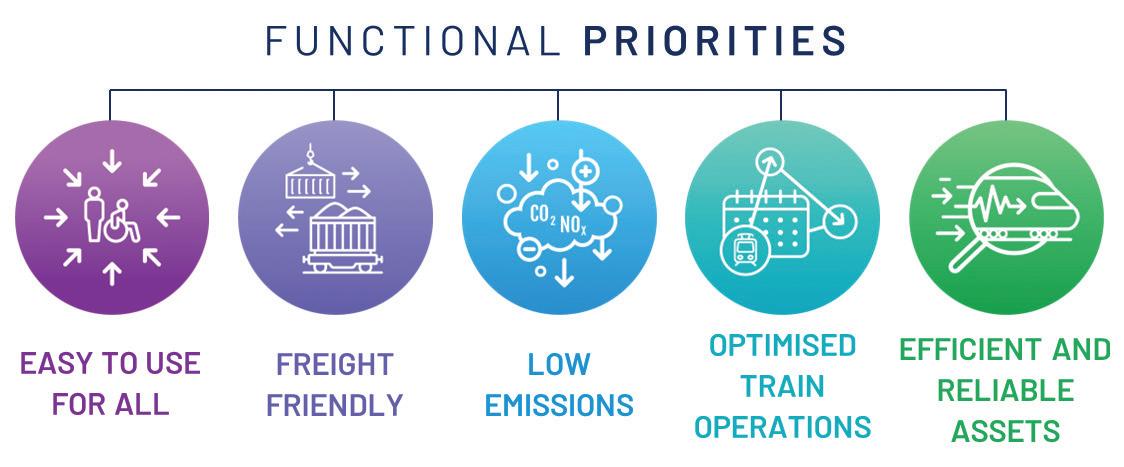

Kevin Bonanno, Director of Rail at Telent Technology Services, believes that innovation is a mindset and the sector must shift attitudes and embrace change.


UK Rail is well funded – compared to other sectors, we’re in a strong position. I know it doesn’t feel like it right now, with the current Control Period being challenging for many in the supply chain, but the funding constraints we face won’t be resolved by asking for more. There’s no more money coming.
Our railway is amazing and, after 200 years, is rightly being celebrated. But it is not as resilient or efficient as it needs to be and, together, we must tackle these challenges within the funding we already have.
That’s why I see today’s funding constraints as an opportunity to do things differently. We need to innovate to maintain safety and quality, while improving outcomes for passengers, freight and funders. And we must enable the supply chain to do more of what made the railways worth celebrating over the last 200 years.
At the same time, we need to make a cultural shift. Infrastructure owners should define the outcomes needed, rather than specifying every last detail, and then trust the supply chain to deliver those outcomes. That will be uncomfortable for many, but the UK’s Rail supply chain is capable and ready to take up the challenge.
Moving to an output-driven form of contracting will be difficult for procurement teams – how do you measure one bid versus another? But specifying exactly what
a finished product will be does not invite innovation, doesn’t yield the best price, and doesn’t result in a minimum viable product. If we don’t address the way our industry procures and move away from “best price = best value” thinking, we won’t solve UK Rail’s challenges. Traditional procurement processes stifle innovation, increase cost and prevent different ways of working from being adopted.
We need to make a cultural shift and embrace feeling uncomfortable
Over-specifying is a form of risk aversion, understandable in a safety-critical industry. But leaders – whether in infrastructure owners or in our own organisations – must empower their teams to take calculated risks. Building a culture of innovation means moving away from being risk averse, reducing the fear of failure and empowering individuals and teams to pursue success.
Through procurement – whether from infrastructure owners to us, or us to our suppliers – we need to work together more openly, earlier, and more closely. Early Contractor Involvement (ECI) must be used more widely. Investing in supply chain engagement before issuing a specification, scope or ITT will return significantly improved outcomes – on safety, time,
cost and quality – and will enable different approaches and minimal viable solutions to be explored.
The supply chain will also need to embrace this approach and not hold back its best ideas for the competitive process. Only together can we drive real change.
But I must be clear, when I talk about ECI, I don’t mean Requests for Information (RFI), which have a reputation of being free market consultancy exercises that check the ECI box. They have their place, but they do not facilitate meaningful early engagement.
ECI can remove risk, create a forum to innovate and working differently, as well as drive a change in approach to risk within traditional procurement processes. This is how we’ll get better results.
The smartest people are not in our organisations, or our customer’s, or our suppliers’ organisations –they’re in our collective organisations.
If we don’t collaborate, how will we develop the solutions needed for the industry, passengers, freight and, ultimately, what the Government and the Treasury need us to do?
Together, let’s focus on what needs to be achieved and not how. Let’s empower our teams to take calculated risks. Let’s celebrate success, something we don’t do often enough.
And let’s also celebrate failure, because it’s an opportunity to learn. Failure is a part of the journey to doing things differently and being better. Let’s not forgot how quickly and collectively we adapted during Covid. That proved change is possible in rail and that it can happen at pace, if we work together.
Innovation does not have to be invention, it’s about using what we already have
Building on the theme that the smartest people aren’t always in our organisations, they aren’t always in our sector either. So, let’s bring people in from different sectors. We need to learn from what they’ve already done. Not everyone needs 20 years’ experience in rail to make a difference.
On one project, we had a team full of railway professionals. To avoid repeating past mistakes and to close out strongly, we brought in a Project Manager from outside the sector. They came from a high-assurance background, so still aligned with rail’s governance needs, but without the inhibitions we’d developed over years in the industry.
And the first thing they did, which should be a core skill for anyone, was to build a relationship with the customer. Something that our team hadn’t done, as they were focused on the specification, project challenges and contract clauses.
Hiring from outside of rail is important. Normally, we like to promote from within and build experiences, but we must also look outwards. We need to step out of our comfort zone and embrace ‘different’, even if it feels uncomfortable. Taking the easy option isn’t always the right thing to do.
We often make decisions that feel safe and justifiable. But it’s hard to stand in front of an executive board, or any audience, and say something that makes us feel uncomfortable, because we might be wrong.
Yes, we might be, but if we’ve got a culture that embraces failure as a path to improvement, we should be celebrating – our organisations should be celebrating – the fact that we are trying to do things differently. Trying to enhance our organisations, the project, or the industry.
So, let’s embrace discomfort. Let’s bring in diversity, because diversity from other sectors makes it easier to innovate.
So, what else can we do? We can learn from what’s already been done. Aviation has done an amazing job of collecting data and then using it. UK rail has done a great job of collecting data and putting it into loads of different locations. Then, when needing to answer a challenge, we collect more data because we can’t find what we already have.
At Telent, we recently had outstanding success on a project where the brief I set my team was “you need to use existing data” and “you cannot create or buy more data”. They have done that, and they’ve done that working through an existing partner of Network Rail’s that already generates the data that we needed.
As a result, we’re out on track 80 per cent less than before, using tools that already existed. This is true innovation. This is doing things differently. This is challenging normal ways of working, and it was uncomfortable to start with. We have celebrated this and shared what the team has achieved widely.
Innovation does not have to be invention. In this case, it was about combining what exists today, using what we already have, to drive better safety, time and financial outcomes.
Culture is key. To build innovative organisations, we must empower everyone at every level. We can’t have parts of our organisations that are scared to say: “I know a better way of doing this”, or “can we try this?”
Celebrate failure when things don’t work, it’s how we learn. If you’re not failing, you’re not trying hard enough.

I don’t say this just to the supply chain, or to infrastructure owners, I say this to commercial teams as much as I would say it to procurement, engineering and delivery teams. We need those safe spaces. We need time within our working week to be able to stop and think. We need to try some pilot projects and work in a sandbox environment.
To Network Rail, I would say: “Embrace and trust your talented supply chain. Stop choosing ‘Proofs of Concept’-they only prove that something which already works in another sector can also work in rail. Instead, invest in trialling solutions that have defined outcomes upon success. Let’s do something and, when it works, roll it out. Don’t keep trying new things endlessly, hoping for something better.”
We must encourage collaboration and diversity, bringing together those with different backgrounds, people from outside rail, people from outside our projects. Bringing in individuals who will challenge us, who will ask “why are you doing it like that?”, is one of the most important ways to drive innovation. And it’s not a one-off – we must maintain that momentum, and that requires effort and commitment.
We must recognise and reward innovative thinking, and that doesn’t just mean financially. When we’re talking to our teams, we need to give them a chance to show off what they’re doing and celebrate that success and then share their success more widely. After all, success breeds success!
In summary, there is a real need for change. Innovation is an absolute necessity, so we can’t just beat our teams down and beat costs down to be successful and overcome rail’s challenges. We need to learn from other sectors and, most importantly, build that culture of innovation, within all our organisations.
If you’re not failing, you’re not trying hard enough

Innovations from Siemens Mobility will power the trains of the future, which the company is set to manufacture at its new £240 million UK factory.
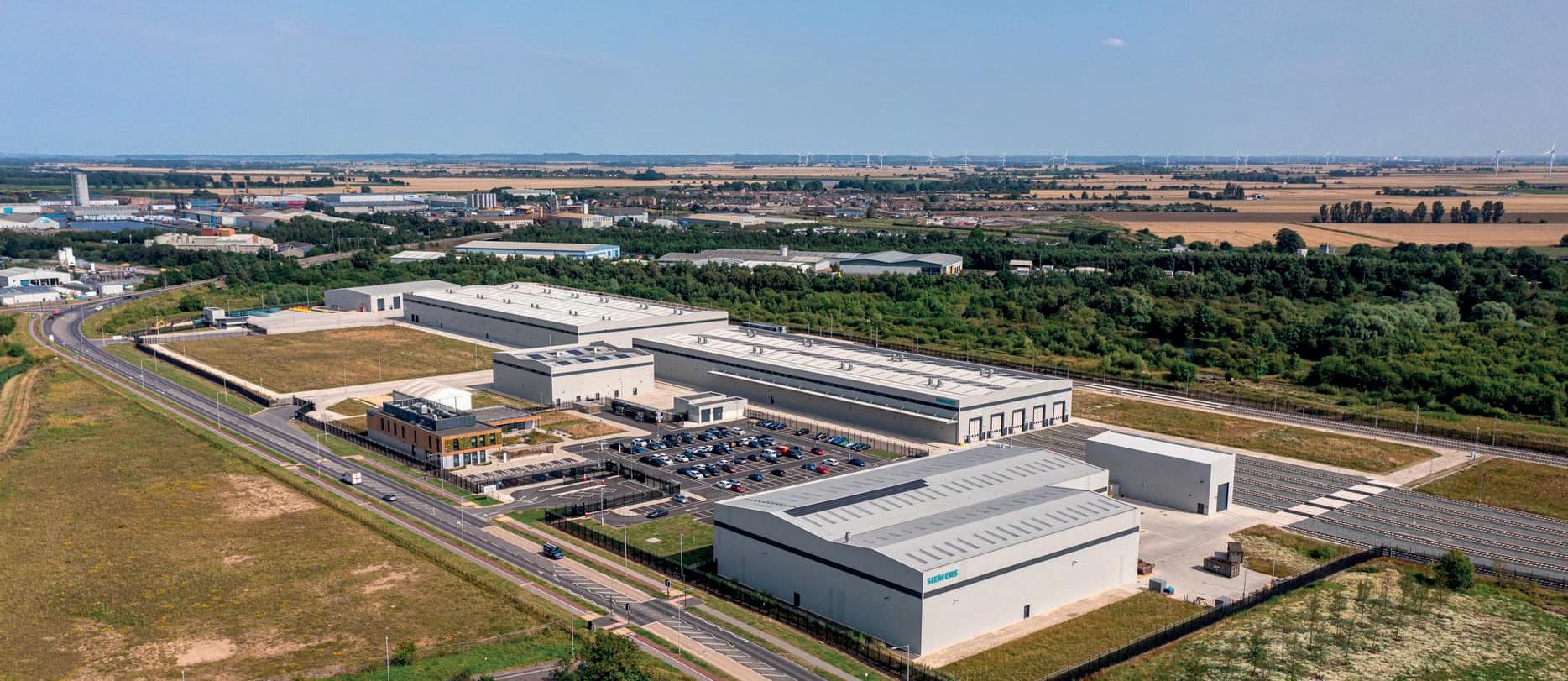
While many companies in the railway industry supply chain are involved in innovation, they are often working on one or two innovations at a time. Any more would dilute resources and strain the budget.
However, that’s not a problem for a global technology company such as Siemens Mobility. With research and development laboratories and workshops in many locations around the world, and established businesses involved in train manufacture, signalling, electrification, passenger information systems and more, Siemens engineers are working on too many innovations to list here.
In the UK, the company has about 5,500 UK employees across more than 30 locations, with manufacturing facilities in Chippenham for signalling systems, Ashby de la Zouch for station and passenger information systems and Goole for trains.
Siemens Mobility is currently investing up to £240 million in its Goole Rail Village, bringing up to 1,000 new jobs to East Yorkshire and a further 1,700 in the supply chain, with a further £100 million in its state-of-the-art factory, digital engineering and R&D centre in Chippenham, moving from its current facility to the new site a few miles away.
In terms of innovation, Siemens Mobility invests approximately £20 million per annum in the UK in research and development (more than £100 million in the next five years). This investment is primarily to fund innovation that can help drive down rail costs.
As a measure of its success, Siemens Mobility supports a supply chain of SMEs worth over
£172 million in the UK, making a vital contribution to the industry’s ecosystem and the broader economy. In addition, 50 per cent of the Chippenham and Ashby manufacturing facilities’ production is exported, contributing to the country’s Gross Domestic Product.
The new Goole Rail Village is, as has been well publicised, manufacturing trains for London Underground’s Piccadilly line. Once all 94 trains have been completed, Siemens Mobility hopes to build trains for the Bakerloo line – with the Central and Waterloo & City lines to follow in the future, keeping production lines busy for years to come.
However, the Goole factory is also looking at developing other new train models. The UK is planning to phase out trains powered solely by diesel engines by 2040. Not only will this reduce carbon dioxide (CO₂) emissions, it will also save the country money, as trains that are partially or wholly powered by diesel are more expensive to operate in the long term.
Engineers at Siemens Mobility are also redefining railway electrification with their innovative Sicat SX technology, proving that sustainable rail infrastructure doesn’t have to come with prohibitive costs. This overhead line equipment, which
maintains tension for high-speed lines and has been used in Denmark, has longer span lengths and fewer poles and cantilevers – 10 compared with 14 in traditional systems – bringing down costs over the lifecycle.
This will work hand-in-hand with ‘discontinuous electrification’, with busy routes fully electrified while more lightly used lines, and those areas where electrification isn’t currently feasable, will be served by battery-operated trains that charge off the overhead line when it is present and run off onboard stored battery power in between.
Siemens Mobility has conducted extensive modelling using advanced train performance simulation software to compare using battery bi-mode trains to running diesel or part-diesel powered trains. Desiro Verve battery bi-mode trains, which utilise lithium titanate oxide battery chemistry, can charge their batteries to full capacity in 20 minutes while moving along electrified sections of track or while stopped at stations. The battery technology means that only small sections of track (20-30 per cent) need to be electrified, saving on infrastructure and electrification spend.
In addition to the new battery bi-mode trains which are set to be manufactured at Goole, Siemen’s engineers have come up with the Rail Charging Converter (RCC). This can reduce the time taken to electrify a section of railway from seven years to as little as 18 months when compared with traditional methods, saving further time and cost.
RCCs connect to the local power grid using an 11kV charge, instead of using the high-powered 275/400kV electricity network. The first production
version was installed on Porterbrook’s test track at Long Marston earlier in 2025 and further installations are being planned.
A study of seven routes showed that battery-electric bi-mode trains, alongside electrifying small sections of track (discontinuous electrification) and installing RCCs, can save £3.5 billion and reduce CO₂ emissions by 12 million tonnes over 35 years.
Sambit Banerjee, Joint CEO for Siemens Mobility UK & Ireland, commented: “Britain should never have to buy a diesel passenger train again. Our battery trains, which we’d assemble in our new Goole factory in Yorkshire, can replace Britain’s ageing diesel trains without us having to electrify hundreds of miles more track in the next few years.
“So, on routes from Perth to Penzance, passengers could be travelling on clean, green battery-electric trains by the early 2030s. And the best thing is that this would save the country £3.5 billion over 35 years.”
Siemens Mobility’s continued efforts to transform the UK’s railways are not just about trains, or electrification. Recent analysis has identified as many as 40 rail routes across Britain that still operate with outdated mechanical or electro-mechanical signalling systems and where modular signalling systems would create operational savings which quickly exceed the capital costs.
Siemens Mobility’s modular signalling systems can reduce capital costs by 25 per cent when compared to traditional systems, so the initial investment is much lower. Moreover, they are cheaper to operate and maintain than the existing, outdated systems, cutting operational expenditure by approximately £4 million per route. These savings would cover the capital expenditure in around five years, so would therefore be self-funding in the medium term.
By bringing track and train together through our digital technology, we are helping to transform rail travel and transport
To improve reliability, a new advanced traffic management system, Digital Conflict Resolution, uses an algorithm that analyses the railway’s official timetable and compares it to data from the signalling system. It automatically spots ‘conflicts’, where two or more trains are likely to arrive somewhere at the same time and cause delays, and then it proposes a solution which a human signaller can then accept or reject.
As well as improving productivity, the system can be used to examine the timetables for gaps that will create opportunities for extra train paths, for example as it did recently for the Grand National meeting, allowing for more visitors to come through Aintree turnstiles.
The use of digital signalling, the European Train Control System (ETCS), can also create more train paths, with signalling appearing in drivers’ cabs that is reactive to the train in front of them, therefore allowing trains to run much more closely together in complete safety.
For example, the East Coast main line is a vital economic corridor, linking London and Edinburgh and serving a third of the UK population. It carries over 80 million passenger journeys and tens of millions of tonnes of goods annually, contributing approximately £30 billion to the economy each year.
As part of the East Coast Digital Programme, Siemens Mobility is providing digital signalling (ETCS) as well as traffic management, which routes trains. Passengers will benefit from increased capacity, improved performance and more reliable services.
Class 717 trains are already operating from Moorgate to Finsbury Park using ETCS digital in-cab signalling, and the route will steadily be extended to Peterborough and beyond. Rob Morris, Joint CEO for Siemens Mobility UK & Ireland, said: “By bringing track and train together through our digital technology, we are helping to transform rail travel and transport.
“From enhancing passenger journeys with more reliable, efficient services to enabling smarter, greener freight logistics, the impact of innovation is real and far-reaching. These aren’t just tech upgrades-it’s how we can transform rail travel and transport for everyone.”
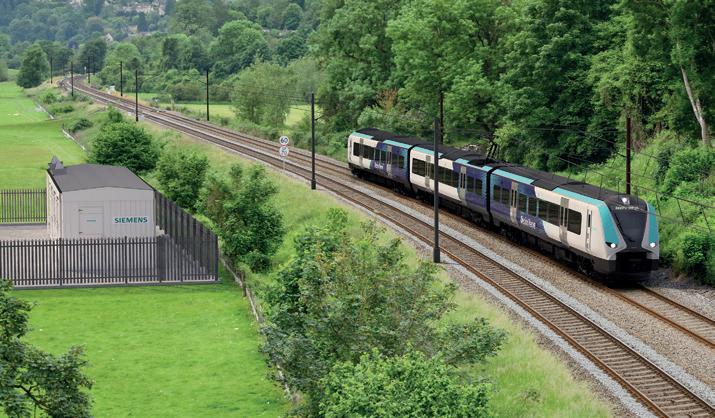


Alan Barrow of ABA Surveying muses over what is real innovation and what isn’t, and encourages real innovation to be adopted more quickly so that the railway can reap the benefits.

hat do we mean by innovation in the rail industry? Certainly, the term is currently being used everywhere, and not always correctly.
A Google search for innovation in rail throws up a Rail Innovation Exhibition, a Rail Innovation Group, a Railway Industry Association page on Innovation, a university’s Rail Research and Innovation Centre, Network Rail’s page on Research, Development and Innovation, news of the Department for Transport making £5 million of Government funding available for 26 innovative rail projects to boost passenger experience and the Railway Innovation Awards.
There’s certainly a lot of innovation about! But is it true innovation, or just overuse of the latest ‘fad’?
Alan Barrow, owner of ABA Surveying, has his reservations. “Innovation is a bit over utilised in my book,” he said. “People say that they’re so innovative because they’re using tried and tested technology for the first time. They buy something off the shelf and use it and then say they’re being innovative. Well, in my opinion, they’re not being innovative.
“Innovation means doing something totally different and/or using equipment to do something it was not designed to do. That is just what we have done with our station platform gauging trolley.”
Station platforms, particularly the edge of the copers but also the retaining wall and any equipment that is fastened to it, have to be surveyed regularly.
Over a period of time, with maintenance tamping and renewals, the track running through a station may move slightly, bringing train carriages either closer to or further away from the platform. The former may cause fouling, the latter will increase the stepping distance that the passengers boarding or alighting have to cross.
Traditionally, and according to the railway standard, the distance from the track to the edge of the platform and various other points on its structure has been measured using a large set square mounted on the rails, a tape measure and a length of string (yes – literally a length of string!). Measurements are written down and then transferred to a TEF (Track Engineering Form), which is sent off for analysis. The whole process for one 250-metre platform can
take a team of three people four hours, particularly if the weather is bad and all of the paperwork gets wet.
ABA Surveying has developed a gauging system based on a Gauging Tower which can be fitted to any track measuring trolley. The tower has an inbuilt computer which integrates two laser scanners, two cameras, two wheel encoders, GNSS positioning and an IMU (Inertial Measurement Unit). The system records chainage, cant, gauge and versines (used to determine the radius of a curve) as well as clearances. One operator pushes the trolley along the track while the laser scans the platform and records the various dimensions. It takes half an hour to push the trolley along the platform face and the scanner’s software then prints out the form with all the required dimensions included and error free.
The system also records canted track and gauge and the results can be seen on site. Under the old method of measurement, a temporary speed restriction might have to be applied through the station until the results are analysed, a process that can take weeks. Now, being internet connected, gauge clear can be proven in real time, on track.
However, because the use of this trolley had not been permitted before in the railway standard, these measurements are not compliant. Until the specification for gauging platforms was revised in September 2024, the official measurement still had to be undertaken using the set square, the ruler and the string, despite the ‘modern’ measurement trolley having been available for a considerable time.
The latest version of ABA’s system works with an app
on a mobile phone. It has been on trial with Network Rail over the last few months and hopefully should have product approval by the end of 2025. In order to achieve that approval, ABA Surveying needed a Network Rail sponsor.
“We have been working very closely with the gauging teams on Southern Region,” Alan explained. “They are so impressed with how the system works, integrating the hardware and software and achieving real savings in time, cost and resources while at the same time improving accuracy and wealth of all the data collected, that they have agreed to sponsor the system for Network Rail approval.”
“The biggest problem we’ve had is that we are trying to compare our results with their traditional measurements, and we have found that their traditional measurements are often either incorrect or they’re in the wrong place.
“This means that we have had to use both methods ourselves, at the same time. We have been doing this so we can compare our laser measurements with our own traditional measurements and, in so doing show that we’re right.
“When we compare our laser scans with our own traditional measurements, they correlate to within millimetres. When we compared our results using both methods for validation with readings taken by someone else, we found they can be alarmingly different.”
As new methods of doing anything – whether track maintenance, earthworks stabilisation or even
the surveying of platforms as we do – become available, the railway needs to adopt these techniques quickly, to enhance accuracy, improve safety, improve reliability and reduce resource and cost. The fact that the approval and adoption process can take an appreciable time, even years, is something that needs to be overcome if Network Rail is going to increase its efficiency through real innovation.
Innovation means doing something totally different and/or using equipment to do something it was not designed to do

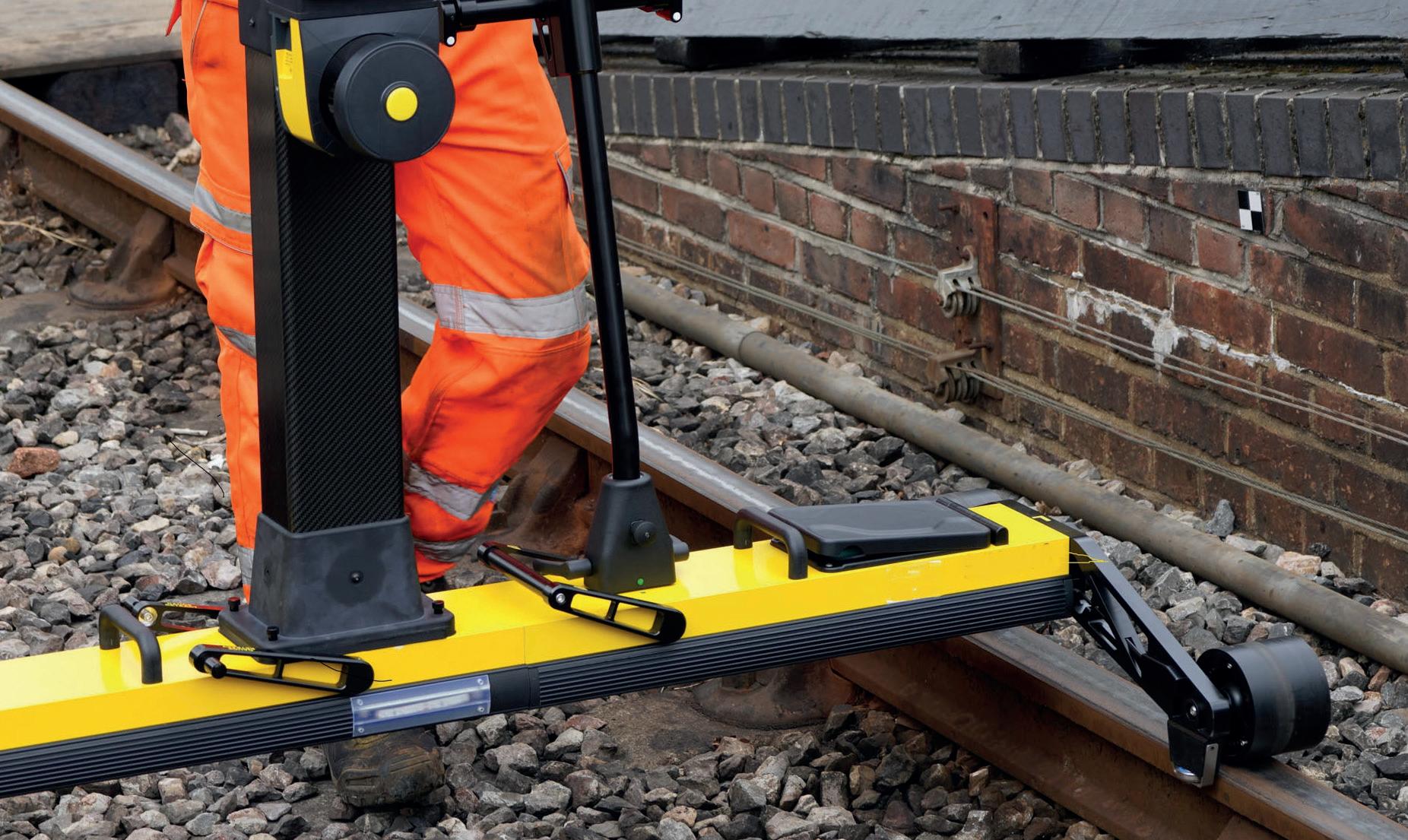
Some innovations need specialist assistance to get them over the various hurdles that could otherwise prevent them from being adopted onto the railway.

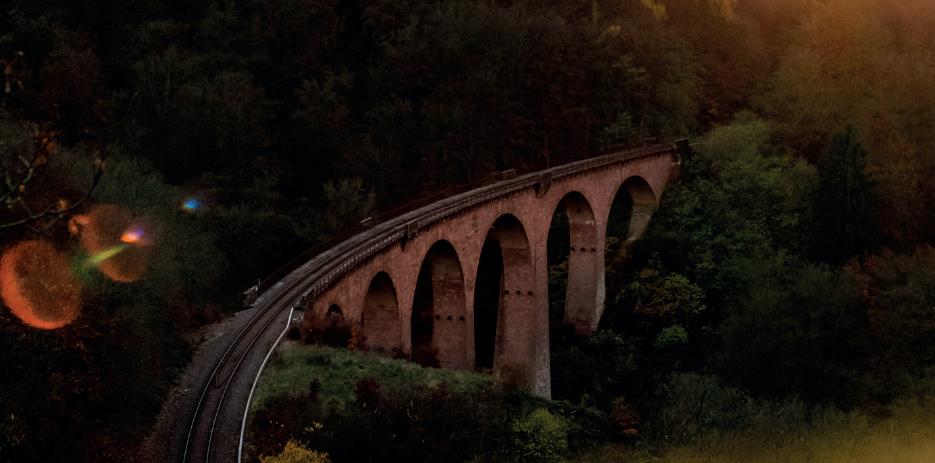
In rail, great ideas can die twice. The first time is when a promising prototype never makes it out of the lab. The second is when a successful trial never becomes ‘business as usual’.
One of the great hurdles that any new innovation has to overcome has been termed the ‘valley of death’. This refers to the difficulty of getting new technologies demonstrated in a representative railway environment.
Once a prototype has been bench tested, it needs to be put through its paces in the real world. This is where many companies, particularly the smaller ones, start to struggle. They had the resources to take a new product idea through design and initial development, producing a prototype that is ready to be tested on the ‘real railway’.
However, getting access to a suitable test environment, going through the necessary product approvals and standard derogations needed to get the solution demonstrated requires a level of funding and a knowledge of how the rail industry works that is often beyond the reach of many organisations.
Trevor Bradbury is a Director at Pragmatex, a company that specialises in delivering innovation. He explained the background to the problem:
“At some point in the 20th century, the rail industry moved from being a technology leader to a technology follower. Being second to adopt technology makes a lot of sense for the railway –
let someone else carry the risk of being first and scoop up the finished gizmo once the kinks have been ironed out.
“The downside is a prevailing cultural antithesis to trying something new and this, together with the astonishing complexity of the railway as a system, makes rail a daunting environment for companies trying to develop and deploy new technologies.”
Founded in 2019, Pragmatex helps innovators develop, demonstrate, and commercialise technology for the transport sector — with a proven methodology built for the complexity of rail. “Our team blends engineering know-how with commercial insight to cut through approvals, unlock test environments, and deliver impactful demonstrators,” Trevor continued.
“Much of the work that we have been involved with since our foundation has been to support organisations in carrying out successful demonstrations. Our engineers and commercialisation experts work with innovators to get to grips with their technology and business model and guide them through the journey to deliver impactful technology demonstrators.
“One example of this was Pragmatex working to deliver the first dual fuel diesel train demonstrator to the UK network – a unique traction solution using liquefied natural gas.”
However, a technical demonstration is only the beginning. Moving beyond that to a revenue
generating and commercialised product or service faces the second ‘valley of death’-how to make the solution work operationally and become adopted as ‘business as usual’.
Pragmatex provides support and advice to manage the change and transition from technology demonstrator to operationally relevant deployment. A recent example was the work that was carried out at London Bridge station, working in collaboration with the Connected Places Catapult and Network Rail to transition an AI CCTV system designed to detect safety and security incidents into an operational system. Pragmatex led consultations with station staff to determine which parts of the development system should be migrated over to operational use, helped design the deployment of the system into the control room and ensured that station security staff were briefed on how to use the system and respond to alerts.
Organisations facing the first or second valley of death have no need to risk going it alone. Specialists such as Pragmatex can guide their innovation from concept to commercial success-and make it part of the railway’s future.
Rail is a daunting environment for companies trying to develop and deploy new technologies

n 2026, Rail Infrastructure Networking (RIN Events) proudly celebrates its 10th anniversary, marking a decade of growth, innovation, and meaningful connections across the UK rail sector. What began as a modest gathering of just 14 clients over coffee-initiated by Keven Parker, Head of Rail at Jobson James Rail (JJR)-has evolved into the UK’s largest rail infrastructure trade show, now attracting thousands of professionals from across the supply chain.
RIN Events has grown exponentially, now hosting four major annual exhibitions in London, Glasgow, Derby, and Harrogate. With 180 exhibitors showcasing cutting-edge products and services, these events have become essential fixtures in the rail industry calendar. But this event is more than just a trade show. It’s a platform for progress-supporting industry development, encouraging the exchange of knowledge and skills, and fostering collaboration across all levels of the supply chain.
It offers suppliers a unique opportunity to demonstrate the value of their innovationsfrom environmental impact and safety improvements to enhanced standards, longevity, convenience,
and cost-effectiveness. It’s a place where new ideas are not only seen but understood, and where real business gets done.
The event’s reputation is built on its effective, high-impact format. Exhibitors benefit from low-cost participation, with no distractions from speeches or additional extras. It’s a simple tabletop eventjust turn up, set up, and connect!
A standout feature is the exclusive Meet the Buyer sessions, where exhibitors can apply for 15-minute face-to-face meetings with procurement teams from Tier 1 and Principal Contractor companies. This initiative has proven to be a game-changer, opening doors to new contracts and long-term partnerships.
“RIN is one of the most valuable events on the calendar. It’s not just a networking opportunity-it’s a genuine chance to build relationships, discover new opportunities, and connect directly with Tier 1 buyers and procurement teams. The relaxed, no-frills format means you get straight to the conversations that matter. Whether you’re showcasing your services or just looking to grow your network, this event delivers real value.”
Matt Hillier, Director, CAN Geotechnical
“RIN Events is proudly run by railway people, for railway people. At JJR, our core business is rail specialist insurance, not event management, which means RIN is driven by a genuine desire to support the industry, not profit from it.
“We keep exhibitor costs low and focus on creating real opportunities for growth. Whether you’re an established business supplier or exploring the rail sector for the first time, RIN offers the ideal environment to make meaningful connections and grow your business.
“2026 is a milestone year for us, with our London and Glasgow events moving to larger venues to meet increasing demand. As always, visitors can expect free entry and complimentary refreshments-with a warm welcome from the JJR team on arrival.”
Antoinette Stevenson, Marketing & Events Manager, Jobson James Rail
With thousands of professionals attending each year, RIN continues to be the go-to event for anyone serious about making an impact in the rail supply chain.




A train’s doors are often taken for granted, but innovation is ever present and can bring many benefits in terms of reliability and safety.
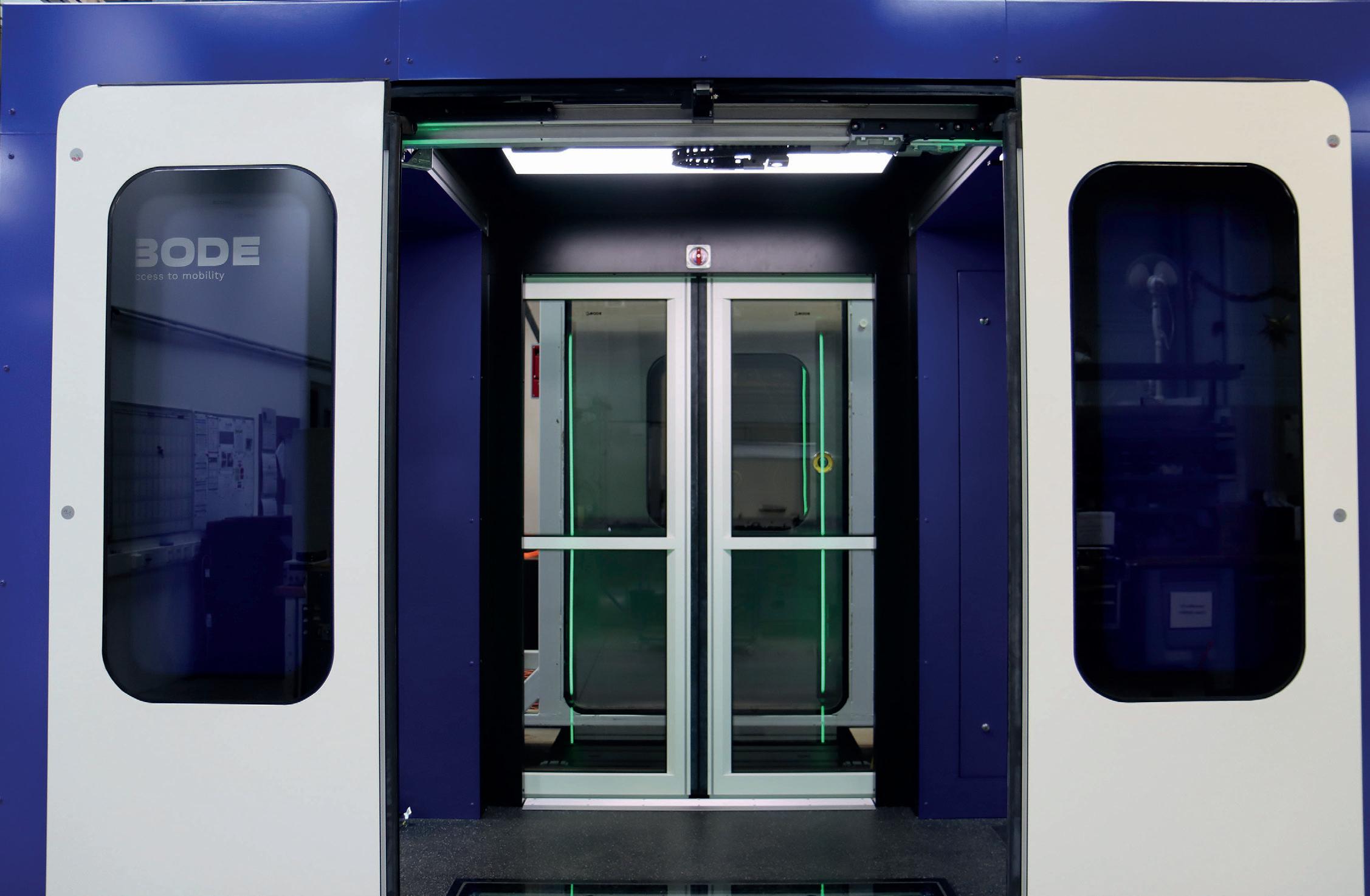
hen a new train is brought into service, industry commentators wax lyrical about the smoothness of the ride, the large gangways that give the train a light and airy feel, the amount of luggage space, facilities for wheelchairs and bicycles, and even the comfort (or lack of it) of the seats.
Hardly anyone mentions the doors. However, the door is the first connection that a passenger makes with a train. The size of the door, and of the vestibule behind it, defines how quickly passengers can board and alight and therefore affects train dwell times –important when, on a busy network, a train may only be stationary for about 45 seconds.
And don’t forget to ‘mind the gap’.Door systems can be as innovative as any other part of the train, even though not many people notice.
Nick Thomas heads up BODE in the UK, one of the leading manufacturers of train doors and door systems. “The doorway has the first opportunity to create a positive impression in terms of the entrance and boarding the train,” he said.
“Innovation is absolutely key, not only in terms of perceptions and branding but also reliability and pushing the safety agenda. We innovate so that we can make the whole experience more efficient, enjoyable, safer and closely monitored.
“Previously, many door systems were operated pneumatically. However, technology has moved on and, at BODE, we have been developing our electronic systems, which are a lot more reliable than pneumatic with less maintenance required, fewer components and a reduced risk of obsolescence. We are now onto our fourth generation of our DCU (door control unit) and this is incorporated into our BIDS® swinging/sliding door system, which has fewer components and takes up less space, so it is easier to install into a train.”
As well as the door itself, a typical BODE installation also includes a step system, increasing accessibility for those who would otherwise have problems boarding and alighting from a train – people in wheelchairs or with pushchairs and prams, those
who have difficulty walking and climbing steps and passengers with heavy luggage. BODE step systems are already operating in the UK, on Tyne and Wear Metro and the new Merseyrail Class 777 trains for example.
Our electronic door system can help significantly reduce incidents of trap and drag
BODE door management units also provide the potential to add safety. These originally used two sensors for each door, one inside the train vestibule and one mounted outside the train, but that has now been refined to one single sensor. The Boarding Management Unit (BMU) flips open when the train’s speed falls below five miles per hour and controls when, and how, the door opens and closes.
“This can help significantly reduce incidents of trap and drag,” Nick explained. “It prevents the doors from closing on objects, it can monitor the gap between the train and the platform to see whether any objects
have fallen within that gap – it can identify objects down to the size of a golf ball – so it is very sensitive and is not relying on CCTV, which many of these systems do.
“CCTV systems, powered by artificial intelligence monitoring the TV images, notify station staff of a potential incident, but that, to my mind, does not prevent the incident from occurring in the first place. Our digital systems control the door itself, thereby avoiding any incidents from happening, rather than simply notifying people once they have occurred.”
If someone or some object should become trapped in the door, BODE sensitive door-edge technology immediately retracts the door so the object can be removed. These objects can vary in size from a passenger’s arm, or even their complete body if they are trying to jump onto the train as the doors are closing, to the strap of a handbag or a dog lead that may be only a few millimetres thick.
In the case of an arm, the passenger will only feel a slight pressure before the door reopens. If the trapped object is a thin strap, or perhaps part of a coat, then the sensors in the door edge are finely tuned so that they, too, are identified and the doors reopen.
While all of this innovative door systems technology can be built into new trains, it can also be retrofitted to old ones. It’s a major job, but not impossible, and it brings immediate benefits to operators (improved reliability), train owners (reduced maintenance) and passengers (enhanced safety).
BODE is currently working with Great Western Railway (GWR) to replace the pneumatic door systems on Class 165 and 166 trains. Built between 1990 and 1993, the 151 carriages in the fleet include over 600 pneumatically operated doorways. These were last overhauled nine years ago, and their performance is deteriorating.
Working with GWR and train owner Angel Trains, BODE is replacing the entire unit with a new electronic system in what is believed to be the first complete retrofit of an existing class of train in the UK. It’s a big job. As well as the door panels themselves, complete with glazing, the sealing frames around the portals will be replaced, together with the upper panels that drop down to expose the drive units, the lateral cover panels and the entire step threshold.
The First-In-Class fitment will commence in 2025, followed by a testing programme that will ensure the doors work as planned whatever the cant of the track, that water doesn’t enter the cabin in heavy rain, and that the electrical controls function correctly when connected to the train’s management system.
Once this programme is complete, fitting new doors to the rest of the fleet will commence in 2026.
If retrofitting doors is possible on existing fleets, yielding major benefits in terms of cost, reliability and the vast improvement to safety, then why aren’t more train owners and operators going through the same process?
“I think many train operators still don’t realise what is possible,” Nick replied. “Doors are often taken for granted, though we are demonstrating that major benefits in terms of passenger welfare and operational efficiency can be brought to existing fleets.
“Operators face challenges such as budget, penalties, strategic priority and the move into public ownership, but in many cases I think it is a lack of awareness of what is possible. While they see the door system as an integral part of the trains they have, they may not have considered all of the benefits that replacing the door system will bring.
“I am sure that, once we realise the success of the Class 165/166 retrofit, they could well reconsider…”


Nick Thomas, BODE.
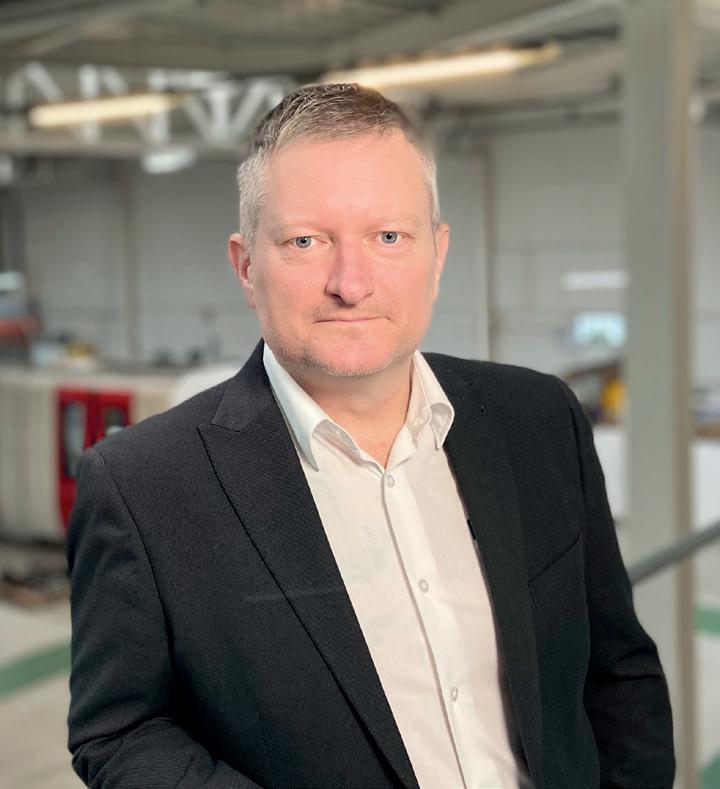
Door systems for both new and existing fleets can be as innovative as any other part of the train
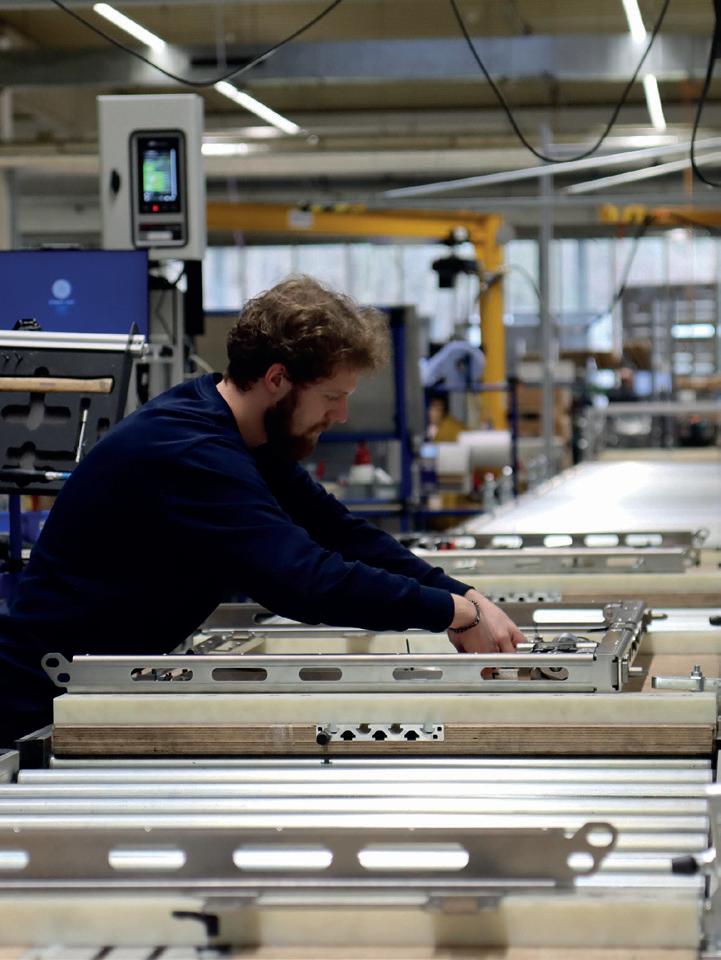

By Rob Forde, Director of Strategy and Skills, Global Centre of Rail Excellence.

With technology moving so fast now in fields such as artificial intelligence, advanced manufacturing, quantum computing and automation, the opportunities for invention and creativity in rail are endless. In rail’s 200th year, there’s arguably never been a more exciting time to be involved in rail innovation.
But often when teams push the boundaries of rail technology forward it’s the physical outputs and ideas that we as industry focus on. From the steam engine to the bullet train, it has always been this way.
Yet behind each new technological development there is always a human story. A tale of people, innovators and ideas struggling to be born.
These stories are themselves seldom clean and linear. Teams that have brought a new product to market have often gone through the emotional wringer in the design, development and funding stages. Many with viable ideas – too many, in fact – have had to drop out because the process of innovation takes too long and is often too costly.
From the vantage point we have at the Global Centre of Rail Excellence (GCRE), it’s fascinating to see and to understand those very human stories. The lengths that teams will go to in the name of progress and technological advancement. We’re lucky to have so many talented people in our industry, but it’s clear we need to support them more effectively to take
advantage of this new age of opportunity in rail innovation.
GCRE is a place that we see as something that can provide that support to succeed; an enabler, not simply of new products and technologies, but of the enormous reservoir of talent we have in UK rail. We see the facility we are developing as a place to test, fail, refine and test again the products that will be the backbone of tomorrow’s net zero railway by providing unique new infrastructure and facilities for the people behind them.
The recent £7.4 million Innovation in Railway Construction programme we hosted for Innovate UK has been a great example of what we can do in this space. Partners involved in that competition used the
infrastructure we have already developed at the GCRE site to bring their ideas to life. The creative ideas funded through the competition had been years in the making; many viable ideas and products unnecessarily delayed by a lack of high-quality facilities at which to develop their ideas and prototypes faster.
What came back from teams involved in the competition was just how useful GCRE had been and, excitingly, the possibilities it opened up for the development of new technology in the future.
I don’t think it’s that it would have taken us longer to get to market without GCRE, I think we just wouldn’t have been able to do it
That was what Universal Signalling Chief Executive Dr Sam Bemment said about his experiences of working at GCRE through the programme. The new signalling system his team have developed could significantly lower the costs of re-opening rural rail lines and through the Innovate UK competition they have been able to develop their product on site and showcase it to an industry audience.
It has been brilliant to see the team grow and evolve as a result of their work at GCRE as much as it has been to see their technology develop. Through their work at GCRE Universal Signalling have been able to secure equity investment in their company, signing a new strategic licencing collaboration and growing their potential as a business.
Teams like that are powerful advocates for what transformative innovation in rail can do. Faster technology development. Commercial potential. New investment. Reducing the costs of rail. Ideas with a social purpose. It’s in our collective interest to give talent like this the tools they need to keep pushing the boundaries of rail innovation.
Even before we develop the larger facility at GCRE we’re determined to do what we can to support more teams like these to innovate and to push forward the design and deployment of new technology on passenger and freight railway lines. That’s why at the GCRE site we have developed a 450m Road Rail Vehicle (RRV) Line, more than 1,000m of showcase space and on-site conference and training facilities as part of our new Bronze Tier Benefits Scheme.
Though we haven’t yet constructed the full set of facilities at GCRE, we want to better support teams and talent in rail to push the industry forward.
The new bronze benefits package at GCRE costs £2,500 per annum and provides a five-metre showcase zone for teams to highlight products. The package includes a branded information board and tailored visits for clients and customers to the GCRE site.
The launch of the bronze tier is an opportunity for organisations of all sizes to bring products for showcasing at GCRE to help in their own R&D and commercial journeys. It represents an opportunity for organisations of any size to bring their products to site, to put them in a rail environment and to showcase their ideas to the industry and help them engage across the supply chain.
GCRE has the potential to be transformative for the rail industry and one of the groups we think it will be most useful to is the extraordinary talent we have in our industry. A place to bring out the best in themselves and to help take our great industry forward.
More information on the GCRE opportunity can be found here: www.gcre.wales/partners
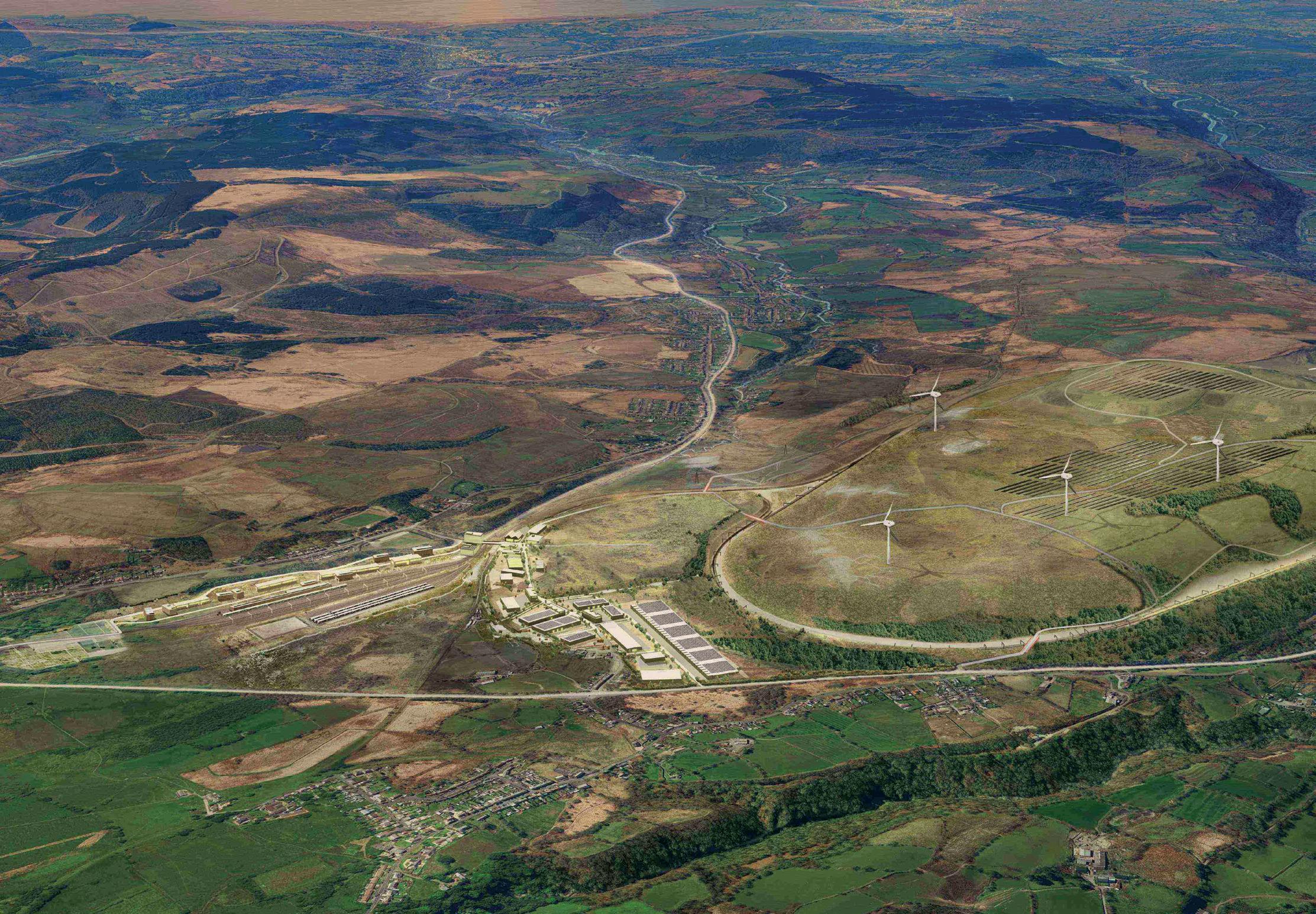







Hitachi Rail, working with local and international partners, has successfully trialled hybrid battery-powered trains and won its first order for the innovative solution to decarbonising the railways.
Arriva Group recently ordered nine battery hybrid trains for Grand Central, using LFP batteries.
Image: Hitachi Rail
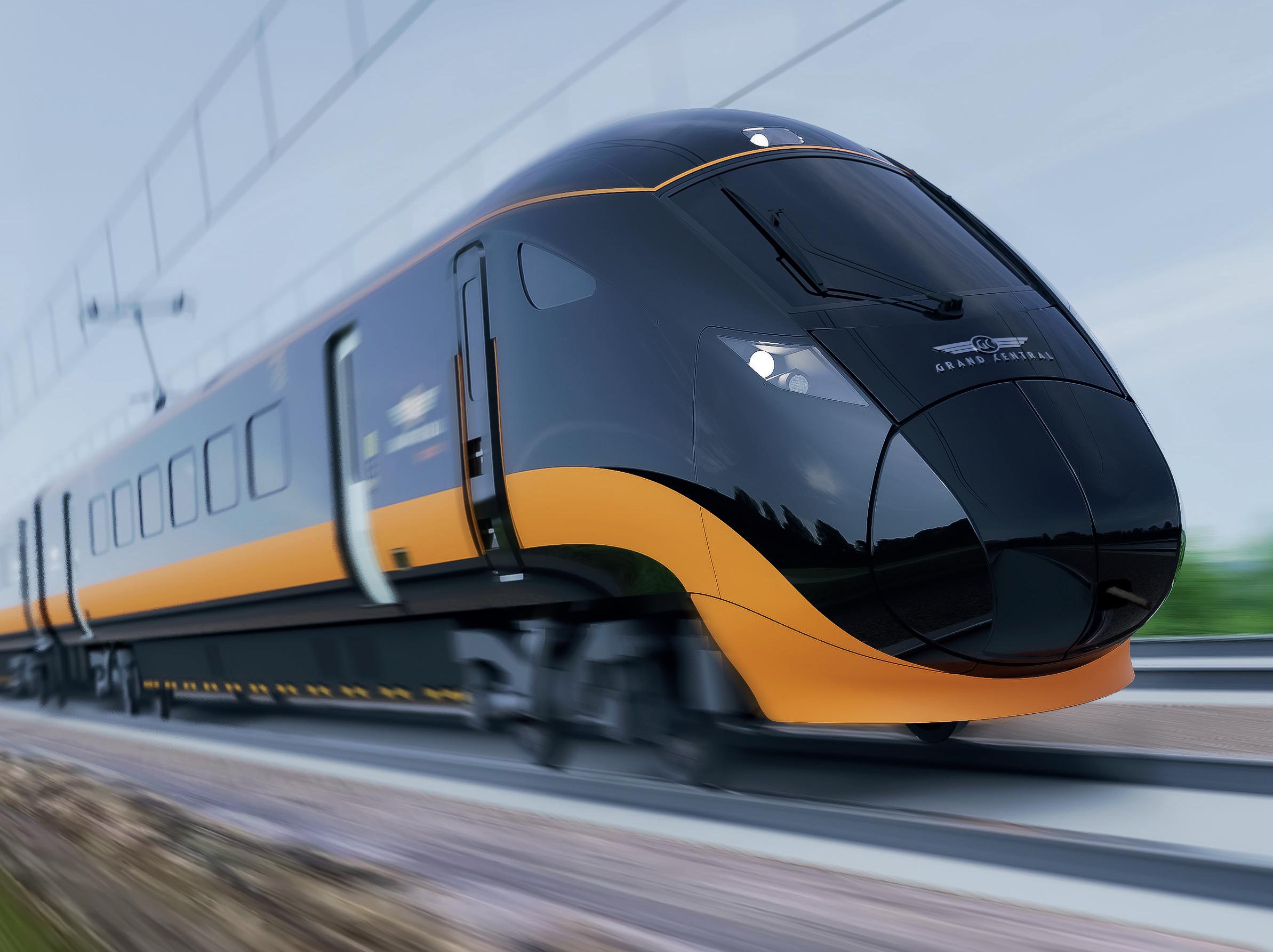
The Government has set the railway the target of having zero-carbon emissions by 2050 and of removing all diesel-only powered trains from the network by 2040. Scotland aims to accomplish both tasks five years earlier.
All of which wouldn’t be a problem if the railway was fully electrified. Electric trains are cheaper to run, require less maintenance and are lighter than diesel-powered ones, putting less stress on the track which in turn also needs less maintenance, though the overhead wires do need maintaining.
But the network isn’t electrified, and won’t be until well after 2050. So, another solution is required.
Alternative fuels such as hydrogen, used to generate electricity via a fuel cell that can then power the otherwise-electric train, have been trialled, but ‘green’ hydrogen, produced by splitting water into hydrogen and oxygen using electricity from renewable sources, is not generally available. Experts feel that hydrogen
power in the UK will not be practical until there is a hydrogen economy, which there isn’t as yet.
Arriva
Group announced an
order for nine battery hybrid trains to replace its entire Grand Central fleet
The clean alternative is to use batteries, particularly in ‘hybrid’ trains that also pick up electricity from overhead wires, or a third rail, when and where it is available. The train then runs on mains power when it can, and also recharges its batteries ready for when it has to go ‘off grid’. This approach is termed ‘discontinuous electrification’.
Hitachi Rail builds trains in the UK in Newton Aycliffe, County Durham. Elsewhere in the North East, Nissan Motor Corporation builds the Leaf electric car in
Sunderland, using batteries manufactured in Gateshead by Turntide Technologies.
Suitable battery technology is therefore readily available locally, so, working with Turntide and in collaboration with Innovate UK, the University of Birmingham and DB ESG, Hitachi Rail has developed a battery pack – with the equivalent of 16 car batteries – that can be fitted to its trains and power the traction motors when no mains source is available.
This battery, which employs lithium-ion technology, has been trialled successfully on the Transpennine route and adapted for use in a regional train. Since then, a new lighter battery pack, using LFP (lithium iron phosphate) chemistry, has been developed which is 40 per cent smaller and delivers a 22 per cent improvement in energy density over the first design. Smaller batteries are essential to achieve inclusive design for lower-floor trains and level access at platforms. Lower floors provide less space for
batteries, making this project an important next step in promoting train accessibility.
A compact and powerful battery can further reduce weight and make maintenance and the retrofitting process easier. These benefits and learnings will also be incorporated into the intercity battery train product that is also being trialled and will ensure that Hitachi Rail will have the next generation of battery solutions for regional and intercity trains.
The first Intercity battery train completed its testing in the north of England in November 2024
The first Intercity battery train completed its testing in the north of England in November 2024. A diesel-powered train had one engine removed and a 700kW battery pack was installed in its place. Trials then took place to establish the train’s performance in battery-only mode and as a supplement to the remaining diesel engines.
Conducted by Angel Trains, Hitachi Rail, DfTO and TransPennine Express, the trials showed that the new battery technology met, and in some cases even surpassed, the key objectives of the trial.
Fuel costs savings were calculated to be between 35 and 50 per cent, surpassing previous predictions of up to 30 per cent. In addition, just one battery managed to power the train to speeds greater than 75mph, clearly demonstrating this technology can be used to enter and exit stations solely in zero-emission battery-mode, thus improving air quality and reducing noise pollution.
The battery-powered train was able to achieve all journey times and performance requirements, so it can meet operators - timetable requirements, and the battery matches the weight of a diesel engine
and is installed in the same under-floor space, ensuring no risk of track degradation and no impact on the passenger environment.
The Government, which set the strategy to phase out diesel, was impressed by the result. “Rail is already the most environmentally friendly form of public transport, and the success of this trial will pave the way for even greener, more reliable journeys for millions of passengers,” said Rail Minister Lord Peter Hendy.
“This technology will play a vital role as we deliver our ambitious plans to transform and decarbonise the railways, and it could open the door to a more affordable expansion of the network for communities across the country.”
On 3 April 2025, Arriva Group announced an order for nine battery hybrid trains to replace its entire Grand Central fleet, providing a major boost to regional economies and offering passengers more comfortable, greener travel options.
The order for 45 Hitachi Rail ‘tri-mode’ cars (electricity/battery/diesel), which have the flexibility to run on electrified and non-electrified tracks, along with a 10-year maintenance contract, represents an investment of around £300 million. Grand Central’s order follows approval by the rail regulator for extended track access rights for its existing services through to 2038, with the investment underpinning Arriva’s long-term commitment to UK rail and to delivering sustainable public transport solutions to communities up and down the country and across Europe.
The new trains will increase seat numbers by 20 per cent, which means 400,000 additional seats per year will be available to passengers travelling between the North East, Yorkshire and London. Because of their tri-mode capability the trains

could be used on other routes in the future. They are also expected to reduce both emissions and noise. Following the contract with Arriva Group, Hitachi will place orders worth nearly £10 million with Turntide Technologies to continue R&D and supply LFP batteries. This commitment creates valuable backlog and pipeline for Turntide Technologies over the coming years and will result in the expansion of its Gateshead facility.
This continued partnership between Hitachi Rail and Turntide Technologies ensures that rolling stock manufacturing can unlock new growth in the North-East - battery sector. Both companies believe that new battery trains, and retrofitting batteries onto existing trains, can create a sizeable and long-term advanced manufacturing and industrial opportunity for the UK’s railways.
Commenting on the first order for UK battery-powered trains, Jim Brewin, Hitachi Rail Chief Director of UK & Ireland, said: “As we celebrate 200 years since the birth of the modern railway in the North East, it’s symbolic that innovative battery trains are being developed in Newton Aycliffe.
“Battery trains’ ability to deliver cheaper, greener and more reliable journeys means we are unlocking a new advanced manufacturing opportunity for rail today.
“Following the successful trial of this pioneering battery technology last year, Arriva and Angel Trains are transforming Hitachi’s £17 million R&D investment into the first battery train order to be built in the UK.”
This technology can be used to enter and exit stations solely in zero-emission battery-mode

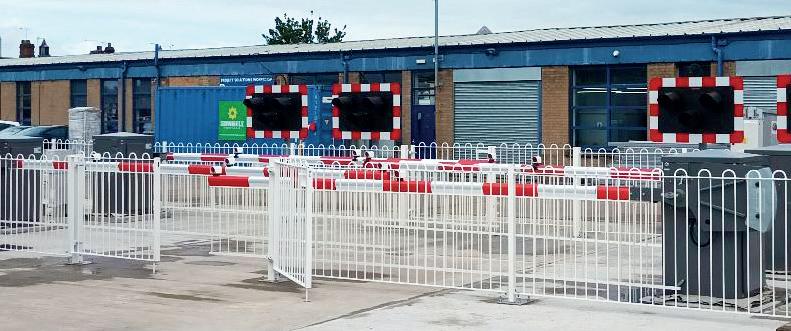
The global rail industry faces mounting pressures to enhance efficiency, reduce costs and achieve ambitious decarbonisation targets. In this dynamic environment, Unipart has established itself as a trusted innovation partner, seamlessly integrating in-house expertise with collaborations across SMEs, academia and technology partners.
This collaborative approach enables Unipart to deliver comprehensive end-to-end supply chain solutions-designing, making, moving and improving components across its customers’ supply chains. By applying this end-to-end approach, Unipart drives operational efficiencies, enhances performance and delivers measurable savings in time, cost and carbon, helping rail operators meet both immediate challenges and long-term sustainability goals.
For Unipart, innovation is more than a corporate slogan-it is embedded in the company’s DNA. Its open innovation model fosters collaboration across the rail sector and beyond, ensuring the business remains at the forefront of technological advancements and capable of delivering solutions that meet evolving industry needs.
Unipart leverages decades of knowledge and extensive in-house capabilities to develop and refine innovative solutions. By combining engineering expertise with strategic sourcing and collaborative development, the company brings new technologies through the stringent product approval process
and into daily use. This capability allows Unipart to respond swiftly to industry challenges and deliver solutions that enhance performance and efficiency.
Recognising the value of diverse perspectives, Unipart actively engages with SMEs, academic institutions and technology partners. Collaborations with leading rail academics and initiatives such as the UK Rail Research and Innovation Network (UKRRIN) enable the company to embrace the key themes of the Rail Technical Strategy. These partnerships strengthen digital capabilities and support the development of next-generation products and services.
isn’t just about creating new
- it’s about rethinking how the rail industry operates at every level
Digital technology is a core component of Unipart’s innovation strategy. The railway industry requires transformative, performance-improving digital solutions, however, integrating these technologies necessitates a comprehensive understanding of complex rail network systems. Unipart’s condition monitoring solutions monitor thousands of assets and translate collected data into actionable information. This approach supports improved decision-making
and automates the supply chain to target maintenance before failure, enhancing overall system reliability, reducing cost and disruption.
Unipart’s manufacturing services draw on decades of expertise and a commitment to adopting new technologies. The company manufactures, repairs and maintains solutions across plant and machinery, signalling and telecoms, power and electrification, rolling stock components and trackside infrastructure. By combining engineering capability with advanced manufacturing, Unipart delivers products that enhance safety, efficiency and reliability across the rail network.
The company also applies its innovation ecosystem to maintenance, repair, and overhaul (MRO) solutions. By combining expert engineering, advanced diagnostics and a circular economy mindset, Unipart helps rail operators optimise, repair and service equipment, improving operational reliability and safety while reducing costs, carbon emissions and inefficiencies across the supply chain.
Through this comprehensive model, Unipart not only addresses today’s industry challenges but also helps shape the future of rail transportation. Its collaborative approach ensures the company remains a trusted partner, driving performance improvement, operational efficiency and sustainability across multiple sectors, including rail and public transport, technology, automotive, healthcare, aerospace and defence, consumer and retail, and industrials.
Unipart has an extensive portfolio of revolutionary solutions that address the evolving needs of the rail industry, improving efficiency, safety and sustainability.
Signalling: Unipart delivers comprehensive signalling solutions, integrating advanced technologies to ensure safe and reliable train movement control. The new MK3 signal module offers versatility and additional features and is fully retrofittable into existing Unipart Dorman housings, eliminating the need for infrastructure modifications and enabling straightforward, cost-effective renewals.
Level crossings: The LX Plus solution is a modular, end-to-end system designed to simplify the deployment, management and maintenance of level crossing assets. By combining pre-assembled components with off-site function testing and streamlined logistics, LX Plus allows rail operators to install, maintain and upgrade level crossings more efficiently and safely.
Plant and machinery: Unipart’s Construction, Maintenance and Renewal machines are designed to accelerate track work while enhancing safety and reducing operational costs. Manufactured in-house, these transformative solutions streamline track construction and maintenance projects, enabling operators to deliver work faster and more reliably.
Fuel management: The FuelActive fuel pick-up system solves the issue of diesel contamination, delivering 92 per cent cleaner fuel to engines and saving up to five per cent in fuel and (CO2) emissions, improving efficiency across fleets.
Power and electrification: Unipart provides advanced power distribution systems, including electrical control panels and switchboards, engineered for seamless integration and reliable operation. These systems support traction, rolling stock and infrastructure projects, helping operators deliver efficient, safe and resilient rail services. Through this broad portfolio, Unipart demonstrates its ability to combine technical expertise, innovation and practical solutions to meet the complex challenges of the global rail sector.
We are uniquely positioned to help the UK rail sector adapt and thrive in the face of complex challenges
• Time efficiency: Unipart’s innovations streamline installation processes, reducing project timelines and enhancing overall efficiency. The LX Plus solution removes on-site failures and reduces time on site by 20 per cent, delivering a safer working environment and reducing passenger and public disruption through reduced possession time.
• Cost savings: Through the implementation of advanced technologies and efficient supply chain solutions, Unipart has helped clients achieve significant cost reductions. An example of this is Unipart’s refurbishment programme for point machines, which delivered savings of approximately £750,000 for Network Rail compared with the cost of procuring new units.
• Carbon reduction: The adoption of zero-emissions technologies and sustainable practices is accelerating carbon reduction across the industry. Unipart’s EI. Energy Control System plays a key role by giving users real-time visibility and control over their energy consumption. By combining live data, predictive analytics and expert insight, EI. enables operators to pinpoint inefficiencies, take immediate action and optimise energy-intensive processes to achieve measurable reductions in both carbon emissions and operating costs.
Unipart continues to focus on the future of rail, with ongoing collaborations in areas such as artificial intelligence, digital twins, hydrogen power and energy storage. By working closely with industry partners, the company aims to ensure the sector remains resilient, efficient and sustainable in the face of emerging challenges.
Unipart’s approach to innovation-rooted in collaboration, expertise and a commitment to delivering practical solutions - positions the business as a pivotal partner in the transformation of the global rail industry. By combining technological advancements with supply chain excellence, the company is addressing today’s needs while shaping the railways of tomorrow.
Nicola Kissaglis, Head of Product at Unipart, said:
“Innovation isn’t just about creating new productsit’s about rethinking how the rail industry operates at every level. At Unipart, we focus on practical, sustainable solutions that address real-world challenges, from optimising operations and improving safety to reducing environmental impact. Our approach is about making a tangible difference for operators, passengers, and the wider rail network, ensuring that railways are not only efficient and reliable today, but also resilient and adaptable for the future.”
Dr David McGorman, Managing Director - Rail & Technology at Unipart, said:
“At Unipart we see innovation as a responsibility as much as an opportunity. By harnessing our diverse portfolio across supply chain, digital technology and engineering excellence, we are uniquely positioned to help the UK rail sector adapt and thrive in the face of complex challenges.
“Nicola and the wider Unipart teams exemplify the collaborative spirit and technical excellence that define our business.
“From modernising infrastructure to embedding sustainable practices, our collaborative approach ensures we deliver solutions that drive measurable benefits and long-term resilience for operators, passengers and the wider economy.”
Contact us: contactus@unipart.com 0186 577 8966 www.unipart.com %

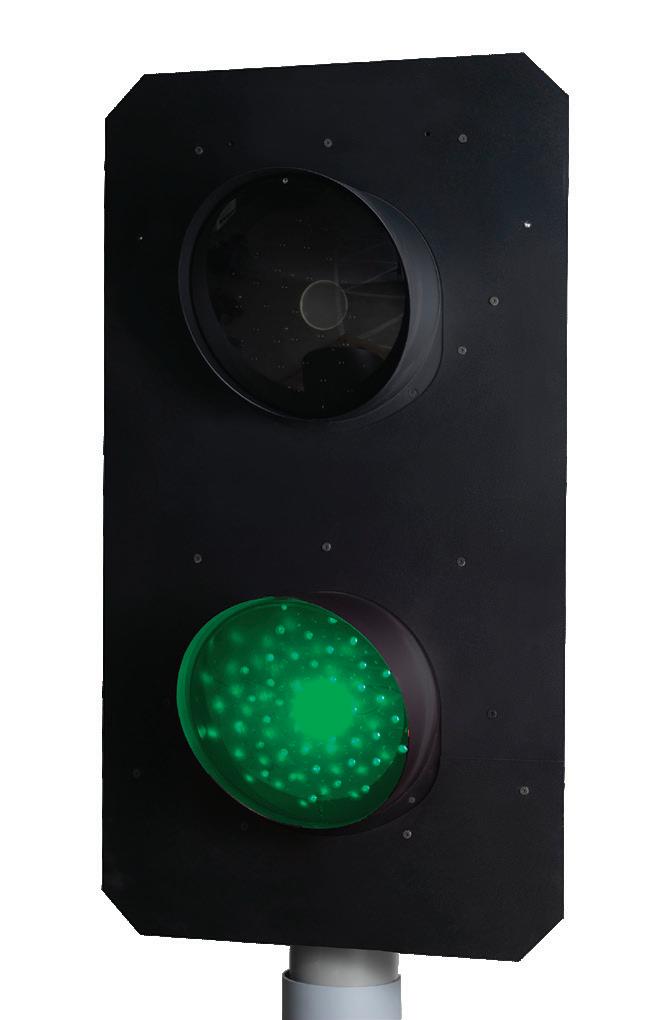
Steve Lock of Eleusis Engineering explains how the innovative use of 360° photogrammetry is reducing the cost of structures inspections while keeping engineers safe.


Defining innovation can be tricky. It isn’t invention, so it doesn’t include new products and devices. Rather, it is the application of those new devices, and even some old ones, in ways that the original designer hadn’t imagined they could be used.
So when the German company Spheron developed a spherical camera – 24 camera lenses arranged in a ball and each with four LED lights surrounding it – it was conceived as a measuring device, to be placed in large spaces so that point clouds could be derived and measurements extracted. It was a great invention.
However, the British company Eleusis Engineering, specialist in inspecting structures on railways and other structures, saw a completely different use for this 360-degree, HDR camera with a potential RAW data
resolution of 1.1 gigapixels. Using photogrammetry techniques, it would allow engineers to visually inspect structures such as bridges, tunnel linings, station roofs, all from the comfort of their desks.
Steve Lock, Managing Director of Eleusis Engineering, is enthusiastic about the possibilities. “We’re changing how infrastructure is understood and delivered,” he said. “With Spheron’s 360° photogrammetry, we ‘capture once, use many times’— building a high fidelity, navigable view of an asset and its surroundings that anyone can interrogate from the comfort and safety of their desk.
“Designers, maintainers and installers can review site conditions together – clearances, interfaces, access constraints, fixings, residual hazards – without stepping trackside or onto the carriageway. Instead
A Spheron camera alongside a tennis ball to give an idea of scale.
of sending people into tunnels and live environments to ‘go and see’, we now bring the railway into the comfort and safety of an office environment.
“With Spheron 360° photogrammetry, we create an accurate, navigable record of the asset and its context, so designers, maintainers and installers can interrogate realworld conditions – clearances, interfaces, access and residual hazards – together, safely, from anywhere. In a single Teams session, stakeholders see the same visual truth, agree what to repair or replace, and commit to the right plan.
“The impact is tangible: fewer non-essential site visits and possessions, faster design cycles, stronger evidence for approvals and a defensible, digital audit trail across the lifecycle of a bridge, tunnel or railway station asset. For the likes of Network Rail and
National Highways, this is programme certainty delivered – better safety, better cost, better outcomes.”
Creating a digital twin of the live railway has never been so simple
When a defect is spotted, or even something that could do with further investigation, then that can be highlighted and annotated within the spherical image and an inspector despatched to the exact location. There is no need for large and expensive scaffolding rigs – an inspector on a mobile elevating work platform (MEWP) or in a cherry-picker can go directly to the annotated spot and carry out a hands-on inspection. It saves time, money and keeps the inspectors off the railway and safe from risk as much as possible. Depending on the location, it can also avoid the need to close the railway while the inspection is carried out.
Of course, even something as advanced as a 360-degree 1.1 billion pixel camera can’t do everything. It can view tunnel linings, but it can’t see up into vent shafts, for example. And it can be used to inspect the underside of beams in station roofs, but what about the top side?
The solution to those problems is to use a drone or other mobile platform, fitted with high-resolution cameras, to photograph those items. Even constricted areas, narrow-bore culverts and nooks and crannies in complex structures aren’t out of reach of drones, remote-controlled boats and robot crawlers.
Spheron’s SceneCenter technology can then take
things to the next level by combining all of these images into one immersive experience. Engineers in their offices, using large-screen televisions or even virtual-reality headsets, can view a structure from any angle, looking for faults and signs of structural decay. If a defect is found, what then? Rust is discovered, but is it just surface rust? Or is it affecting the strength of the beam? The answer is to fit the inspection device with a motorised wire brush and ultrasound probes, so the thickness of good metal can be measured. And when the final report is submitted, it can include a complete suite of annotated images, all taken from the 360-degree original.
Elios 3 collision-tolerant drone with non-destructive testing module for ultrasonic thickness testing
Image: Flyability

This new technology can be used for other applications too. Briefing an on-track team before they go on site can now use the same all-encompassing imagery enhanced by highlights and annotations. So, before even setting foot on the railway, workers can see exactly
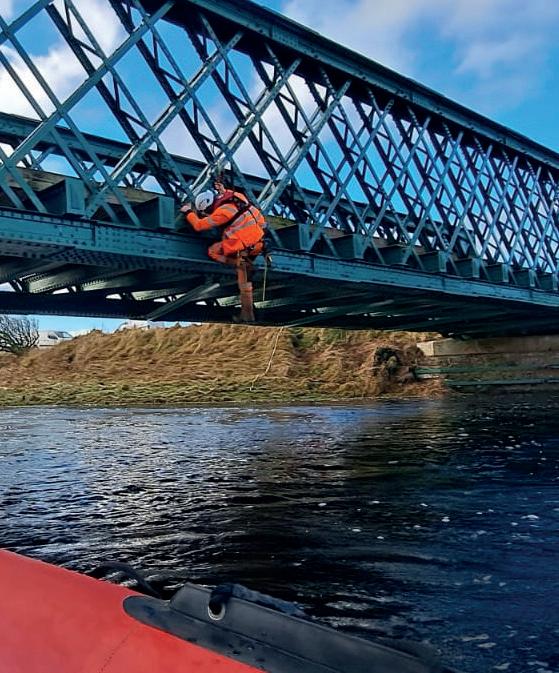
Once a defect has been identified, an inspector can be sent directly to its location.
Image: Eleusis
the limits of the site, any obstructions or hazards, where access points are, what the vegetation looks like, and the condition of any assets they will be working on. If geofencing is to be employed, that can also be marked, and the technician setting up the geofencing can be sure that no hazards are missed.
The use of 360-degree photogrammetry for applications such as these is truly innovative. Eleusis is already using it on site, inspecting the interior of the Severn Tunnel for AmcoGiffen to check the condition of the overhead wiring (OLE) – something that maintainers have continually had trouble with in the wet and corrosive conditions inside the tunnel – and the effectiveness of the drainage.
In a way, this new technology can be used to upgrade and update the information generated by Network Rail’s Geo-RINM (Rail Infrastructure Network Model) programme, which used helicopters to photograph and map the entire rail network. It looked at vegetation, access points, woodlands and other threats to the railway, but it was carried out 10 years ago. Now, Eleusis Engineering can update local areas of that network-wide map, in high resolution. Summing up, Steve Lock commented: “Our mission is simple: put reality on the screen so people don’t have to be in harm’s way. That’s how we deliver safer projects, stronger evidence and greater certainty for Britain’s most critical infrastructure.”
We are bringing assets into an office environment so they can be reviewed in comfort and safety
A Spheron camera deployed in a railway tunnel.
Image: Spheron


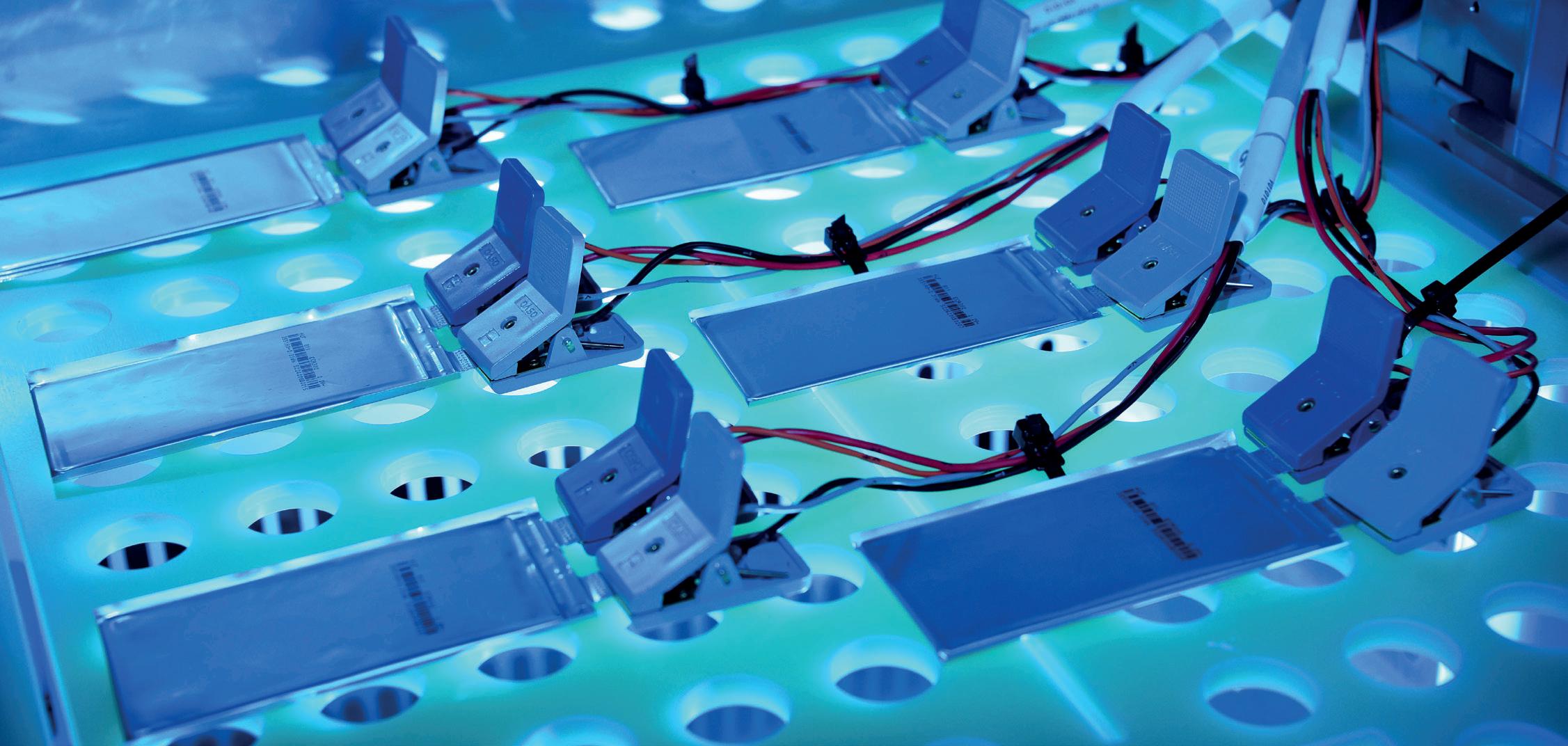
In the race to decarbonize Britain’s railways, Great Western Railway (GWR) has delivered a pioneering verdict: fast-charge battery trains are not just viablethey’re the smarter, cheaper path forward for branch lines and regional routes.
GWR’s recent whitepaper, detailing a year-long trial on the West Ealing to Greenford line, paints a compelling picture. Using a converted Class 230 as a testbed, GWR demonstrated that battery-powered units can slash carbon emissions by 80 per cent compared to diesel equivalents, while achieving a total cost of ownership as low as £2.52 per train mile- far below diesel’s £4.50 or full electrification’s £3.50.
The set-up is elegantly simple: lineside battery banks feed power through short charging rails at stations, allowing three-to-four-minute top-ups that keep trains running indefinitely without the hefty upfront and operational costs of overhead line equipment (OLE).
This isn’t pie-in-the-sky innovation; it’s proven in real-world conditions, enduring rain, leaves, even sheep and other debris on the tracks. As diesel fleets from the 1980s creak toward retirement, and with manufacturers ditching pure diesels amid tightening policies, batteries emerge as a key solution to a greener rail network, saving taxpayers millions and aligning with Department for Transport goals for efficiency and sustainability.
Yet, while GWR’s trial is ground-breaking, scaling this vision nationally demands battery technology that doesn’t just work but excels under rail’s punishing demands: rapid charging, extreme durability, and high power without compromise.
Echion Technologies’ XNO® niobium-based anode material is a sensible leap in lithium-ion batteries that could turbocharge GWR’s fast-charge model. Unlike conventional lithium-ion chemistries, XNO enables full charges in under six minutes, boasts over 15,000 cycles of life, and delivers 40-60 per cent the volumetric energy density of alternatives like lithium titanate (LTO), as used in the GWR trial.
In my view, integrating XNO isn’t just an upgrade; it’s the key to making battery trains not only feasible but irresistible for operators across the UK.

Preparing the next set of test samples. Image: Echion Technologies
GWR’s fast-charge system hinges on quick, opportunistic top-ups at stations, drawing up to 1MW of power through track-mounted rails connected to lineside batteries. Its testbed, with 300kWh onboard capacity, made a five miles round-trip, recharging in bursts scaled to 350A for safety— proving unlimited range without full electrification’s £1-1.5 million per single-track kilometre price tag. In the trial, regenerative braking doubled energy recovery, keeping lineside batteries topped up and suggesting resilience even during power failures.
But imagine amplifying this. XNO’s ultra-fast charging can achieve short-cycle ‘micro-charge’ events in one-to-two minutes, reducing GWR’s already aggressive three-to-four-minute dwell times, minimising disruptions and maximising timetable efficiency:
• Battery chemistries aren’t created equal, and GWR’s trial implicitly highlights the need for ones optimised for rail’s unique profile: high input/output, safety in public settings and longevity amid temperature swings.
• Traditional graphite anodes, while energy-dense, suffer lithium plating during fast charges, slashing life to under 5,000 cycles and risking thermal runaway. Lithium iron phosphate (LFP) offers improved cell safety, but lags in power density
and charging speed (often 30-60 minutes to 80 per cent), making it ill-suited for GWR’s quick-top-up model.
• LTO, which was used in the trial compromises on energy density, limiting range and requiring bulkier packs.
XNO’s superior power density facilitates high energy recovery during braking, improved charge energy per stop, and faster acceleration or speed on steep inclines. The higher energy and power density of XNO vs LTO means trains could also operate more efficiently on longer hauls, cutting the current 15-minute charge time required for 80-mile runs to less than six minutes.
Resilience and safety without the cost
Operationally, GWR’s emphasis is on resilience. Environmental extremes (-40 to 60˚C) and high duty cycles under tight schedules complements XNO’s robustness. XNO is already set to power hard-grinding applications in mining and marine, proving its mettle in environments akin to rail’s stop-start, high-load demands.
Safety is paramount: XNO’s safe operating voltage eliminates runaway risks, crucial for passenger-laden vehicles. In addition, its excellent low-temperature performance (down to -30°C without significant
loss) ensures reliability in Britain’s inclement weather, ensuring passengers make their destination, unlike graphite’s cold-weather woes. In rail contexts, there is no resilience trade-off if operators were to choose XNO over LTO.
In my opinion, XNO elevates GWR’s proof-of-concept to commercial dominance. By minimising weight and volume, increasing routes per day, and decreasing the initial capital-expenditure cost, key XNO advantages further reduce GWR’s trial’s £2.52 per mile investment cost. For a sector that projects £800 million savings over 30 years via partial electrification and batteries, XNO stands as the best catalyst, offering low total ownership and rapid ROI that could redefine UK rail economics.
GWR’s whitepaper isn’t just a trial report; it’s a blueprint for national transformation, eyeing branches like Falmouth, Newquay, or cross-country routes from Bristol to the South Coast. With XNO, fast-charging + partial electrification scales effortlessly: Arthur D Little’s analysis favours this approach which can save £800 million and 780,000 tonnes of CO₂ over 30 years, and XNO stands to improve this.
In conclusion, GWR’s fast-charge findings can be amplified when paired with XNO. As a proven
There is one that is optimised for rail It is called XNO® and it delivers:


Full charging in under 6 minutes


enabler of heavy-duty electrification including trains, it delivers capabilities that bridges the gap from trial to rollout, delivering cleaner, more affordable rail at scale. Rail operators and policymakers: this is a call for action – pilot XNO now and accelerate DfT’s vision.
This isn’t pie-in-the-sky innovation; it’s proven in real-world conditions
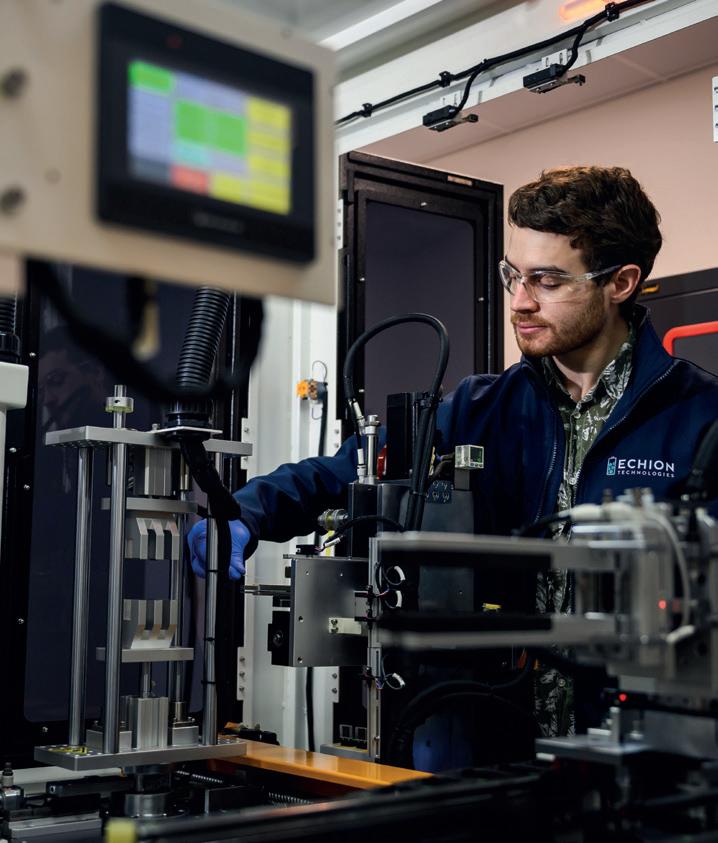
XNO delivers the battery performance that the heavy duty and high-duty cycle transport sectors require.
Image: Echion Technologies
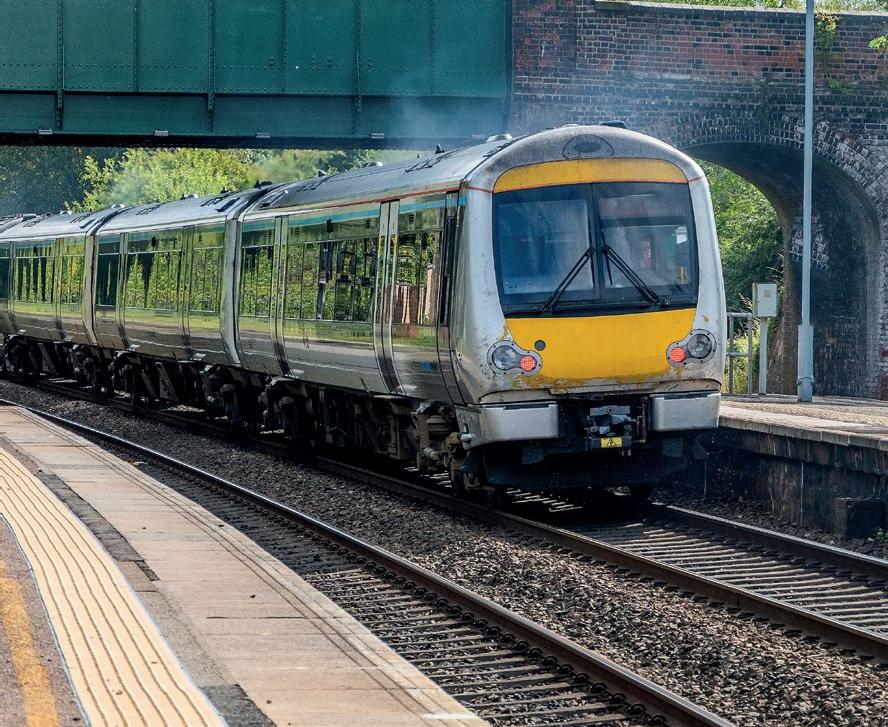
Superior power density facilitating high energy recovery during braking, leading to improved charge energy per stop, and faster acceleration, or speed on steep inclines
A safe operating voltage that eliminates runaway risks, crucial for passenger-laden vehicles
An excellent low-temperature performance (down to -30°C without significant loss) ensuring reliability in Britain’s inclement weather


nnovation very often comes down to accurate problem solving. The problem may be well known, and have been around for a long time, but the innovation is in finding a new way to solve it that hasn’t been successfully attempted before.
Andy Seccombe is Director of Business Development at LC Switchgear (LCS), a leading supplier of DC trackside switchgear that has developed many approved products for major railway installations. When looking to solve a challenge, he remembers the ‘XY Problem’ – a term that describes the way people ask how they can do something that they believe will solve a problem for them, but don’t actually define what the problem is when there may well be a better solution.
LCS experienced this in the railway environment when Network Rail asked the company to develop a better version of the established hook switch – ‘a manually operated electrical isolation switch in conductor rail areas for local isolation’ that is operated by a wooden-handled hook switch pole. It’s all very mechanical and very ‘traditional railway’.
“We spent ages trying to develop a better hook switch,” Andy said, “and in the end we threw it all out and started again, saying ‘what you actually need is some way of isolating the power from the track’.
“The result is the TDCR (Track Disconnector Conductor Rail), a battery-powered, linear-actuator-driven isolator that can be operated remotely from 200 metres away. An added advantage of this is that the TDCR can also be used as a low-cost TD (Track Disconnector). As it is conductor-rail mounted, there is no need for costly civils and extended cables.”
Network Rail has a safer, faster isolations policy. When maintenance teams need to get on track, they need the power supply to the third rail isolated
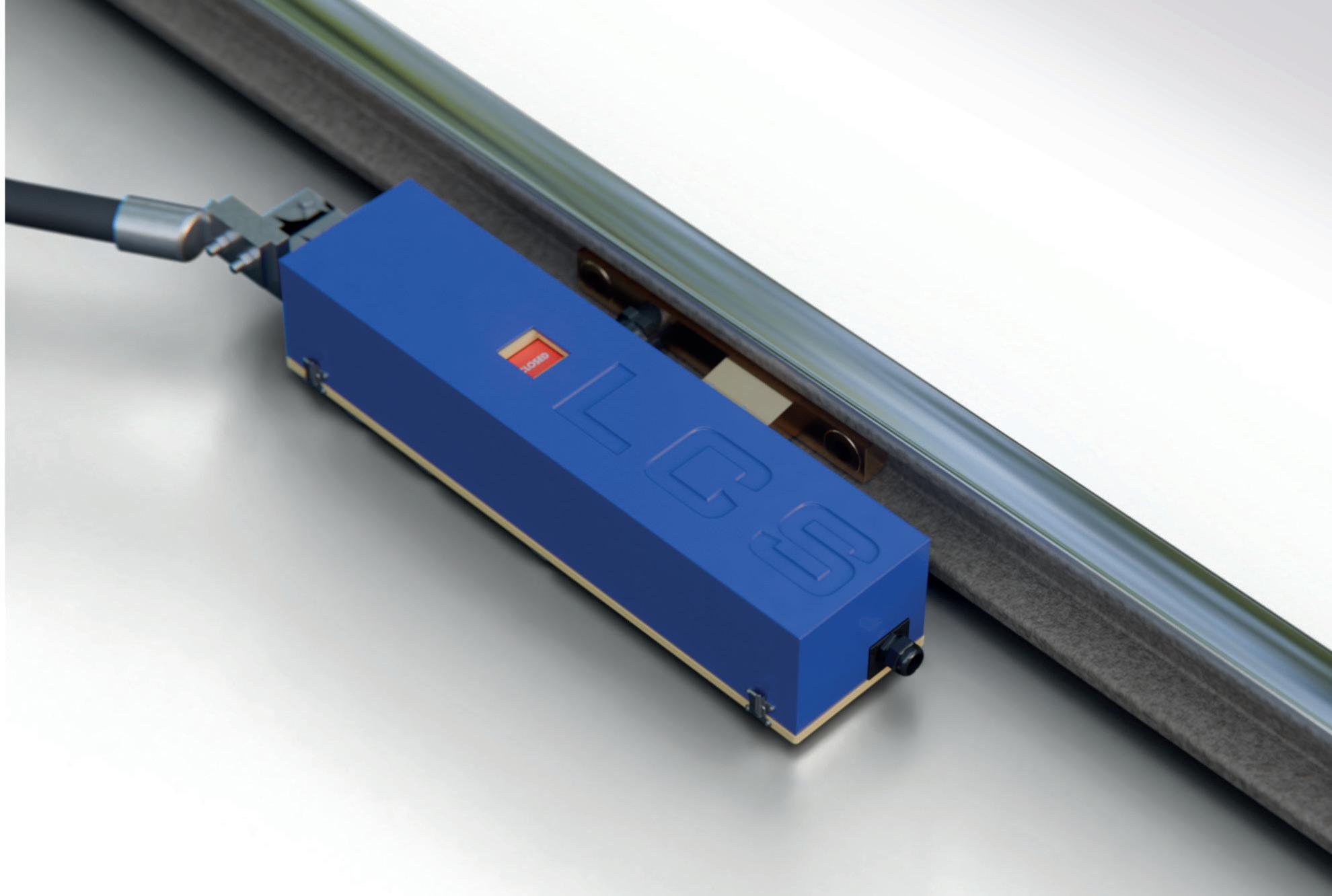
and bonded as quickly as possible to maximise the available time for on-track work in a short possession window.
“That used to take a long time to do,” Andy commented. “It was quite a laborious system. One of the things that they were trying to improve is the fact that, if they have a four-hour window when they can do the maintenance, then the last thing they want to do is spend a couple of hours making it safe.”
LCS doesn’t only operate in the rail industry, and this has given Andy the opportunity to compare the approach to innovation taken by different sectors. “I do tend to find that the railway industry is very conservative, and innovation can be difficult,”
Andy continued. “Any safety critical item has to go through a Product Approval Process, which, although important, can be difficult and laborious. And one of the biggest problems we have is demonstrating that a new idea for the rail industry may not necessarily be a new idea in other sectors.”
One example of this different approach is asset condition monitoring. “In a previous role, I designed high-voltage gas-insulated switchgear. We couldn’t sell substation equipment to National Grid unless it had condition monitoring – it wasn’t an add on, it was an essential,” Andy explained. “They want to be able to be in a control room 50 miles away and know the precise status of their equipment without sending somebody out.
“We’ve developed something similar for Network Rail – condition monitoring that can be fitted to our devices. By monitoring various parameters, we can provide the user with very useful information. Maintenance then becomes predictive and status driven rather than routine.”
The TDCR (Track Disconnector Conductor Rail) is a battery-powered isolator that can be operated remotely. Image: LC Switchgear
As a policy, LCS always tests beyond the specifications. This helps to compensate for ‘noise’ in the system, factors difficult to reproduce in laboratory conditions as well as helping to understand potential failure modes.
For example, LCS uses the MAST (multi-axis simulation table) test rig at the University of Bath to test the effects of vibration on its products. Having established that a product meets the specification, it is then fairly simple to test it for longer, or under more severe conditions, to make sure that the device will have absolutely no difficulty with any vibrations experienced in service – even unexpected ones.
It’s all about properly defining the problem. “More and more, we are pushing to get involved in a project at the very beginning, before preconceived solutions are developed by our customer,” Andy concluded. “Fortunately, we are now getting involved in projects that are years away, so we can help define what is needed and come up with genuinely innovative solutions and hopefully avoid the XY Problem.”
The organisation operates at three levels:
1 Street level, where it meets the immediate needs of children on the streets right now.
I will be forever proud of what we have all achieved to make the world a safer place for children and young people, and this has only been possible because of the
2 Community level, changing communities’ perceptions of children on the streets and their role in protecting vulnerable children.
3 Government level, persuading policymakers that children living on the streets should be higher on the political agenda.
“Since my very first project visit to India in 2002, I have witnessed incredible change and progress,” said Terina.
“It has taken many years to make such significant systemic changes – influencing government systems and childcare practice takes time and total
With 40 years’ experience in heavy duty lifting solutions, Totalkare combines world class products with industry leading support to facilitate effective
and












Over the past 20 years Gall Zeidler Consultants has completed 550km of tunnelling projects across the globe, establishing our position as a world-leader in tunnel design and consultancy services.
Our specialists relish a challenge and always deliver – it’s
Infrastructure consultancy Aarvee is continuously raising standards, ensuring that every project achieves first-class efficiencies and quality.

IDriving a culture of constant innovation
nnovation is at the heart of everything the team at infrastructure consultancy Aarvee does, and key in its enviable track record of delivering world-class solutions to railways all over the world.
The team’s passion for innovation is what struck Director Stirling Kimkeran, a chartered engineer, IET Fellow, and Director, who joined the organisation more than three years ago and is now growing its presence in the UK.
“I was impressed by the investment in specialist photogrammetry/Point Cloud surveying equipment and their use of AI for automating data modelling,” he gave as just two examples. “I share this passion, having co-founded Omnicom Engineering –a company specialising in asset management technology for rail – in 1994. Today, it is part of Hitachi Rail.
“Dedicated to sustainability and environmental stewardship, Aarvee creates future-ready infrastructure that drives long-term progress. Whether managing large-scale projects or providing specialised consultancy, our reliability, exceptional quality, and client-first approach consistently exceed expectations, driving transformative infrastructure that improves lives and builds a better tomorrow.”
The innovation goes beyond the technology. It is also about the company’s approach, especially around giving back to the industry, getting involved, collaboration and making a positive contribution.
“It is not all about commercial gain, but doing good for the overall industry and those who use and live near the railway,” Stirling added. “It’s part of our innovative approach – one that is being driven forward by a team of UK experts and backed up by our parent company’s wide knowledge base in India.”
Stirling elaborated further by explaining how it is a model that works, as demonstrated in Australia, where Aarvee has supported more than 50 infrastructure projects to date. In the UK in 2023, the organisation signed a Memorandum of Understanding with Birmingham University to provide industry placements to its post graduate students.
“We’re passionate about supporting the wider rail industry, particularly through partnership working with academia and Government,” he said. “As an organisation, we’re working with local governments to support projects like York Central, and I also chair the Institute of Engineering Technology’s North Yorkshire committee.
“Some companies might avoid this kind of work, believing it has no commercial value, but I’m a strong believer in it, because ultimately the industry’s success is Aarvee UK’s success.”
Reflecting on Aarvee’s approach to innovation, MD Sneha Redla added: “In a country like India, where infrastructure serves a billion-plus people daily, innovation isn’t just about AI, automation, or digital twins. It’s as much about getting things done -at scale, under constraints, and with impact. At Aarvee over the last 15 months, our work on 8000+ km of rail DPRs has taught us that we need a blend of tech, engineering judgment, and human collaboration with a focus on efficiency of delivery at every step.”
We’re passionate about supporting the wider rail industry, particularly through partnership working with academia and Government





When innovation is the norm, are there any new challenges that will force railway engineers to go one step further?
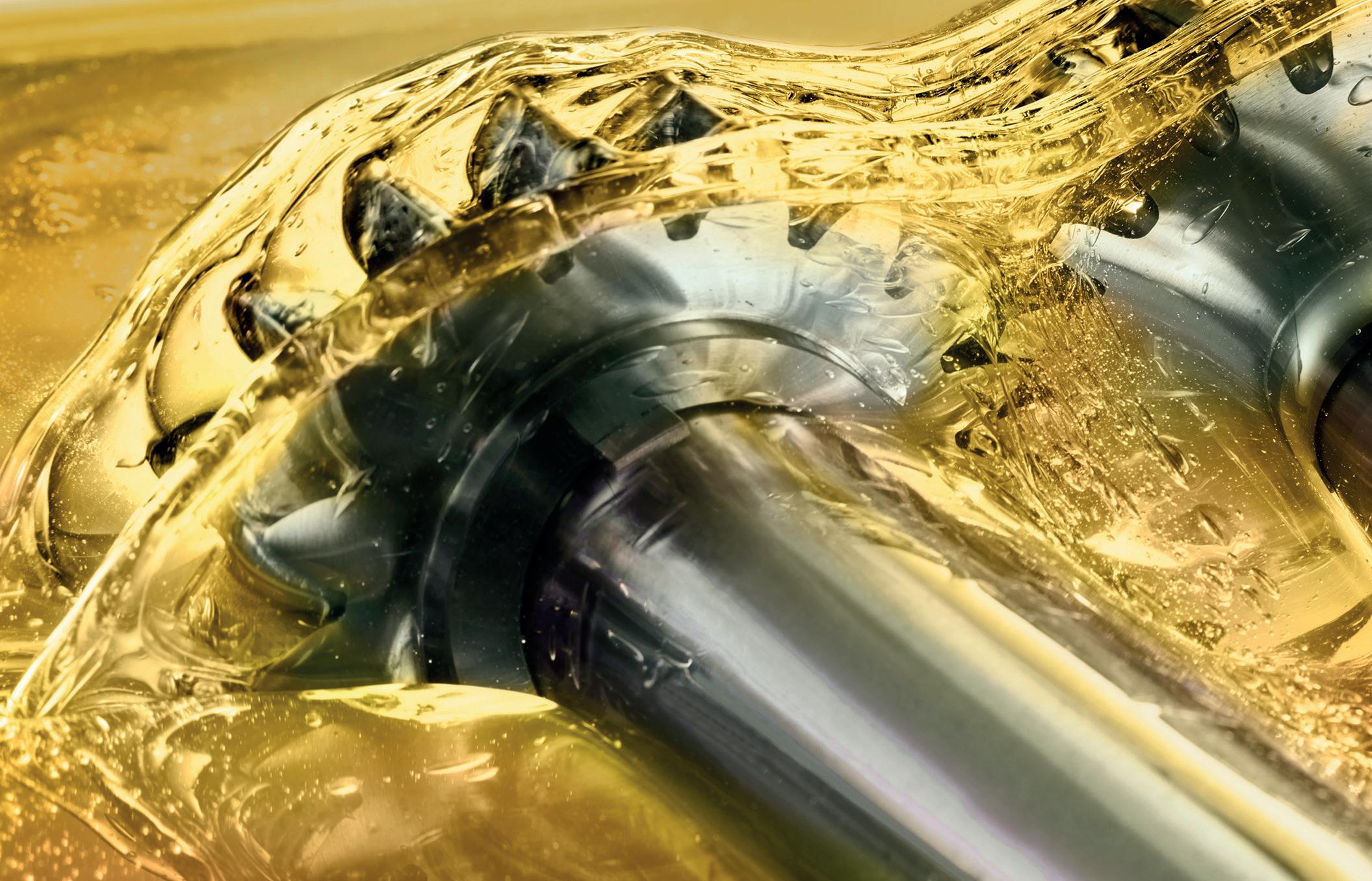
All images: Klüber Lubrication
While some organisations innovate from time to time, others do so continually.
A good example of this is the lubrication industry. Trains around the world operate in many different environments, whether that be usage (high-speed intercity versus low-speed metro) or environment (hot summers / cold winters / dry climates / high humidity). So a lubricant that is well suited to one application – such as on doors that are used infrequently on high-speed long-distance services in a cold country – will be completely different from the lubricant used for the same door application but on a high-frequency metro service in a hot and humid environment.
For this reason, global lubricant manufacturers are continually innovating, producing lubricants for all types of trains that operate under various conditions.
Angelika Dul, Sales Manager at Klüber Lubrication, explained: “With rail applications, it’s really important
to select the correct lubricant for the right application and this often starts at the beginning of the design process. That’s why working in partnership with train manufacturers is so critical.
“With our extensive experience in developing lubrication, we have a very strong R&D department in Munich, which works tirelessly on creating new, innovative solutions for specific applications. Very often, we work at the very early stages with the train and component builders to design and innovate products specifically for those trains and for those applications.”
But if almost every new product is, to some extent, an innovation, where does Angelika feel the next major innovation in railway lubrication technology will come from, or will it always be a continual development of existing products?
“The two big challenges the industry faces today are energy efficiency and environmental sustainability. All of our new, innovative products will have to take these aspects into account,” she replied.
There is no single solution that will address both challenges. However, developing products from advanced synthetic lubricants can significantly meet these challenges. Ultimately, this shift can enhance sustainability by extending the service life of the product. For example, doubling the life of lubricants used in train gearboxes has a number of benefits. Obviously, it will halve the amount of oil that needs recycling, but there are other benefits too.
“By improving the performance of the oil, you’re extending the maintenance intervals and that also creates certain levels of sustainability and ecological friendliness of the product,” Angelika said. “So, making a lubricant sustainable doesn’t always necessarily mean it has to be biodegradable, it could
also mean that it’s sustainable in the long run for the environment, as it reduces the need for production.”
Staying with the gearbox example, extending the life of the oil will also increase the service interval of the train maintenance task, as the life of the lubricant is the limiting factor. All of the gears, bearings and wheels require lubrication, so, if the lubricant performs better for longer, there is no need to service the whole mechanism so frequently, saving cost, downtime and wasteand that improves sustainability.
“Using Klüber products, especially for gearboxes, will extend maintenance intervals and reduce CO₂ emissions. We’ve got a number of field tests running across Europe to develop these new products and prove their effectiveness,” Angelika said.
“We need to work not only at the operator but also OEM (original equipment manufacturer) level to do this, we are often involved from the very early stages, before the train is fully developed. Then we can understand from the manufacturer how the train needs to perform, so we work in partnership with the OEMs to develop custom-made or tailor-made solutions for those particular applications.”
Because of the need to fine-tune every lubricant to the environment in which it will operate and to the function it needs to perform, Klüber engineers are constantly having to develop new products. On top of this, the drive to make products more sustainable and to improve their efficiency sets an extra challenge. Even products that have performed quite acceptably for years are being redeveloped to see whether a higher energy efficiency can be achieved.
“In innovation, the most important thing is that we like to think of ourselves as an innovative company,” Angelika concluded. “We provide innovative solutions for specific applications and we are really good at it. Although our research laboratories are based in Munich, Germany, we study applications and develop products to meet challenges for customers all over the world.
“The world is getting smaller all the time.”
The two big challenges the industry faces today are energy efficiency and environmental sustainability

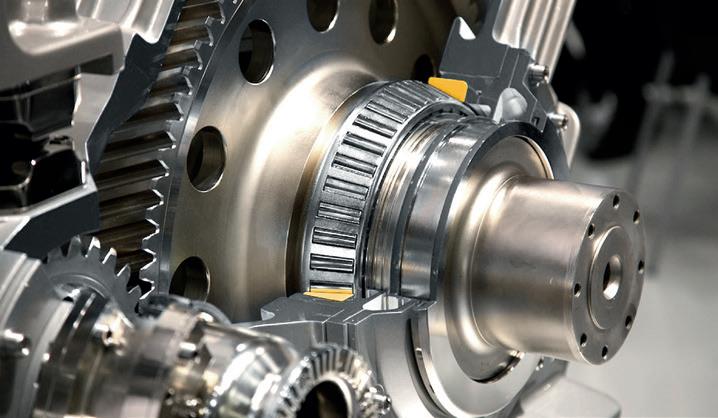

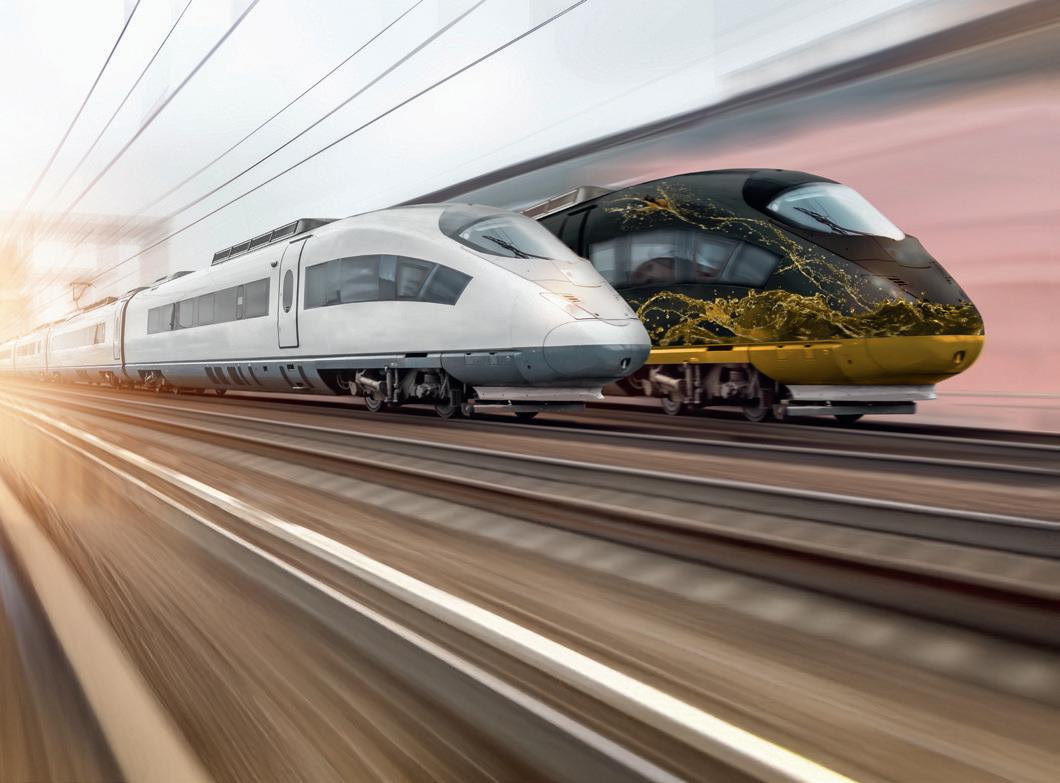


One Big Circle’s AIVR (Automated Intelligent Video Review) technology delivers safer, smarter, and data-driven solutions for rail infrastructure maintenance across the UK. This multi-award-winning system equips trains with either lightweight deployable or bespoke, fully integrated cameras to capture high-definition forward-facing video, thermal imagery, overhead line footage, line-scanning imagery, and more-providing a comprehensive view of the railway environment.
As a complete end-to-end remote inspection system, AIVR combines advanced data capture, secure online access, and powerful machine learning. Widely adopted by Network Rail, Tier 1 Contractors, train operators, and supply chain companies, it now supports more than 11,000 professionals across different rail disciplines. Users can securely review

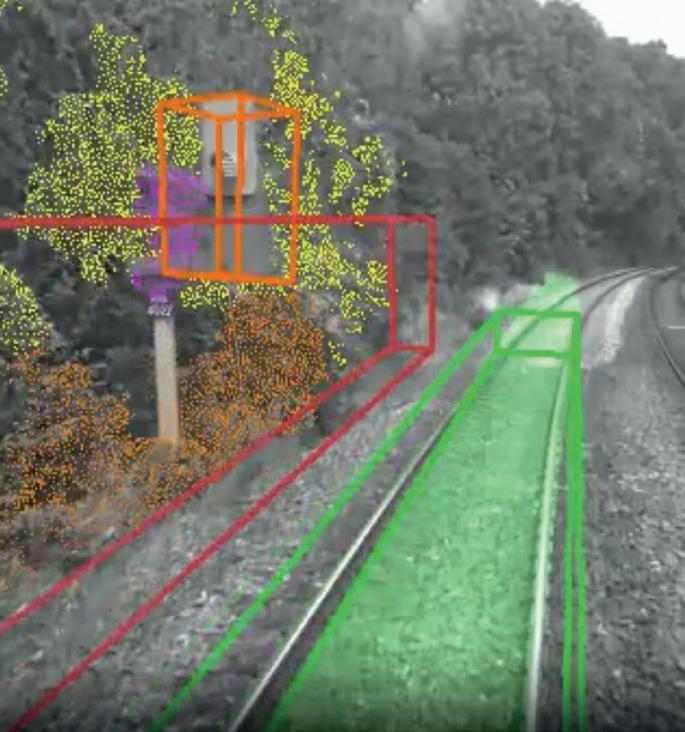


and analyse footage, measure distances, annotate images, compare site conditions over time, and collaborate from anywhere-without the need for extensive site visits.
Every hour reviewed on the AIVR Platform saves up to eight hours of traditional site inspections, significantly cutting risk, cost and environmental impact. Trusted across the industry, AIVR empowers engineers, planners, and maintenance teams to keep Britain’s railway moving safely, efficiently, and sustainablybuilding a smarter and more resilient railway network.
Contact us:
enquiries@onebigcircle.co.uk 0845 838 7178 www.onebigcircle.co.uk
Since 2018, in collaboration with Network Rail, CrossTech’s Hubble platform has helped transform how the rail industry analyses and understands its infrastructure assets.
Hubble works in a plug-and-play manner. Using sophisticated computer vision algorithms, it processes video footage from various sources, such as rolling stock FFCCTV and third-party cameras, and automatically detects whether the track and lineside assets are compliant to maintenance standards. In this way, complex visual data is converted into actionable intelligence at speed and scale, with thousands of miles of railway network analysed every month.
While many technologies can capture imagery and use basic object-detection analysis, the real innovation and capability lies in Hubble’s market-leading ability to interpret results automatically, using advanced AI
to set a new benchmark for efficiency, consistency and accuracy. This helps to enable proactive maintenance, improved safety and better decision-making across a range of rail assets domains such as signal, sign and level crossing sighting, ballast shoulder and OLE measurement, vegetation encroachment, species detection and track worker safety analysis. CrossTech’s collaboration with Network Rail exemplifies how artificial intelligence can deliver measurable impact, helping build a more reliable, sustainable and data-led railway.
Contact us: vision@crosstech.co.uk 0788 631 2648 www.crosstech.co.uk %
The MoniRail system is transforming how rail operators understand and manage wheel and rail interaction. Using compact, retrofittable sensors installed on passenger or freight trains at the body, bogie and axlebox levels, it continuously measures motion, vibration and other performance indicators during normal operation. The system converts these signals into meaningful track geometry parameters, including vertical and lateral alignment, twist, curvature, cant and cyclic top. It also derives vehicle stability metrics such as hunting, bogie instability and ride comfort indices.
In collaboration with Network Rail, MoniRail has developed algorithms that accurately match Network Rail rough ride reports. The system can also identify features such as squats and rail corrugation that contribute to wear.
The MoniRail solution enables operators to determine
whether issues originate from the track or the vehicle, supporting faster, evidence-based maintenance decisions. It facilitates predictive maintenance and helps both rolling stock and infrastructure teams assess the effectiveness of maintenance activities, ensuring resources are targeted where they are most needed.
Beyond performance monitoring, the solution supports passenger comfort by identifying areas of rough ride and poor alignment that affect journey quality. Its cloud-based platform and APIs allow engineers to visualise data, compare fleets and share findings instantly.
Ewan
at
looks at innovation on the permanent way – the backbone of the railway.

nnovation within the UK rail industry is often associated with new trains, digital signalling, or futuristic technology. Yet, some of the most meaningful progress is happening out on the permanent way, where safety, efficiency, and sustainability are won or lost on the ground. At KGJ Price Railway Contractors, innovation isn’t a department or a buzzword; it’s embedded in how we plan, build, and deliver every job.
Our focus as a business is on the practical, day-to-day improvements that enable more efficient renewals and maintenance while supporting the industry’s drive toward decarbonisation and reliability. As access windows get shorter and standards more demanding, success depends on smart preparation, modular delivery and clear collaboration.
One of the biggest shifts we have made is standardising early-stage buildability reviews across every opportunity and project. By involving our site engineers, planners and supply chain partners at the design stage, we identify opportunities for off-site fabrication, modular track components and streamlined logistics. This reduces time on track, lowers manual handling and significantly improves safety outcomes. Every hour we save on the infrastructure is an hour of risk removed from the workforce.
We’re also investing time and research into repeatable construction methods for rail civils and track activities, with an aim of building a library of solutions that can be quickly deployed, assured and
adapted to local conditions. Adopting this approach not only accelerates delivery but also helps our clients achieve consistent quality, cost certainty and carbon reduction.
Digital tools have become essential in enabling this change. 3D and 4D models now inform everything, from utility detection to possession planning. By linking design, survey data and construction programmes, we can visualise constraints, prevent clashes and communicate worksite risks clearly to everyone involved. But technology is only valuable when it drives an outcome, for example, fewer possession overruns, fewer variations and more predictable delivery. That’s the test we, as an industry, apply to every innovation.
Safety remains the foundation of our innovation agenda. Every new method, tool or process must first be assessed first through a safety lens. Innovations that reduce time on or near the line, simplify lifting operations and improve site ergonomics consistently deliver the best performance outcomes. Whether it’s through modular components, improved lighting or smarter programming, we’re proving that safer delivery can also mean more efficient delivery. Collaboration across the supply chain is vital. The most successful innovations are those developed jointly between client, designer and contractor –tested early, shared openly and scaled quickly. We’ve built strong partnerships with both Tier 1 contractors and technology SMEs, combining
agility with technical depth. That allows us to pilot new methods on live sites, measure the benefits and ‘bank’ what works into our standard operating procedures.
As we look ahead, the challenge for the rail sector is not just to innovate, but to industrialise innovation to make better methods repeatable, assured and affordable across projects. The permanent way is the backbone of our railway, and modernising how we deliver it is key to building a more resilient, lower-carbon and cost-effective network.
At KGJ Price Railway Contractors, we believe the future of innovation lies not in reinventing the wheel, but in refining its fitment, alignment and maintenance – smarter, safer, and more sustainably than ever before.
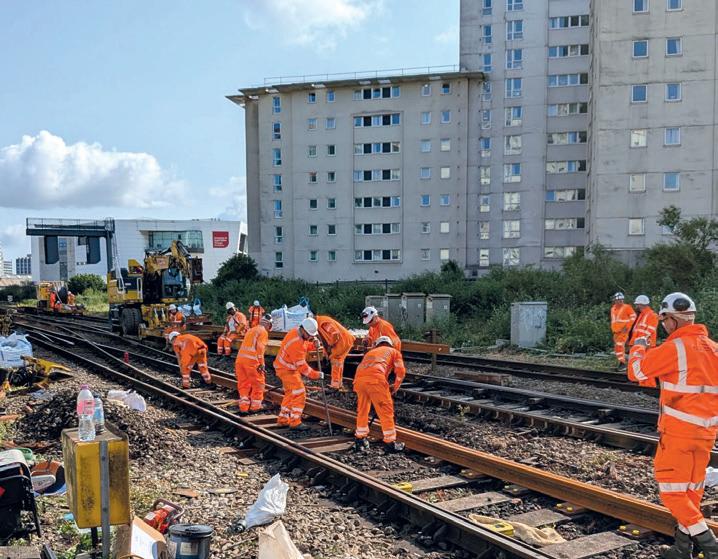
Simon Hochhauser, Founder and CEO at PiPcall, writes about mobile communications and the importance of embracing solutions designed for how rail workers actually operate today.
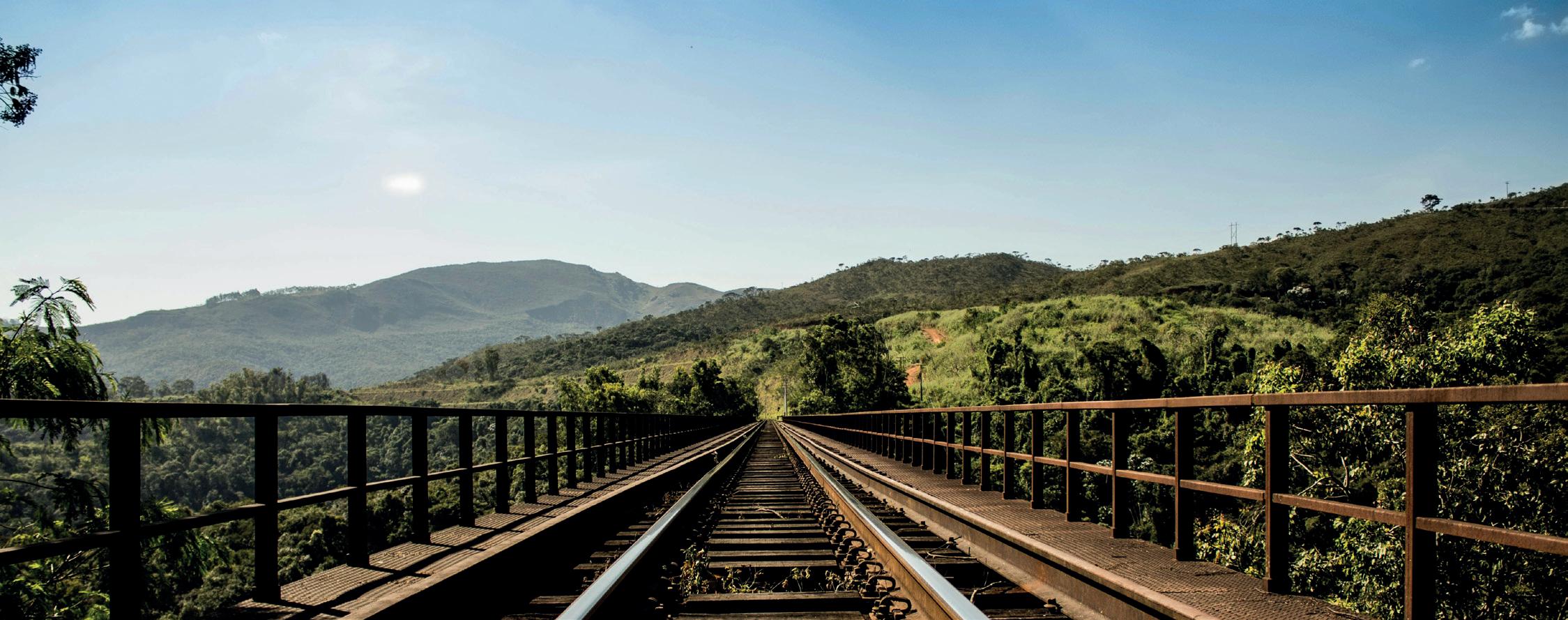
Picture this. You’re an engineering supervisor working a blockade, managing the worksite, coordinating machines and isolations, and ensuring the line is safe before handing it back. At the end of the shift, you follow procedure: lifting protective boards before surrendering the site back to the person in charge of a possession (PICOP). You lift the boards at one end; someone else handles the other.
But they lift only two boards instead of four. The error creates a serious safety risk.
When the investigation begins, it comes down to ‘my word against theirs.’ You insist you gave the right instruction. They say otherwise. With no call recording, there’s no way to prove what was really said. You’re stood down from safety-critical duties while the investigation proceeds-effectively made the scapegoat for an error that wasn’t your fault.
Surely this couldn’t happen in 2025, with all our technological advances and safety protocols? Wrong. This is exactly what happened to David*, a contractor and Engineering Supervisor in the rail industry. His career was put on hold, his reputation questioned, all because of the absence of something most of us take for granted in other industries: a simple, verifiable record of a safety-critical conversation.
Currently, teams rely on workarounds like photographing equipment to prove they’ve accounted for everything, but these are imperfect safeguards. Clear, recorded communication remains the best form of protection.
The compliance challenge no one’s talking about
Yet here’s the troubling part: as rail moves towards greater transparency and accountability, the industry still has a blind spot when it comes to mobile communication. This is changing, though perhaps not as quickly as it should. Network Rail’s NR/L3/ OPS/301 framework, effective from March 2026,
mandates voice recording for all PICOPs (Person in Charge of Possession) and ESs (Engineering Supervisors), and recommends it be applied to all safety-critical roles. Every call between a COSS and a signaller, every instruction from an engineering supervisor, every confirmation from a machine controller would ideally be capable of being captured, stored, and made available for audit.
But here’s what many haven’t fully grasped: this doesn’t just apply to Network Rail employees. It extends to contractors, subcontractors, and umbrella workers across its entire supply chain. We’re talking about thousands of trackside workers who coordinate safety-critical work, often using their own mobile devices.
Yet with fewer than 12 months until the deadline, significant portions of the supply chain remain exposed. Traditional recording systems were designed for fixed roles and locations-they never anticipated the reality of modern rail work where contractors use personal smartphones to coordinate night works, where supervisors manage multiple sites from mobile devices, where safety-critical decisions happen wherever the work demands.
The challenge of mobile call recording in rail isn’t just technical-it’s cultural and operational. Any solution needs to work seamlessly across bring-your-own-device scenarios, respect privacy boundaries between personal and work use, require minimal training for workers already juggling complex safety procedures, and integrate into existing audit processes without adding administrative burden.
This is where mobile-first recording technology represents genuine innovation for the sector. Modern solutions automatically record every business call made through a dedicated app, secure recordings in UK-based cloud storage with full audit trails, work across both personal and
company-owned devices, and provide administrators with instant access for Communication Review Groups or incident investigations.
The beauty of this approach is its simplicity. A trackside worker installs an app, and from that moment, every safety-critical call is captured without any additional thought or action required. No new hardware. No complex systems. No depot visits for setup. No integration with existing rail telecoms systems required. For administrators, call recordings can be searched by date, individual, or team, and retrieved in seconds when needed for compliance sampling or post-incident review.
Let’s return to David. If his communications during that blockade had been recorded, the investigation would have shown exactly what instructions were given and when. Instead, it became a case of conflicting accounts, and the contractor bore the consequences.
As rail moves towards nationalisation and the creation of Great British Railways, we’re entering an era defined by transparency and accountability. The expectation for verifiable, recorded communication will only intensify. Yet with the March 2026 deadline approaching, the industry faces a straightforward choice: continue with systems that leave gaps in mobile communications, or embrace solutions designed for how rail workers actually operate today-mobile, flexible, and often using their own devices.
The technology exists. The regulatory framework is clear. The only question is whether organisations will act quickly enough to protect both their compliance standing and, more importantly, their people. Because the next David could be making a call right now that changes everything -and unless we’ve closed these gaps, there might be no record of what was actually said.
* For confidentiality reasons, the name of the individual has been changed.

Protect your Sta and Equipment


Rail Depot Safety Experts
- Depot Protection Systems (DPS)
- Depot Control Systems (DCS)
- Combined DPS/DCS
- Locally Operated Points Systems (LOPS)
- SIL 2 Rated Systems as Standard
+44 (0)1621 743 743
info@ rstclass-safety-control.co.uk
www.FirstClass-Safety-Control.co.uk
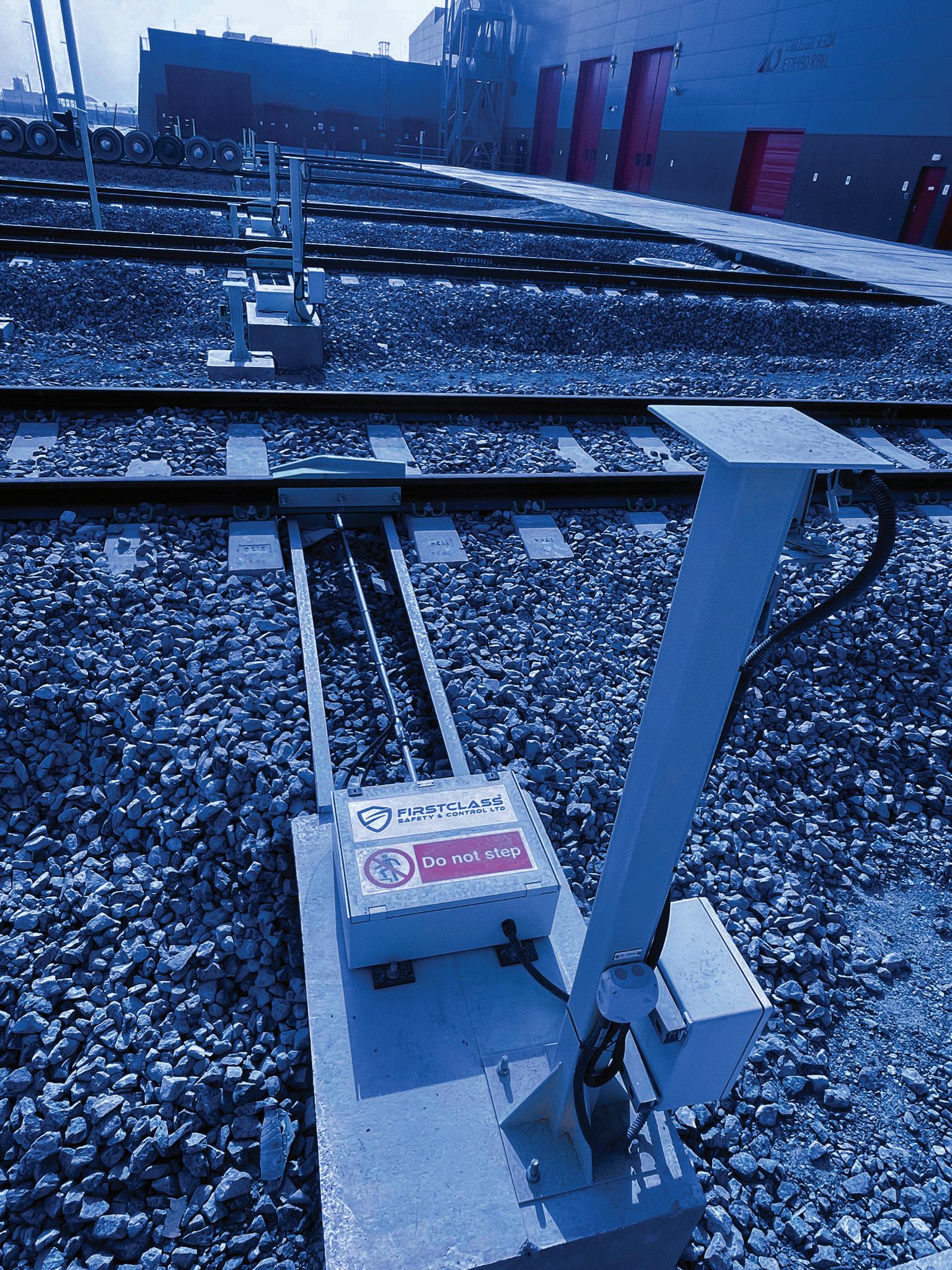
+44 (0)1621
info@ rstclass-safety-control.co.uk
www.FirstClass-Safety-Control.co.uk
When someone listens, people will make the right call.
Thousands of organisations in the transport sector are members of CIRAS. We build a strong listening partnership with our members to improve safety. Our confidential safety hotline provides extra listening to help staff make the right call and report their concerns even when they feel they can’t use other channels. When we listen, we learn.
Learn how you can build your listening partnership with CIRAS at ciras.org.uk/rightcall.

We find safety in listening. • Depot Protection Systems (DPS) • Depot Control Systems (DCS) • Locally Operated Points Systems • SIL 2 Rated Systems as Standard Rail Depot Safety Experts Protect your Sta and Equipment
David
how adopting
already in use in other sectors can bring major benefits to rail.

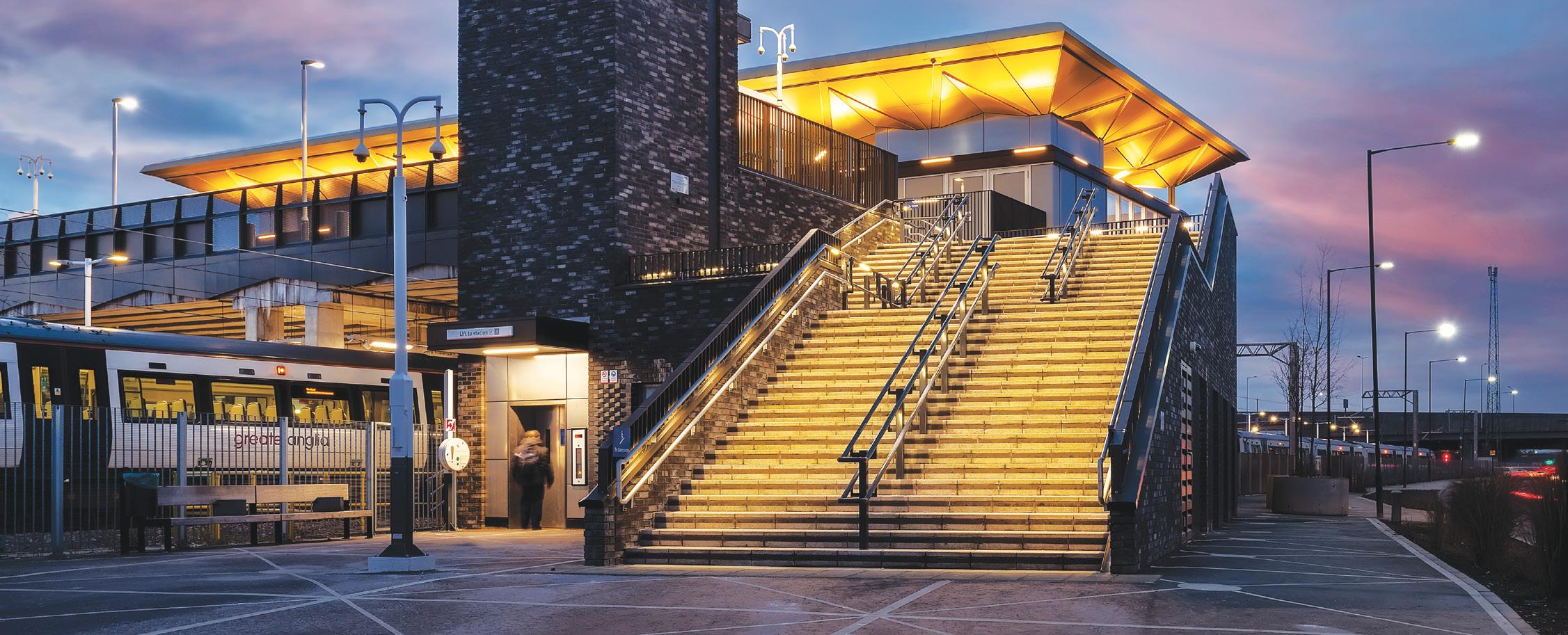
Innovation is often spoken about in terms of major breakthroughs — the next big technology that will transform the industry. But sometimes, innovation is about using what is already available more effectively. In rail, lighting offers a clear example. Proven technologies exist today that can deliver meaningful improvements in efficiency, safety, and sustainability. The challenge is not invention, but adoption.
One of the most immediate opportunities lies in lighting controls. Modern systems allow lighting to respond to real needs rather than operating at a fixed output. Dimming during quieter periods, integrating emergency lighting functions, or adapting to specific environmental conditions all reduce unnecessary energy use while enhancing safety and resilience.
These capabilities are already widely used in other sectors, yet the rail industry has been slower to embrace them. By making greater use of controls, operators can generate both cost savings and environmental benefits without compromising reliability.
Futureproofing is the other side of this equation. The way luminaires are specified today can determine whether they are flexible enough to adapt to tomorrow. Zhaga sockets provide a standardised connection point that allows sensors and communication devices to be added with ease. This means luminaires can be upgraded with features such as motion sensors for
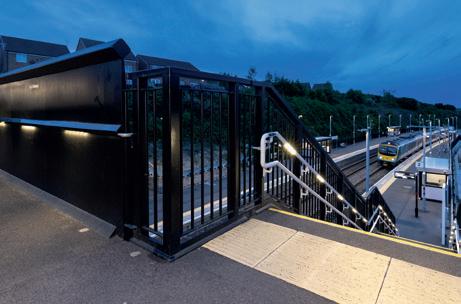
adaptive lighting, Bluetooth connectivity, or remote monitoring gateways-all without modifying or replacing the entire fitting. It’s a straightforward way to keep lighting infrastructure relevant as technology develops.
In a sector where assets often remain in place for decades, that kind of foresight matters.
Alongside controls and futureproofing, solar power is a growing area of opportunity. The technology is well established in other industries, but rail has been cautious in its uptake. That caution is understandable: Rail is a safety-critical environment with long approval processes. However, progress is being made, and the potential benefits are too great to ignore.
Solar lighting offers particular value in areas where infrastructure is limited. Car parks, smaller stations, and pathways without an existing power supply can all benefit from solutions that avoid costly and disruptive trenching. Even in areas with mains power, hybrid solar systems — which combine renewable generation with mains backup — offer a resilient and sustainable alternative. These are not experimental ideas; they are proven solutions that can be tailored to the specific requirements of the rail environment. At DW Windsor, we have seen first-hand how these innovations can be applied in practice. Our track


record includes delivering lighting solutions that incorporate advanced controls, future-proofed designs, and solar technologies. The common thread across all these projects is collaboration: working closely with rail clients to understand the challenges, reduce risk, and deliver solutions that are both practical and forward-looking.
The rail industry is under increasing pressure to improve efficiency and meet sustainability goals
The rail industry is under increasing pressure to improve efficiency and meet sustainability goals. Lighting may not always be the first item on the agenda, but it can make a significant contribution. By adopting controls to reduce energy use, specifying futureproofed luminaires to protect long-term value, and exploring the opportunities presented by solar power, rail can take meaningful steps towards a more efficient and sustainable future. Innovation in lighting doesn’t mean waiting for the next breakthrough. The technology is here today. What’s needed is the confidence to apply it. At DW Windsor, we believe that by working together, we can help the rail sector unlock the benefits of innovationfor today, but for the decades ahead.
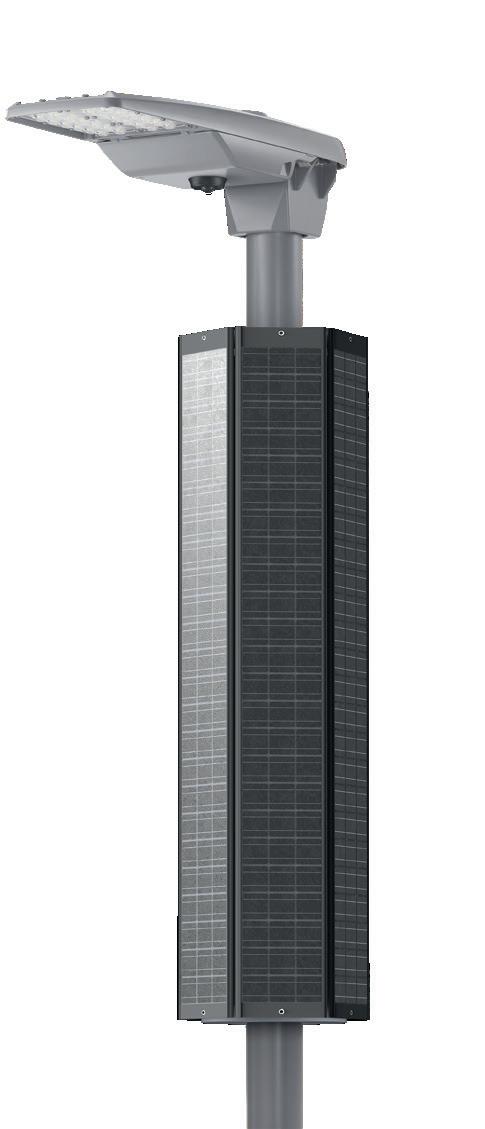


Supported by Strategic Partners







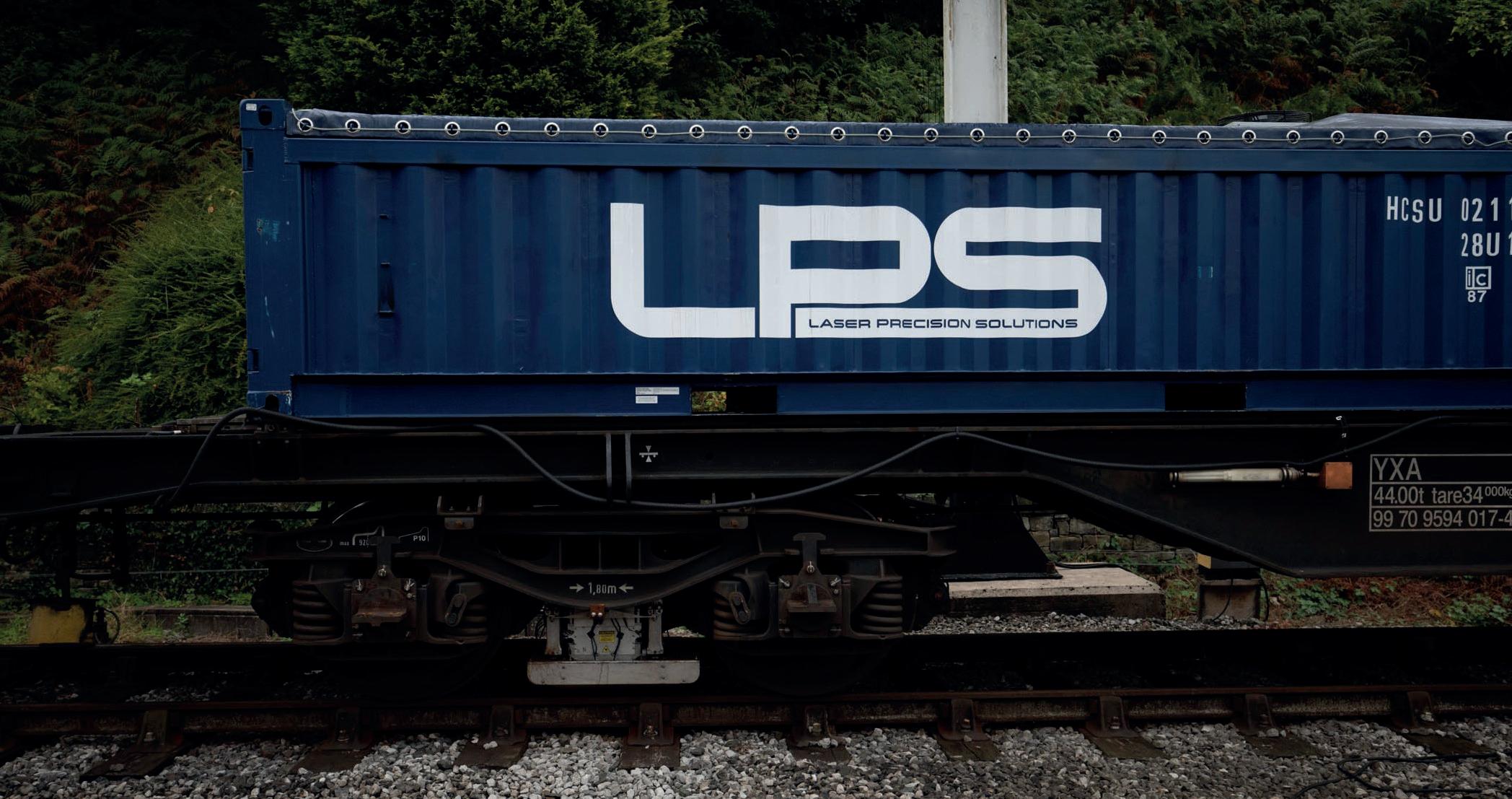
Autumn presents a major challenge for rail operators: slippery railheads caused by leaf residue, rust, oil, and other contaminants. These conditions reduce adhesion, leading to slip-slide incidents, delays, and increased wheel wear. Traditional cleaning methods are often slow, abrasive, or limited to off-peak hours-making it difficult to keep trains running on time and on budget.
Laser Precision Solutions’ (LPS) LaserTrain is a proven, non-abrasive rail cleaning solution designed to restore adhesion and reduce slip-slide risk in the most challenging conditions. Using laser ablation, the system removes tough contaminants, leaf residue, rust, and oil with precision, restoring railhead friction without water, chemicals or abrasive materials. With the ability to safely clean at any speed up to 75mph, LaserTrain can operate during peak service hours without line closures and disruption to passenger timetables.
Built for heavy-duty service, the system is engineered to run 124,000 miles per season with minimal downtime for system maintenance. Precise laser cleaning minimises unnecessary wheel wear, extending wheel life and contributing to maintenance cost savings.
Autonomous controls eliminate the need for trackside workers, reducing exposure to hazardous environments, and each laser pass boosts traction for 24 hours, ensuring consistent performance and safety. System cleaning capabilities have recently expanded to 99 per cent of the rail network, up from 80 per cent thanks to shield design upgrades, allowing it to operate through stations and over switches and crossings.
Two LaserTrain models are available to suit different network needs:
The Container Model – A self-contained, 20-foot half-height container unit designed for rapid
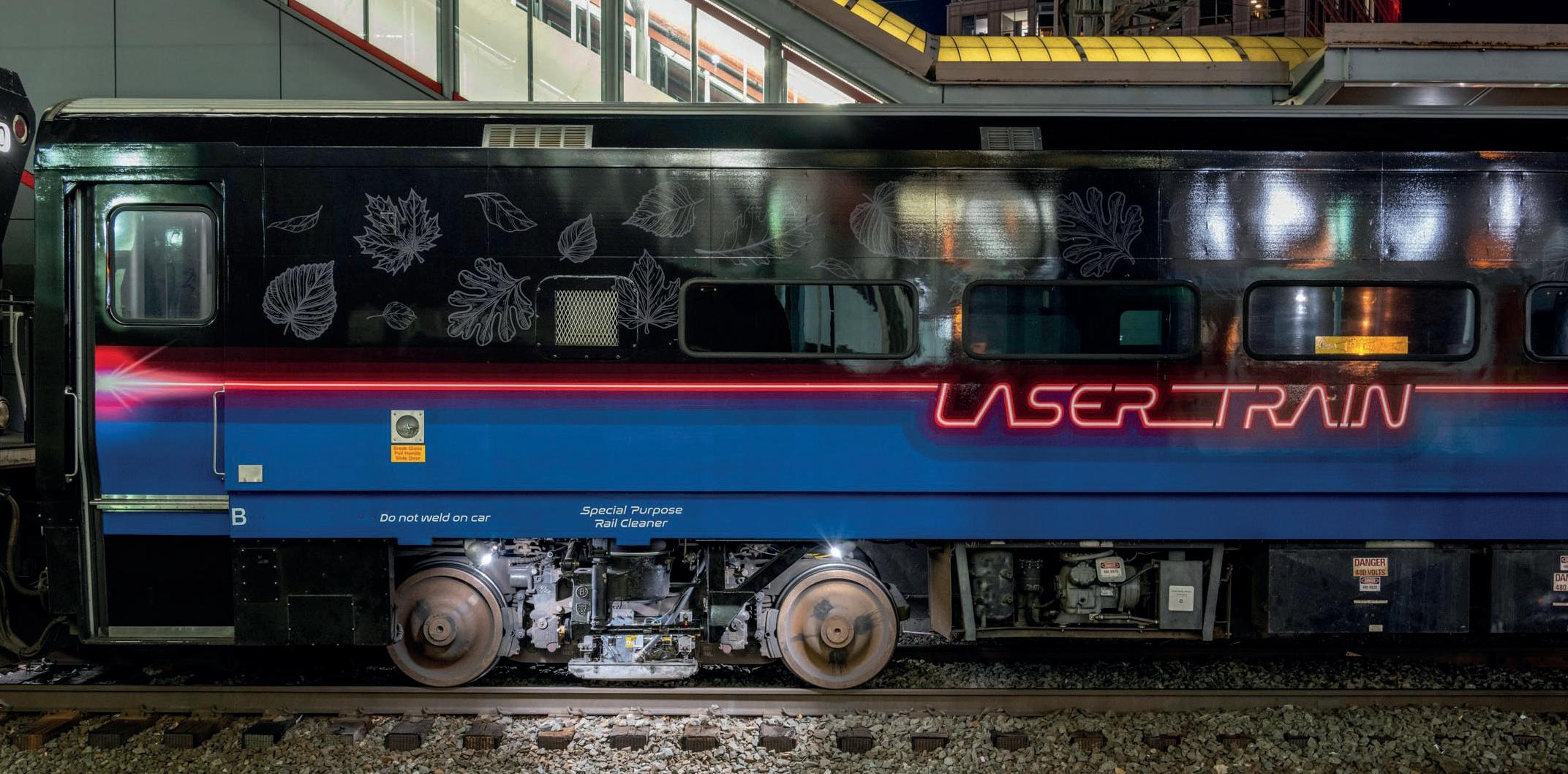
deployment across the UK, EU and US. It can be mounted on a Y25 bogey and is compliant with relevant loading gauge standards. In 2026 this model will become even easier to integrate and maintain, delivering broader cleaning coverage, increased availability, and faster implementation with:
• Field maintainability, removing workshop-based servicing.
• Hot-swappable components for uninterrupted service with minimal downtime.
• Bi-directional capability on most flat wagons, eliminating reliance on locomotives.
• Compatible with standard 20ft mounting units for rapid deployment across diverse fleets.
Retro-Fit Model – A custom model sized to the donor car, repurposing retired or unused railcars into fully functional LaserTrains.
Client results confirm LaserTrain’s effectiveness:
The MTA Metro North Railroad have reported reductions upto 66 per cent in slip events and 70 per cent in train delays, alongside measurable reductions in wheel maintenance costs and improvements to On-Time Performance.
One LaserTrain can replace multiple traditional rail cleaning units, expanding coverage while cutting cost per mile. With flexible service and support options, it’s easy to put into service and keep running reliably.

E N H A N C E D F R I C T I O N
L E S S T R A C K W E A R
Remove railhead contamination fast for optimal adhesion, less flat spot maintenance and reduced costs. Discover LaserTrain.
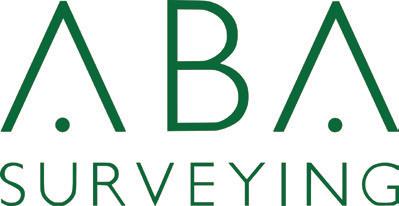


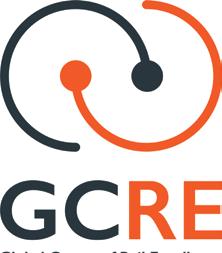
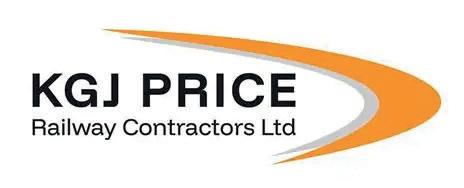

ABA Surveying is a leading UK-based survey company providing high-precision dimensional surveying services throughout the UK, Ireland and Europe. Specialising in BIM compliant datasets of the built environment, the company operates across the transport, architectural, heritage, structural and engineering sectors.
Aarvee is a global leader in infrastructure consultancy, with a proven track record of delivering world-class solutions across multiple sectors. Established with a commitment to technical excellence, simplicity in engineering and innovation, Aarvee has consistently delivered many complex and transformative projects across the globe.
We provide the solutions to the problems for the leading train operators, rolling stock companies and original equipment manufacturers. We have the tools, expertise and knowledge to keep your trains on the lines and your passengers happy.
The Global Centre of Rail Excellence will be a purpose-built site for world-class rail research, testing and certification. The facility will support the development of new rolling stock; the testing of net zero rail infrastructure and the faster deployment of new rail technologies and innovations.
At KGJ Price (Railway Contractors) we are dedicated to shaping the future of railway infrastructure with precision, innovation, and an unwavering commitment to safety. With over 40 years of experience in the railway contracting industry, we have established ourselves as a leader in delivering top quality services that enhance the performance and reliability of railway network across the nation.
LC Switchgear (LCS) provide whole life cost-effective solutions for the railways. Offering a comprehensive range of DC switchgear, incorporating on load and off load disconnectors and fast acting contactors, designed to provide low maintenance, cost-effective solutions for railway isolation and bonding requirements.
The Railway Industry Association (RIA) represents 450+ railway companies across the sector. Our priorities are to champion and help build a bigger and better, dynamic rail supply sector for our members, help to grow a sustainable, high-performing railway supply industry and to export UK rail expertise and products.



The UK’s largest rail infrastructure trade show, bringing the railway infrastructure supply chain together to connect, collaborate and achieve business growth! Organised by Jobson James Rail – the specialist rail insurance broker, Rail Infrastructure Networking (RIN) events take place annually in London, Glasgow, Derby, and Harrogate.
Unipart is a supply chain performance improvement partner. We design, make, move and improve components in our customers’ supply chains, keeping their operations and assets moving and working better, for longer. Through our commitment to continuously driving operational efficiencies, we improve performance-saving time, cost and carbon.
PiPcall enables UK rail organisations to comply with NR/L3/OPS/301 by recording safety-critical mobile calls, even on personal mobiles. Our Mobile+ platform delivers network-level call recording, secure cloud storage, and full admin control, without new SIMs or phones. Simple, compliant, and ready for March 2026.
The MTA Metro North Retro-Fit LaserTrain
Contact us:
+44 (0) 148 379 7111 info@abasurveying.co.uk www.abasurveying.co.uk
Contact us: uk@aarvee.net
Contact us: +44 (0) 190 822 4140 info@schaltbau-bode.com www.bode-global.com/en
Contact us: +44 (0) 333 533 1639 enquiries@gcre.wales www.gcre.wales
Contact us:
+44 (0) 292 088 9220 enquiries@kgjprice.co.uk www.kgjprice.co.uk
Contact us: +44 (0) 127 377 0540 sales@lcswitchgear.com www.lcswitchgear.co.uk
Contact us: +44 (0) 207 201 0777 ria@riagb.org.uk www.riagb.org.uk
Contact us:
+44 (0) 784 983 5412 info@rinevents.co.uk www.rinevents.co.uk
Contact us: +44 (0) 130 273 1400 contactus@unipart.com www.unipart.com/ rail-public-transport
Contact us: +44 (0) 330 094 8080 sales@pipcall.com www.pipcall.com/so/ rail-industry-mobile-compliance

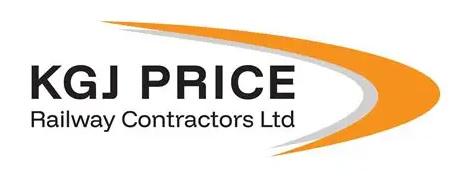

The UK’s rail industry is rapidly evolving as new technologies become available, putting pressure on the associated energy infrastructure.
On every scheme, we take the time to understand your strategic energy requirements, ensuring that we always deliver the best outcomes possible.

Scan here to get in touch